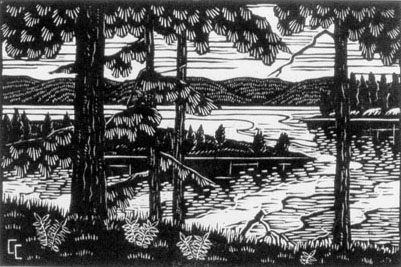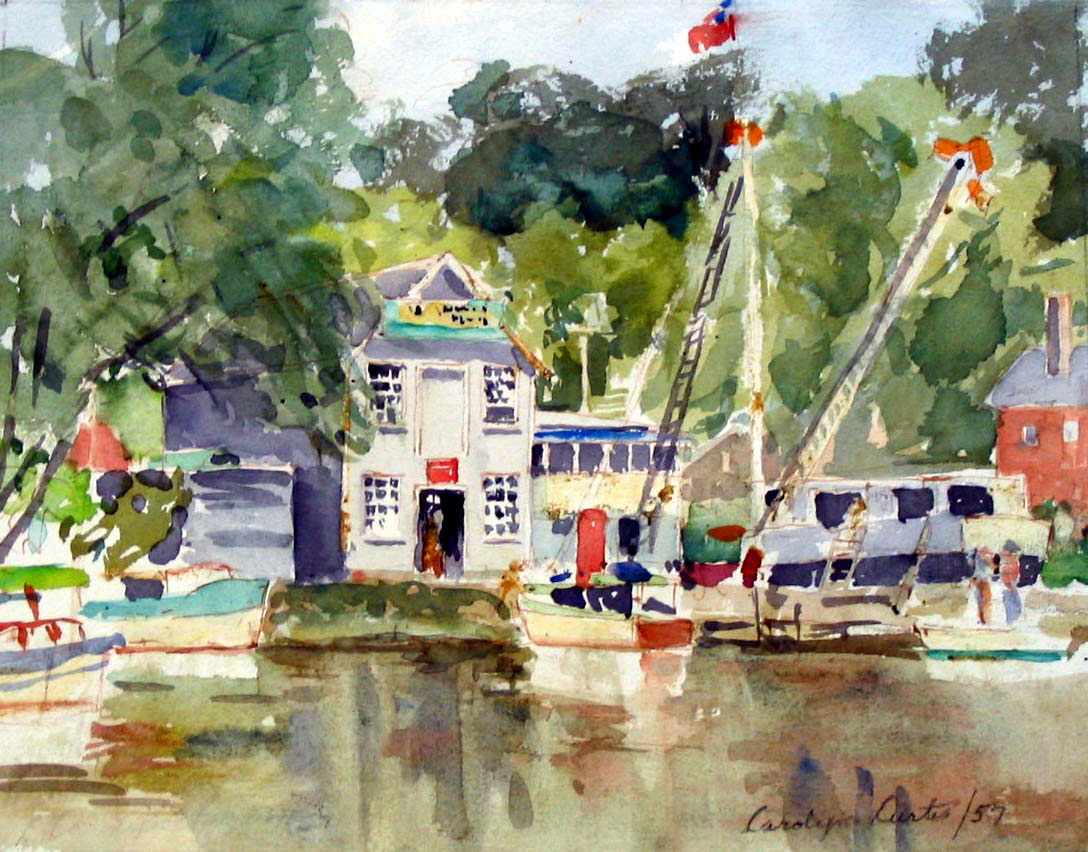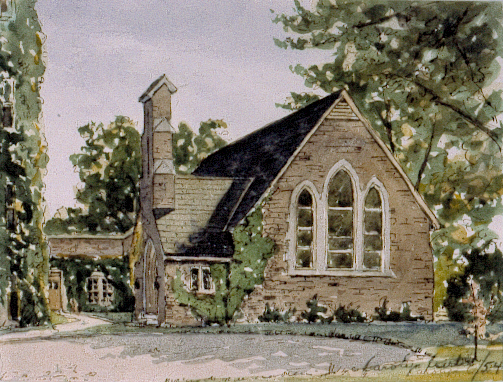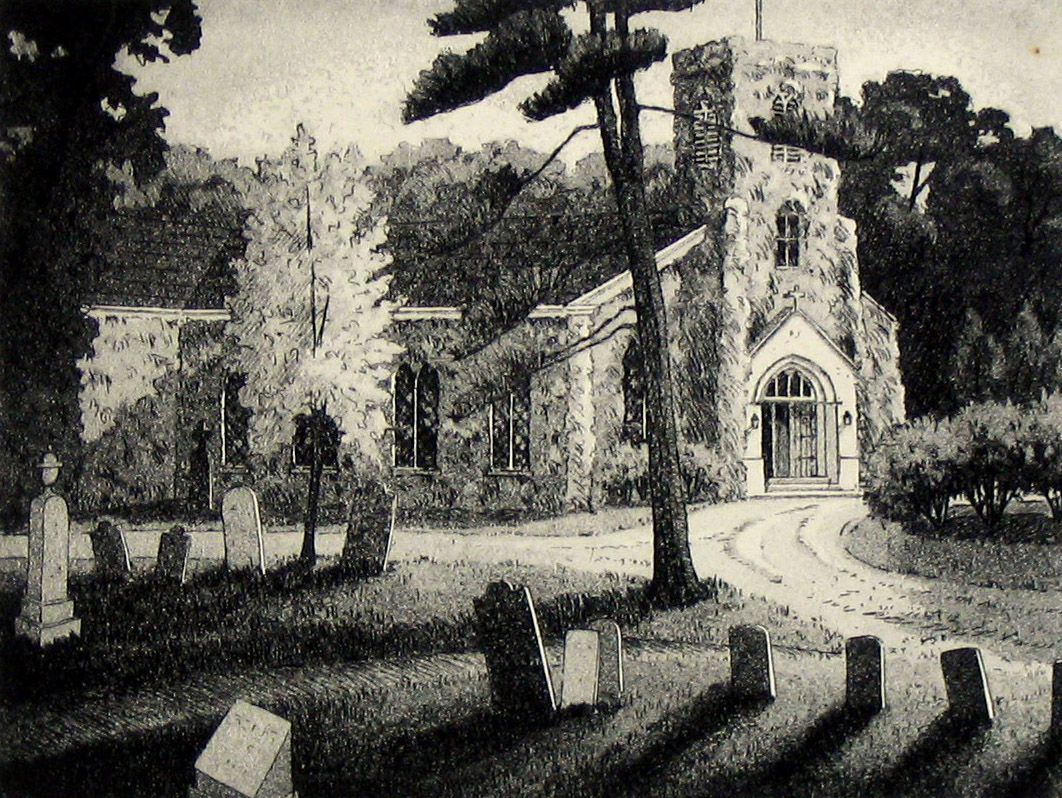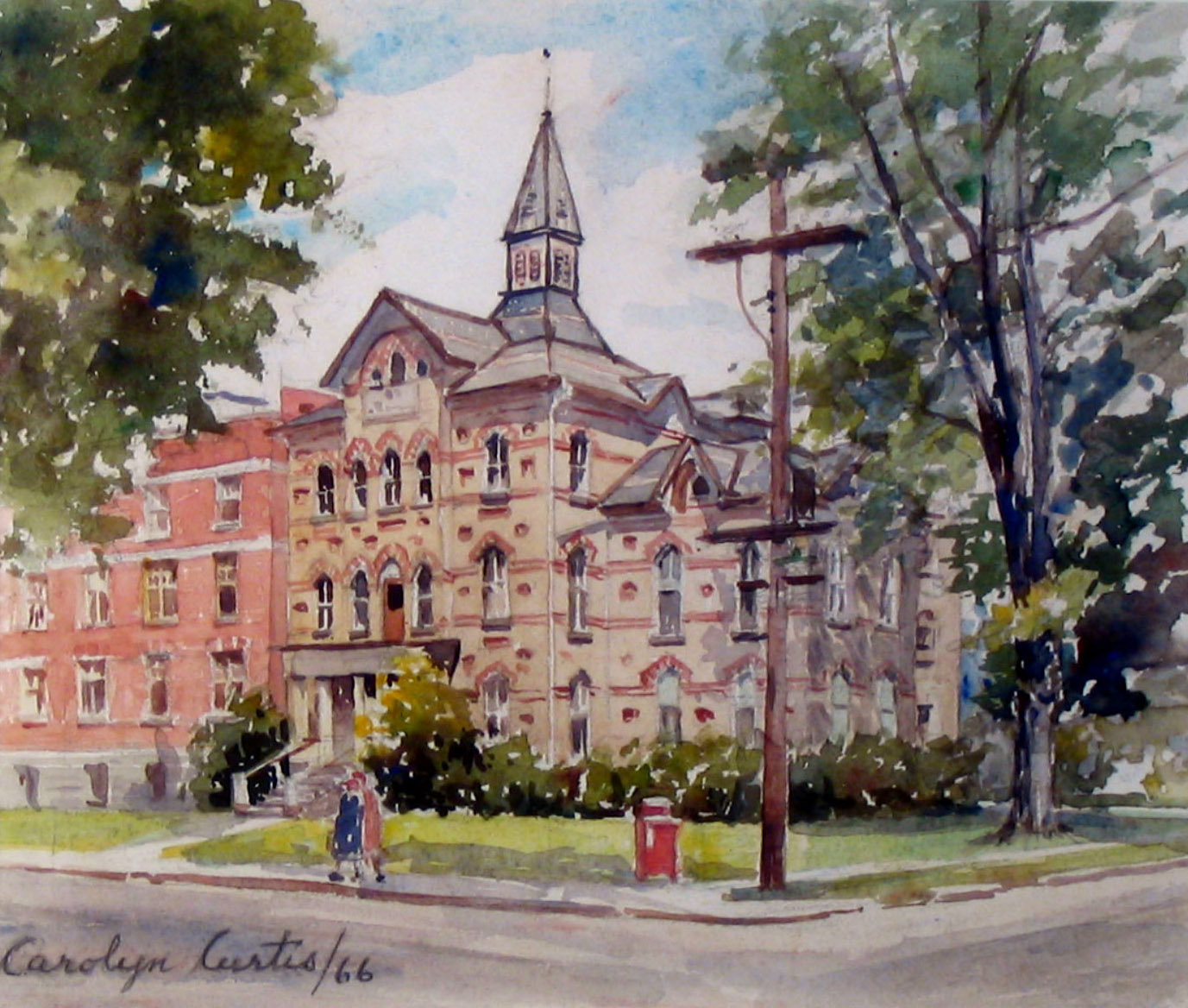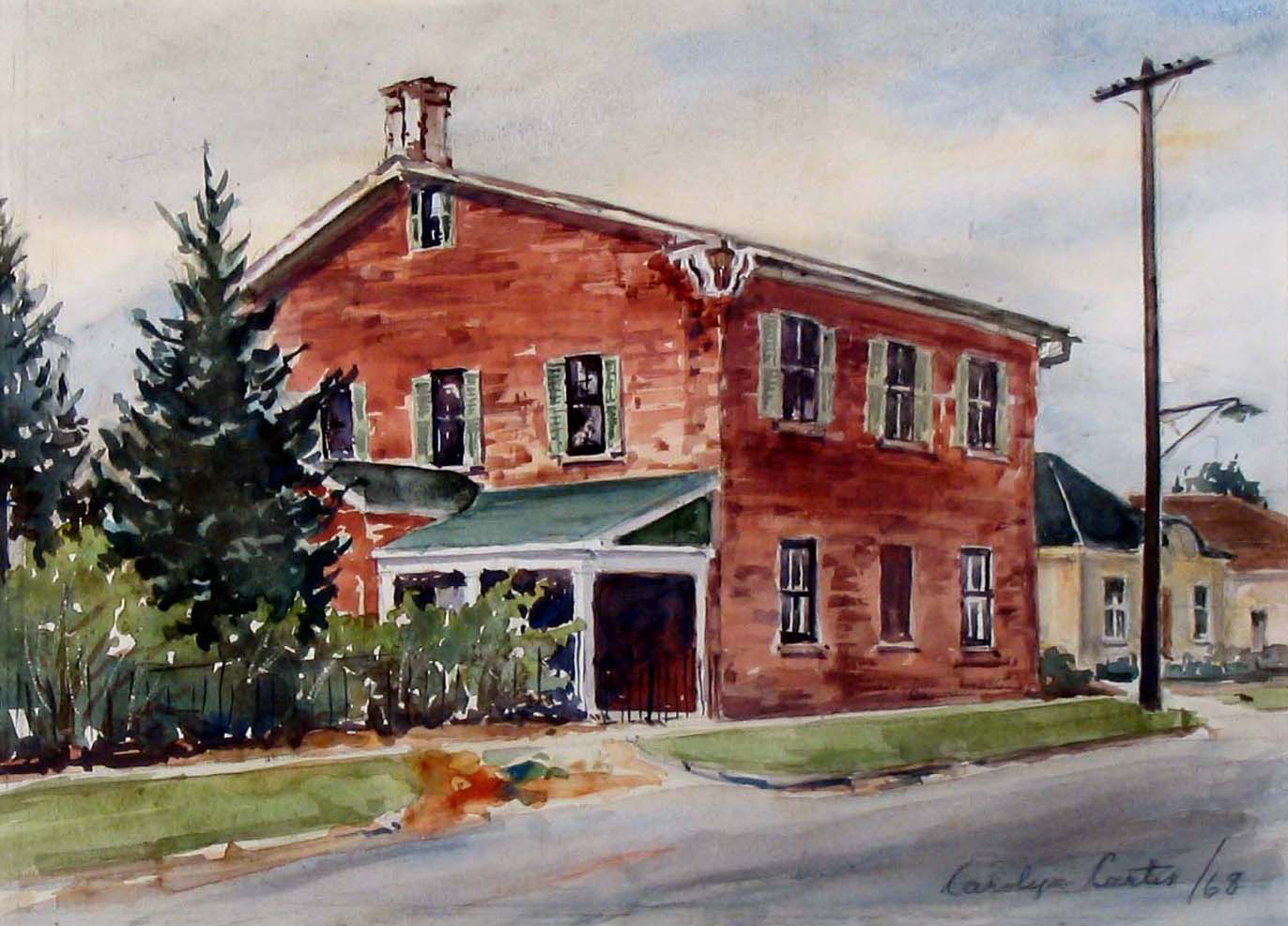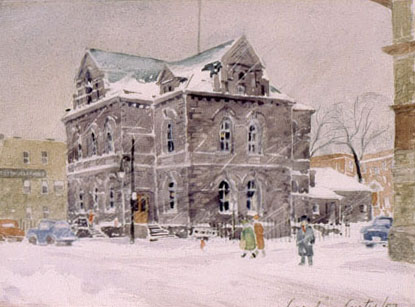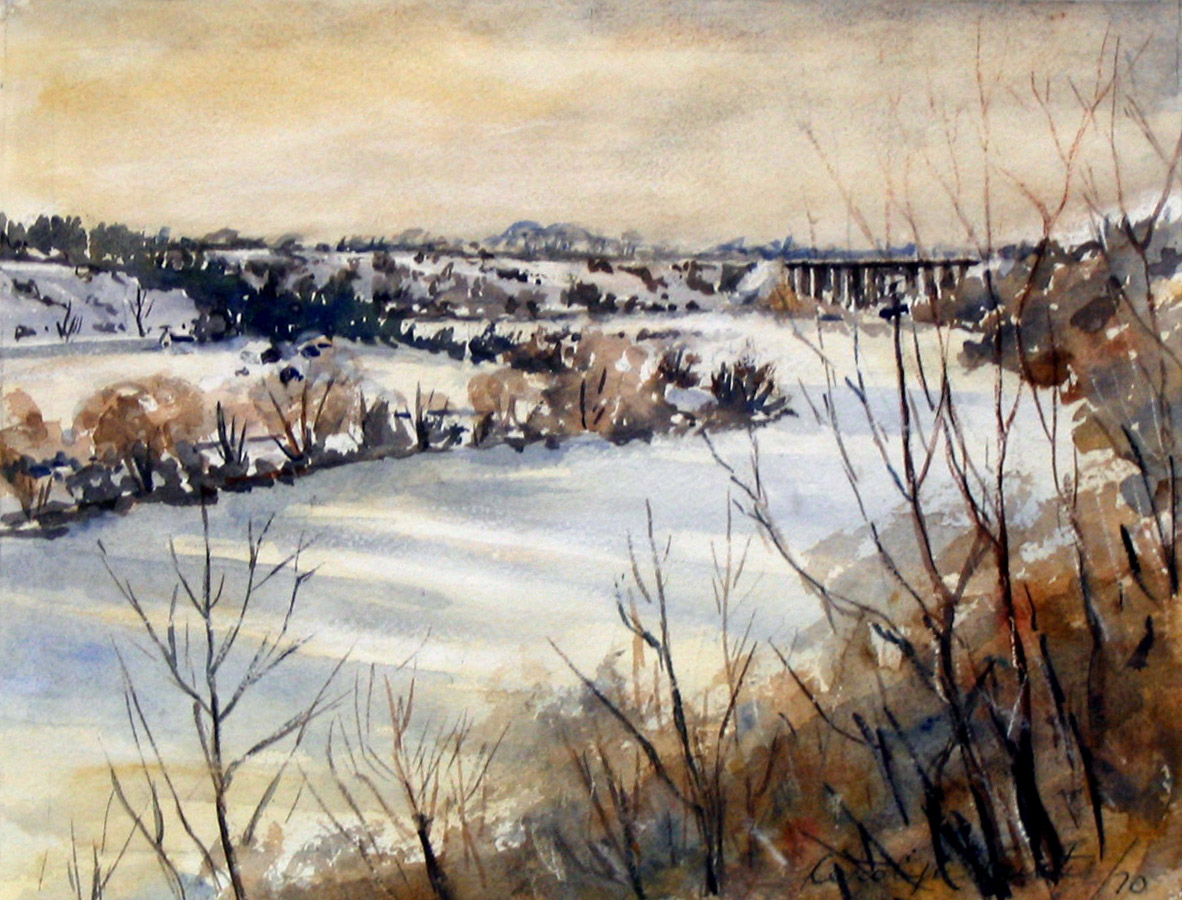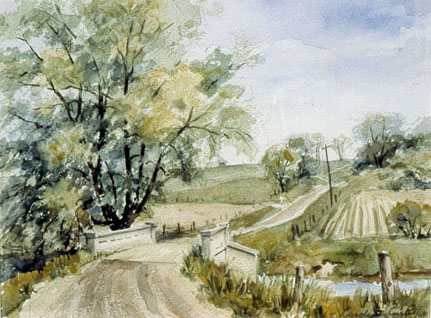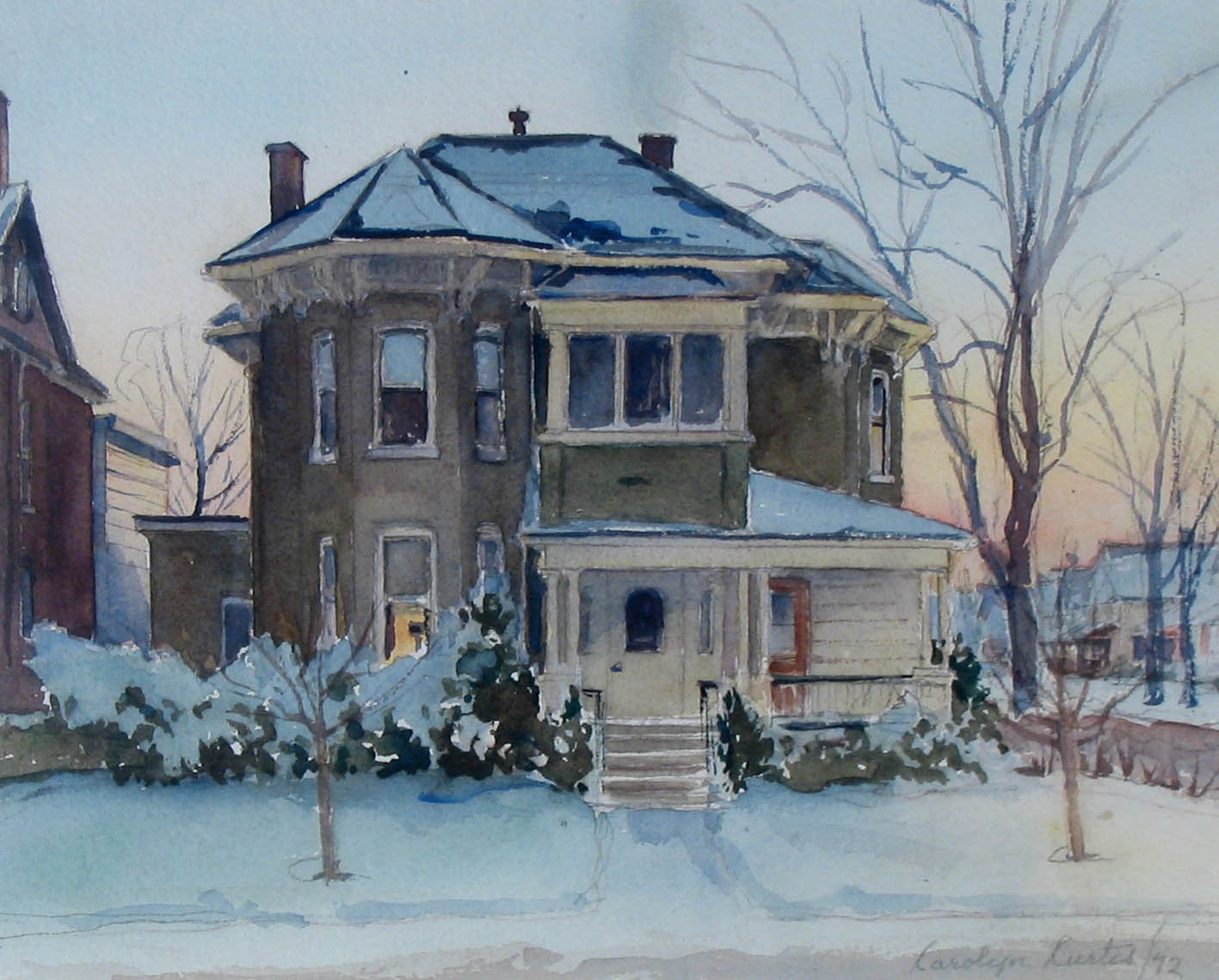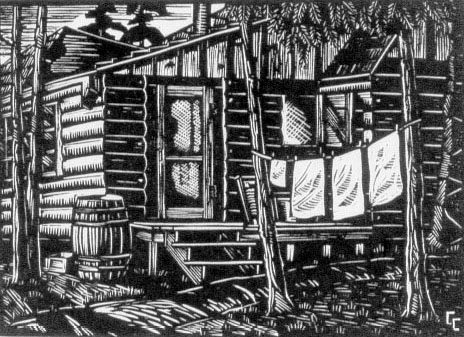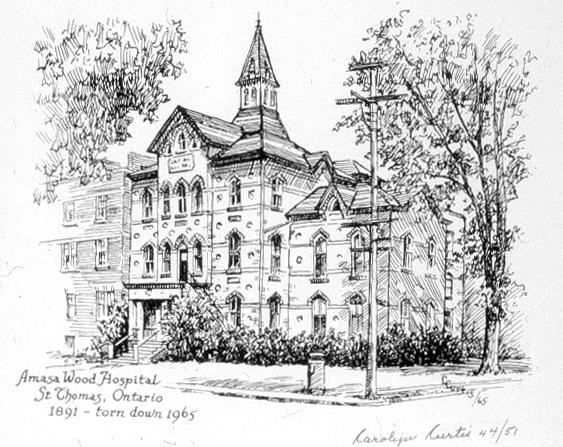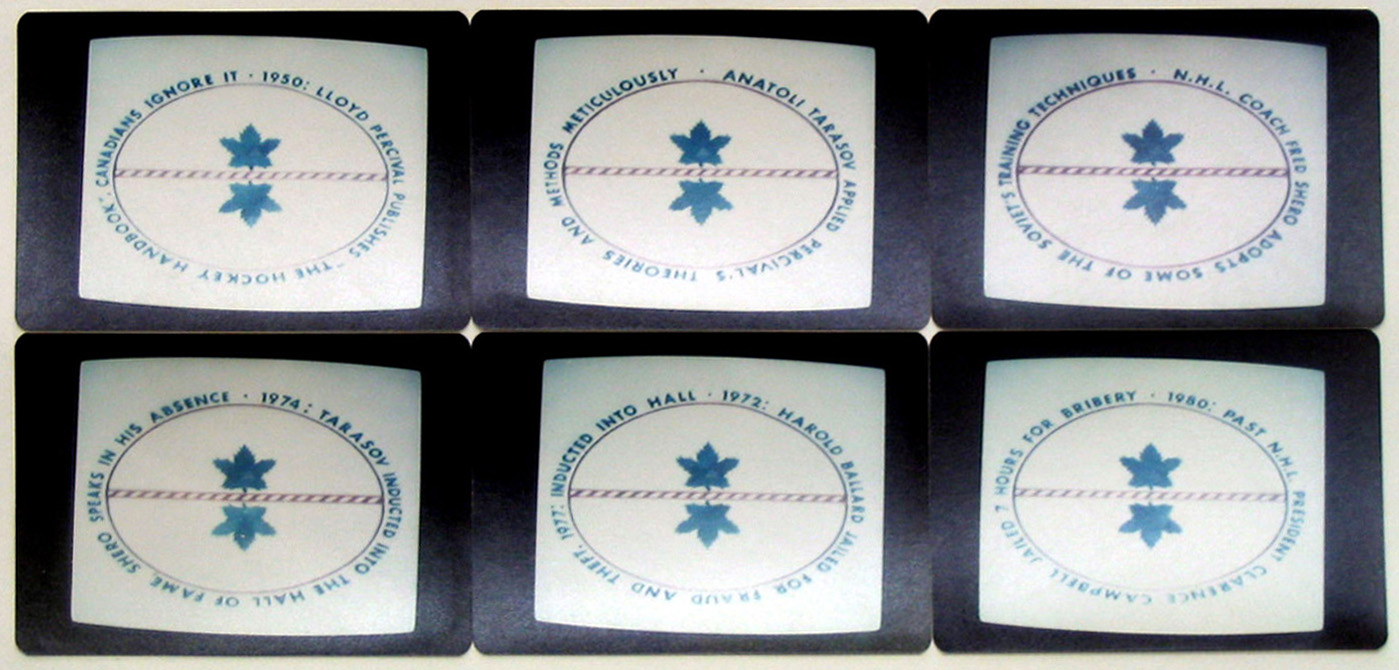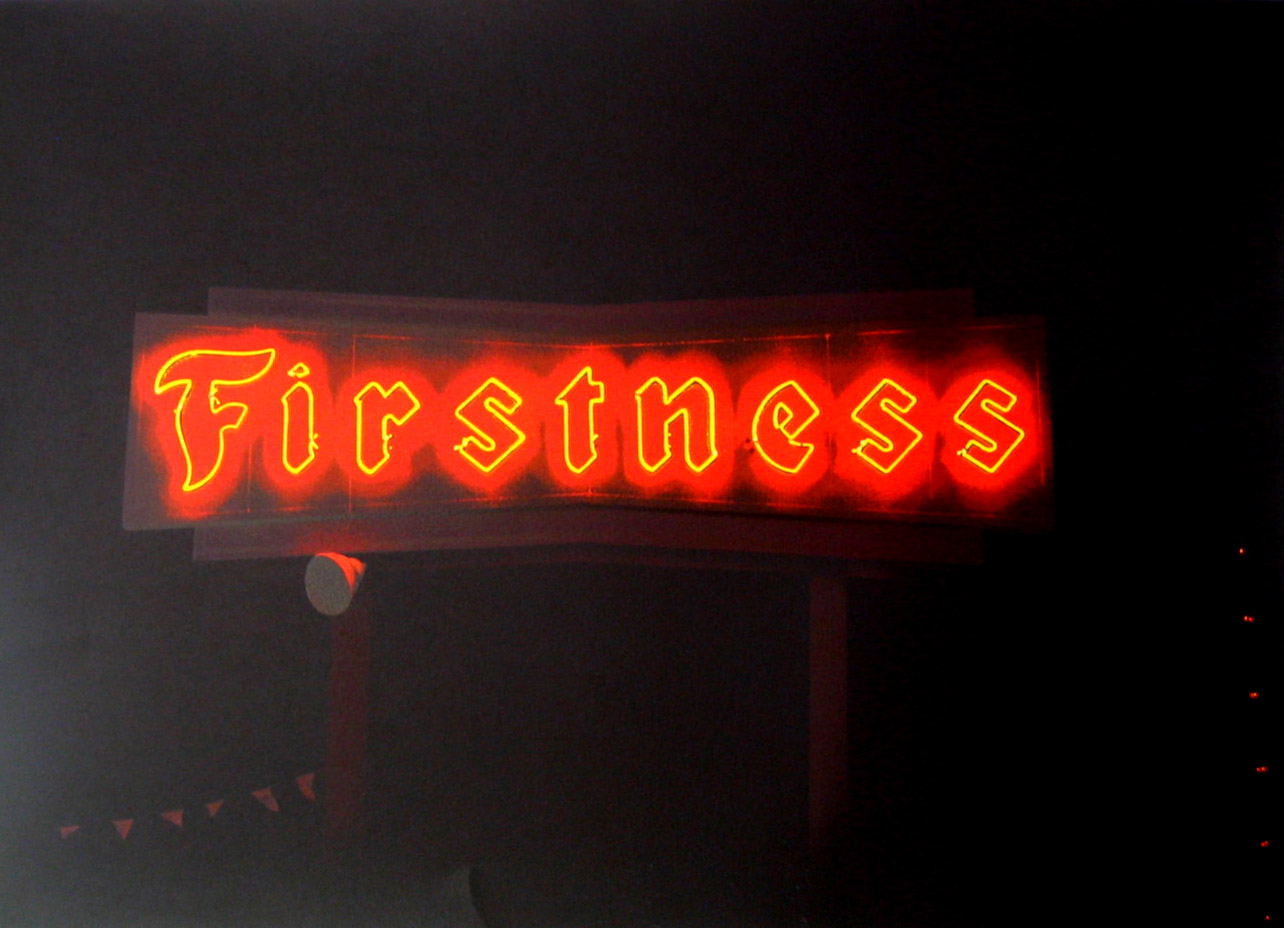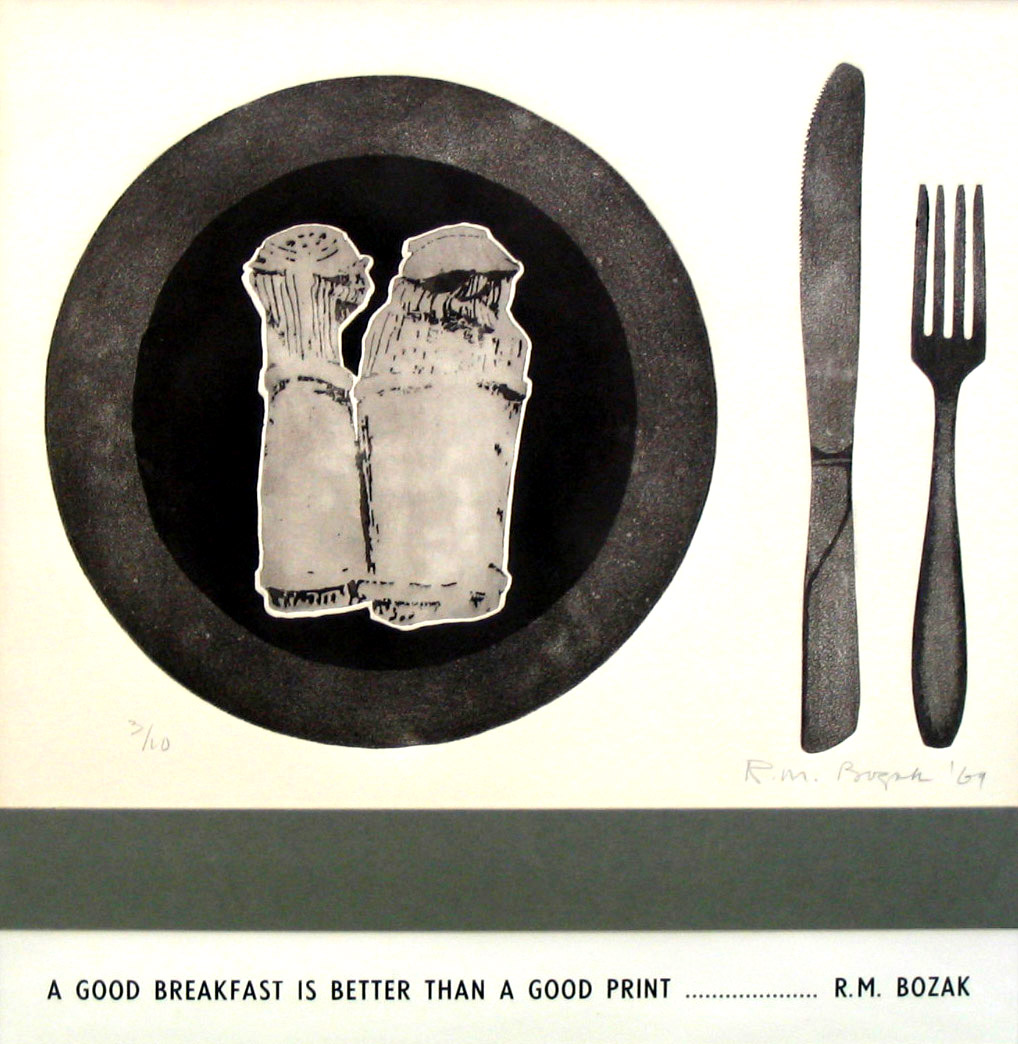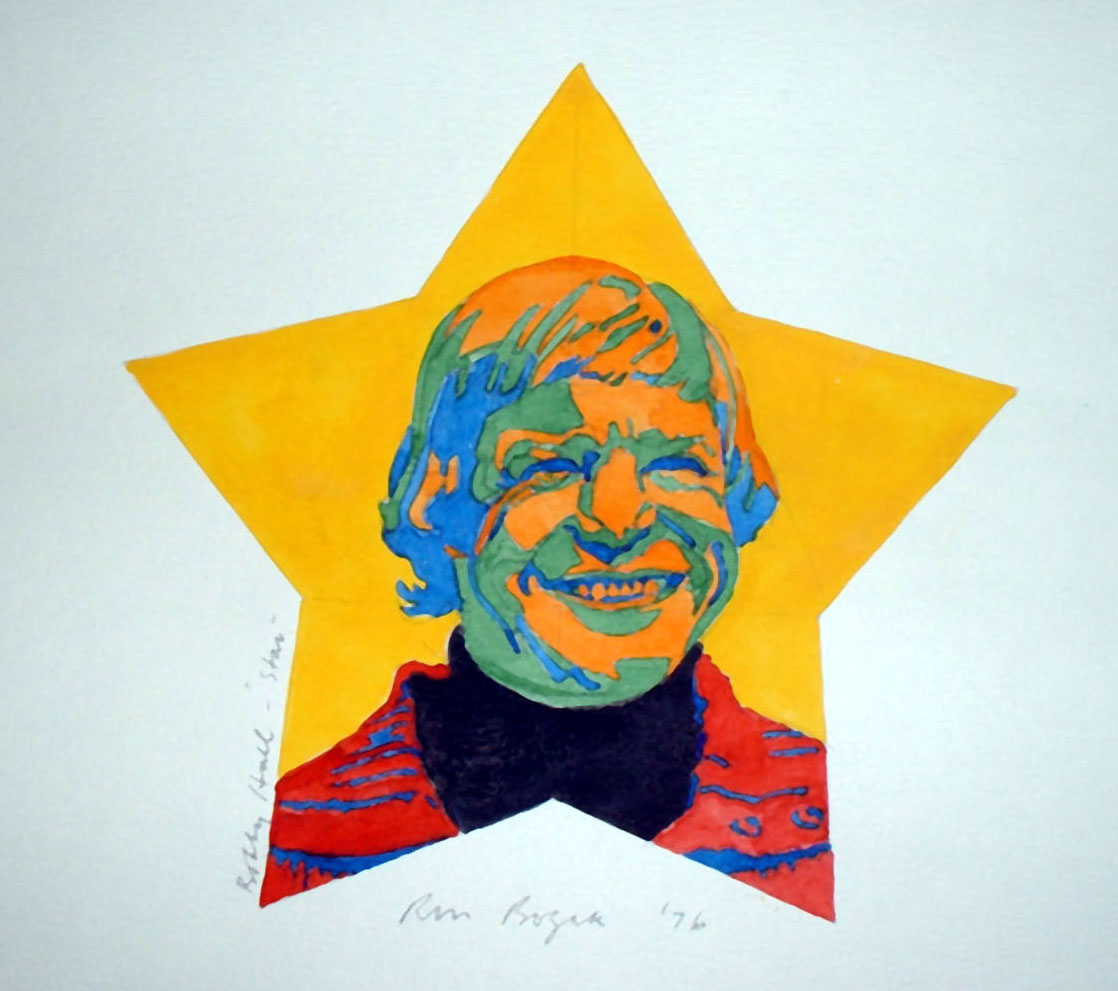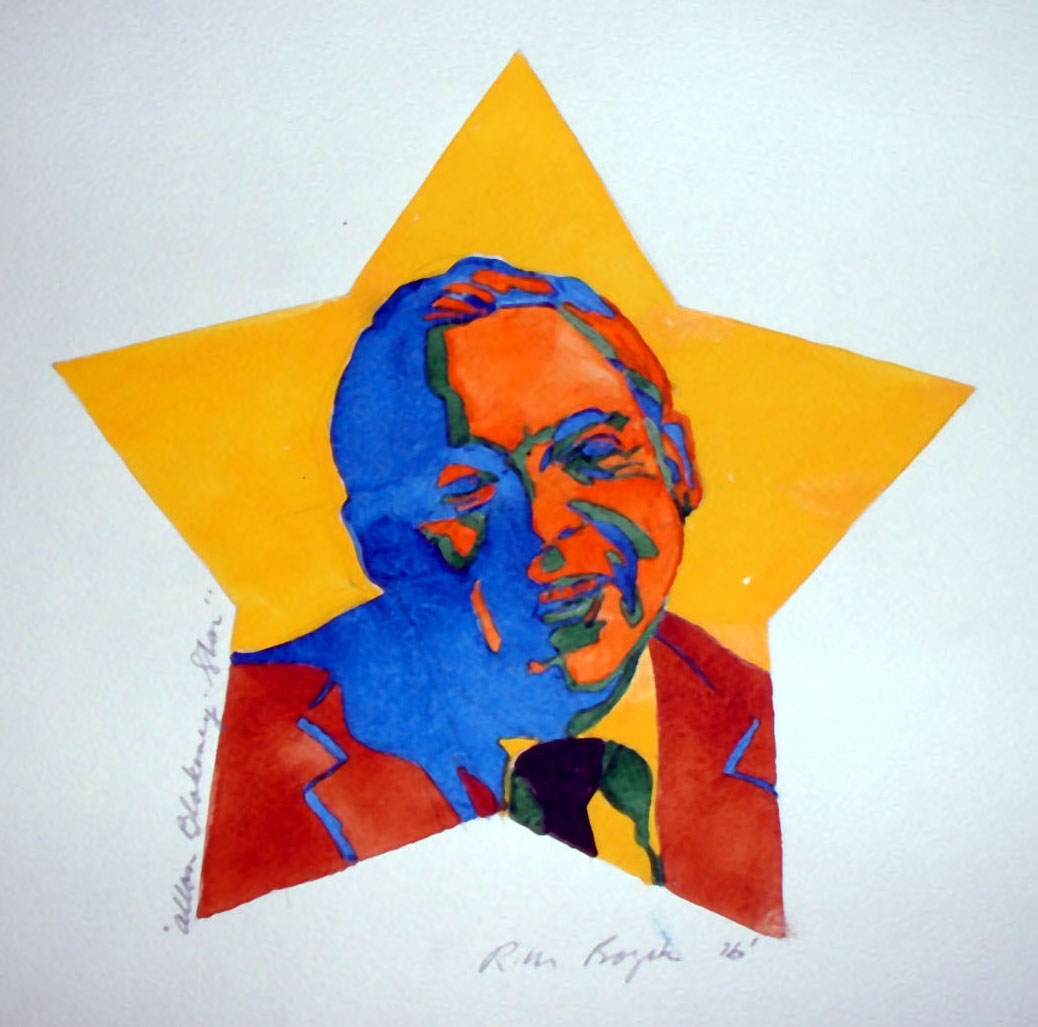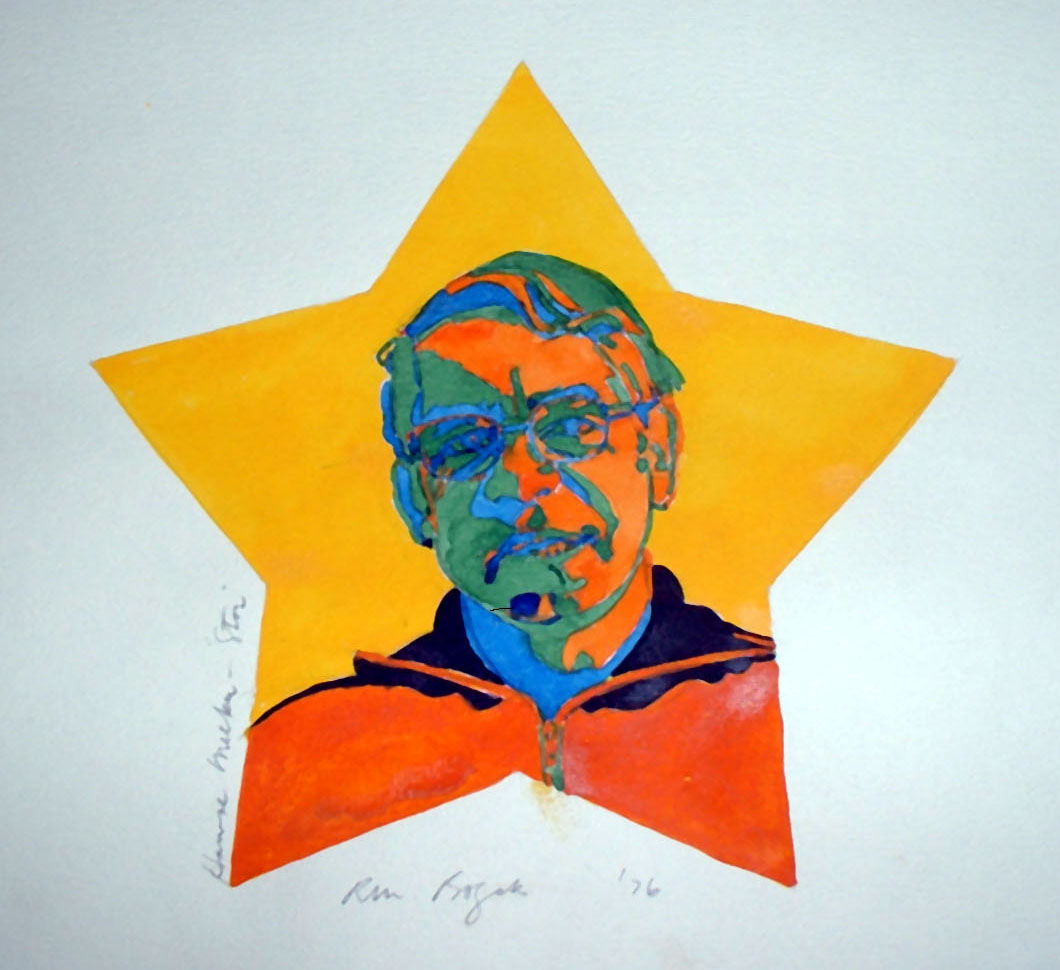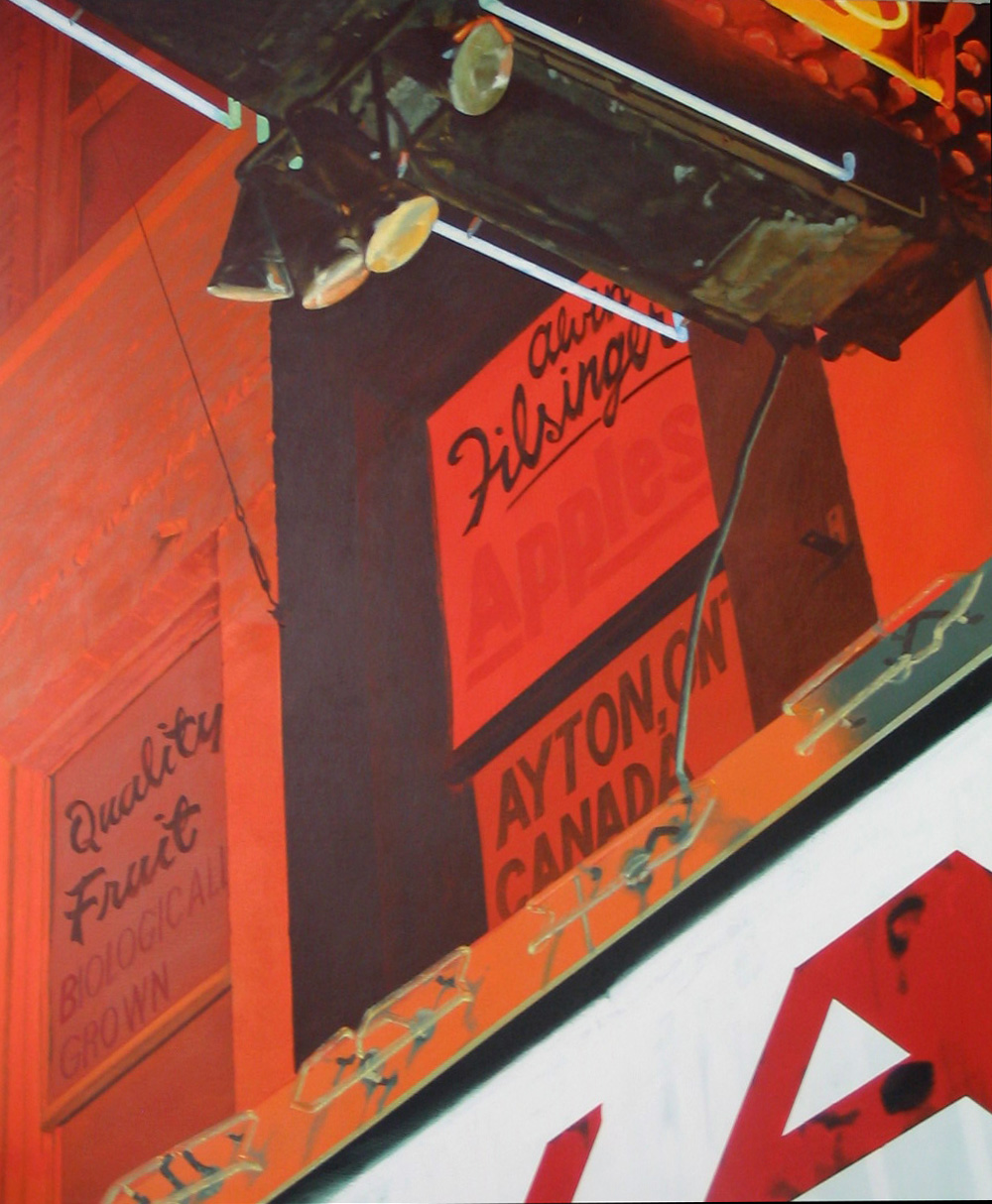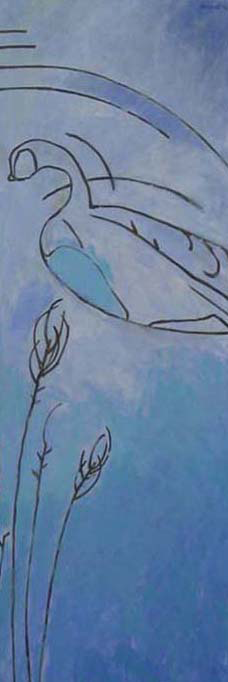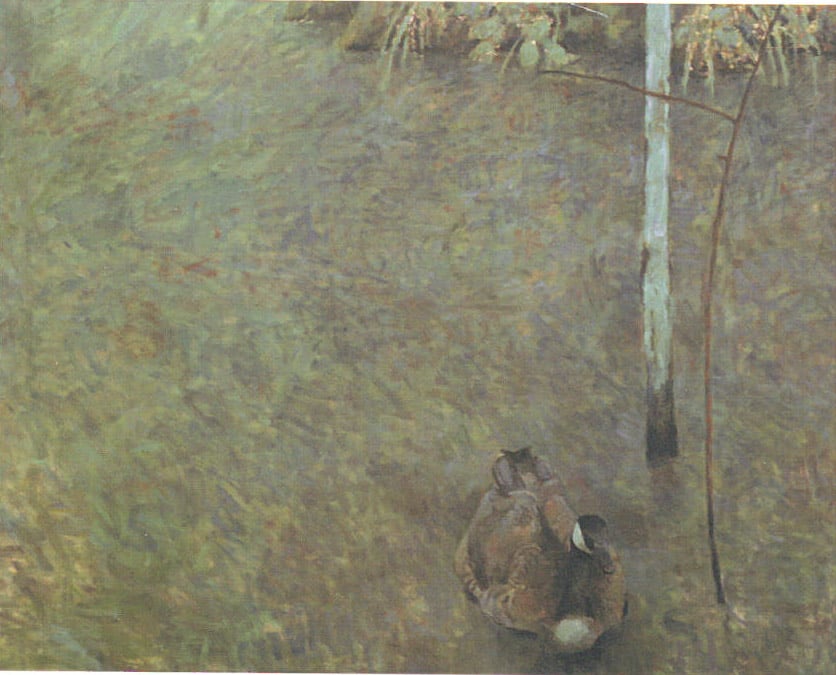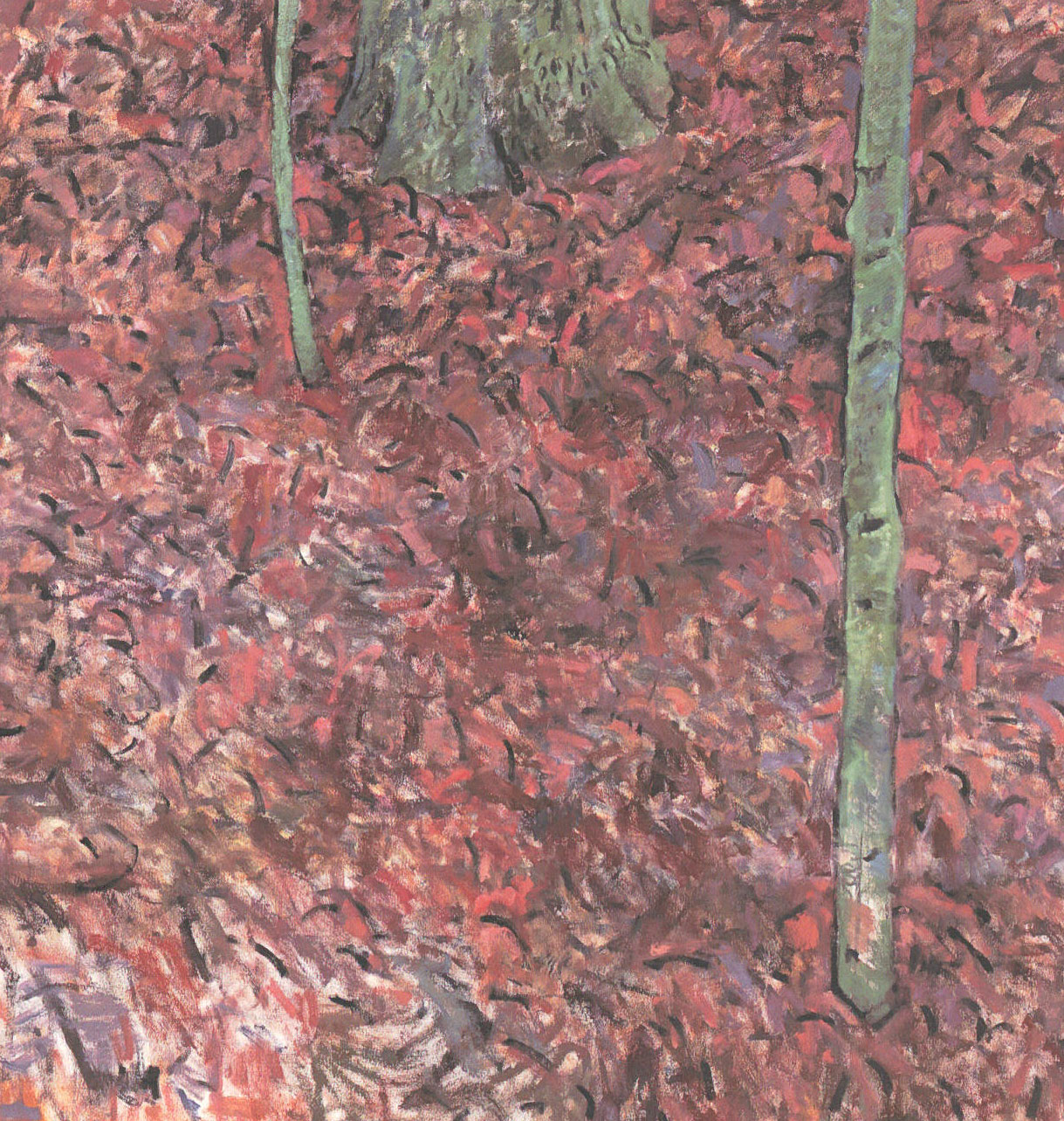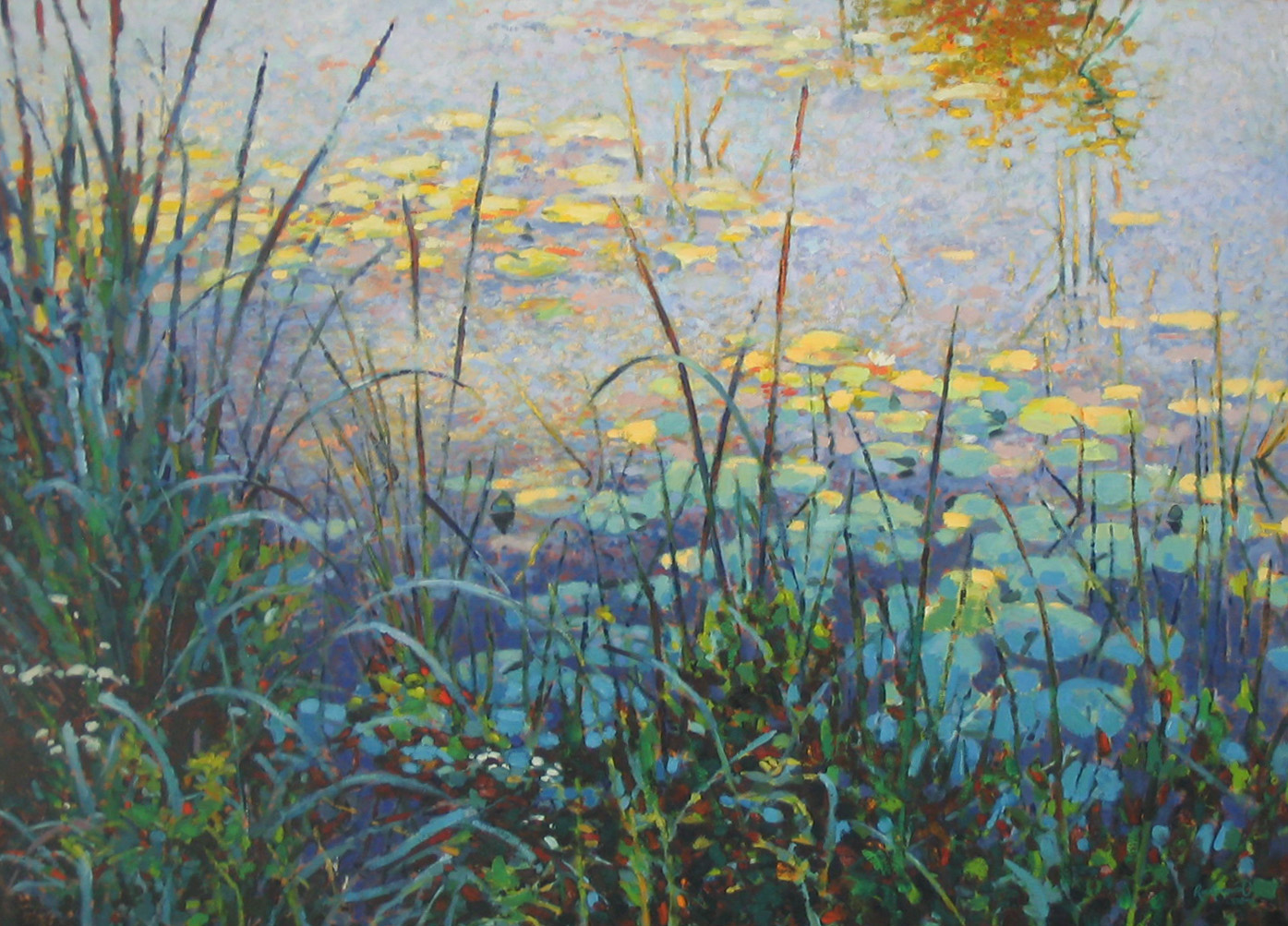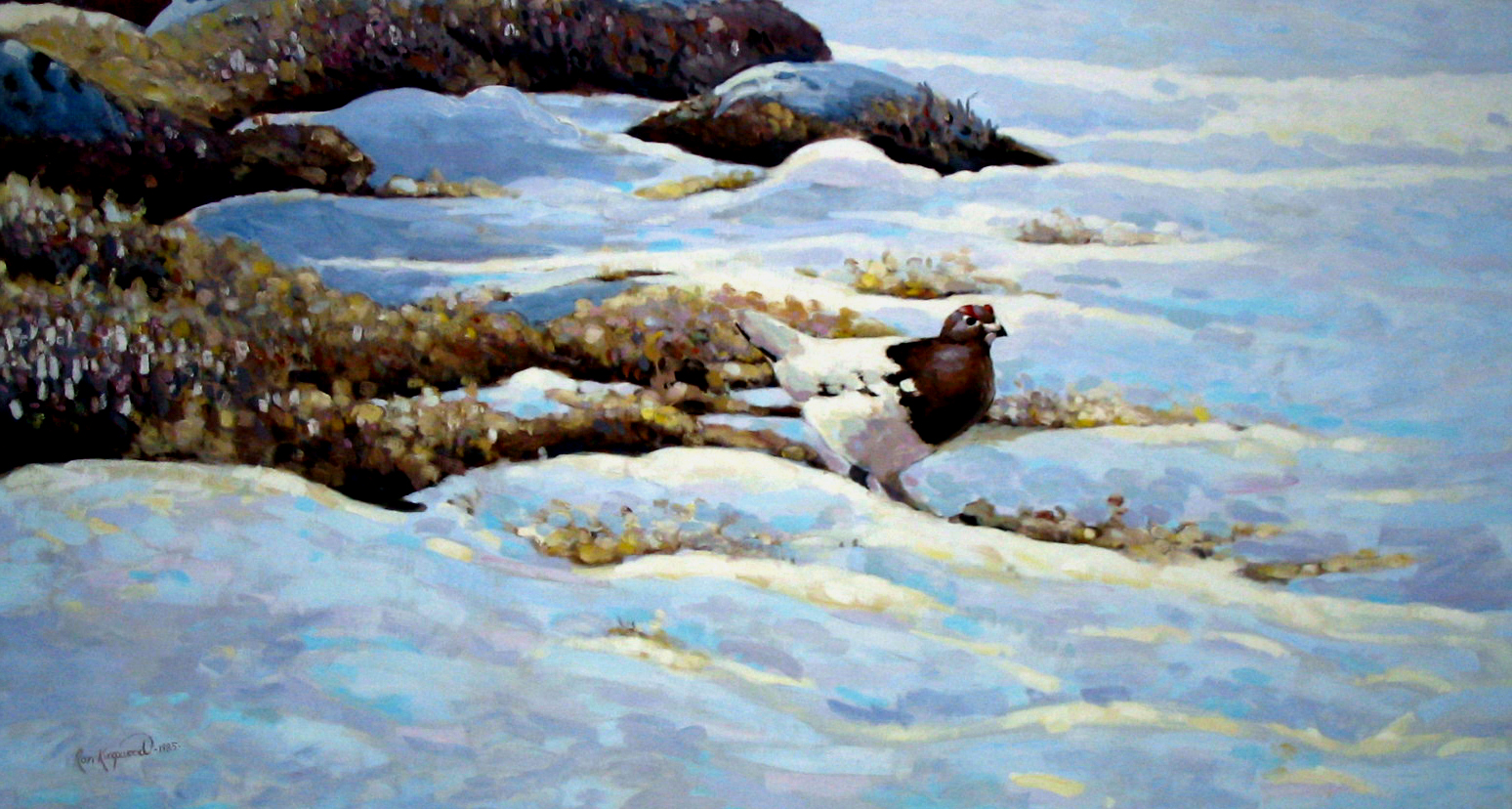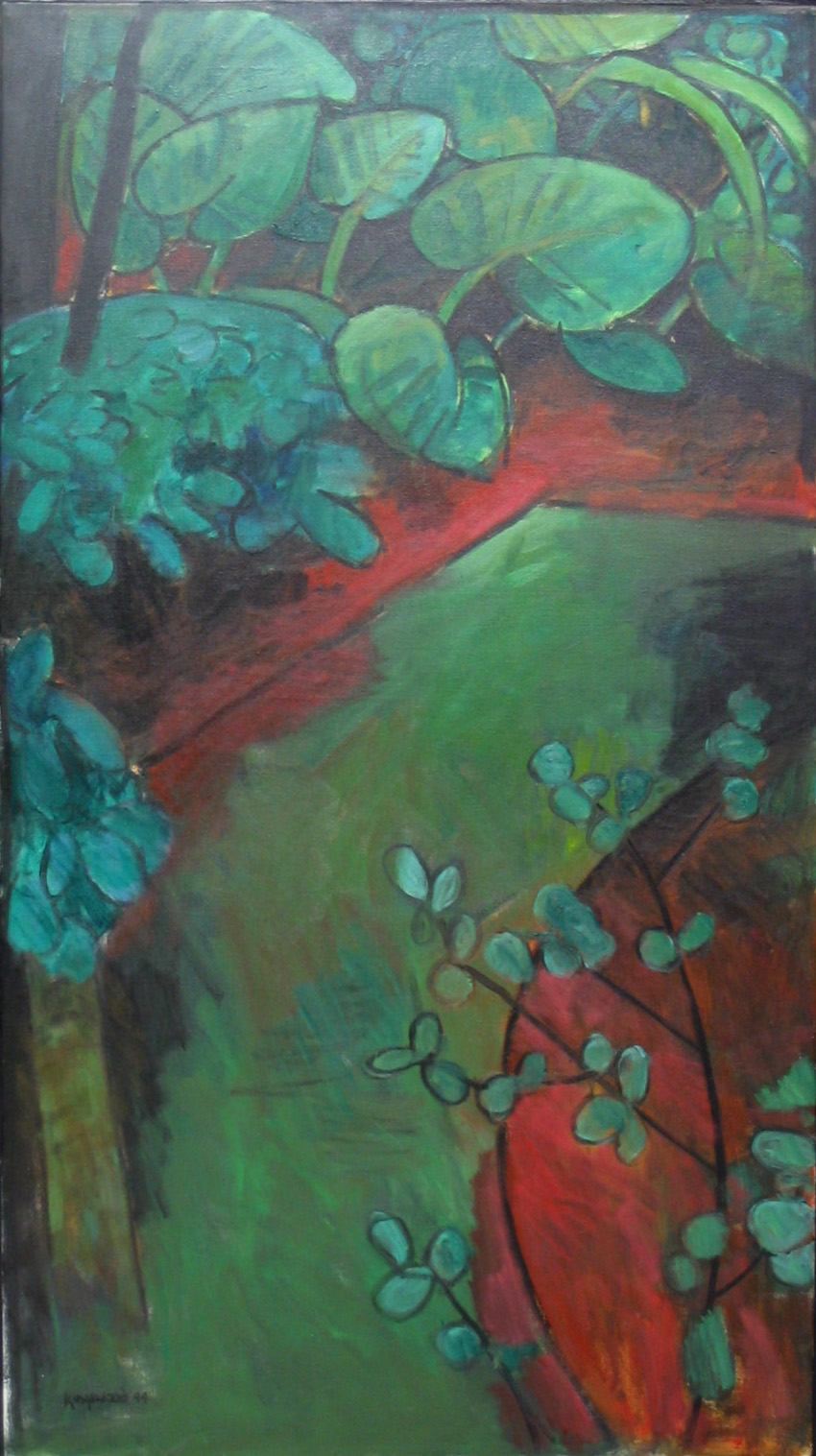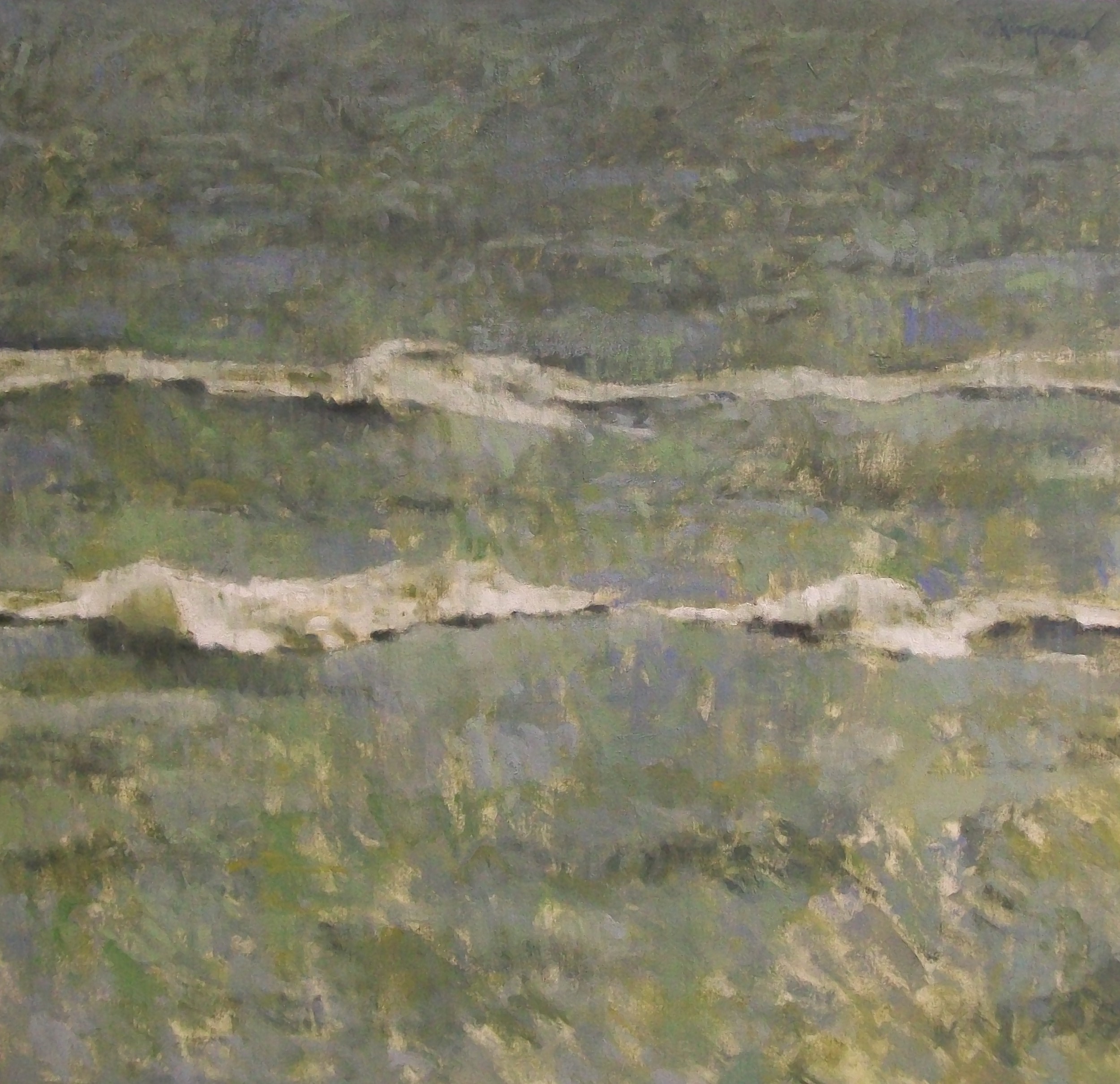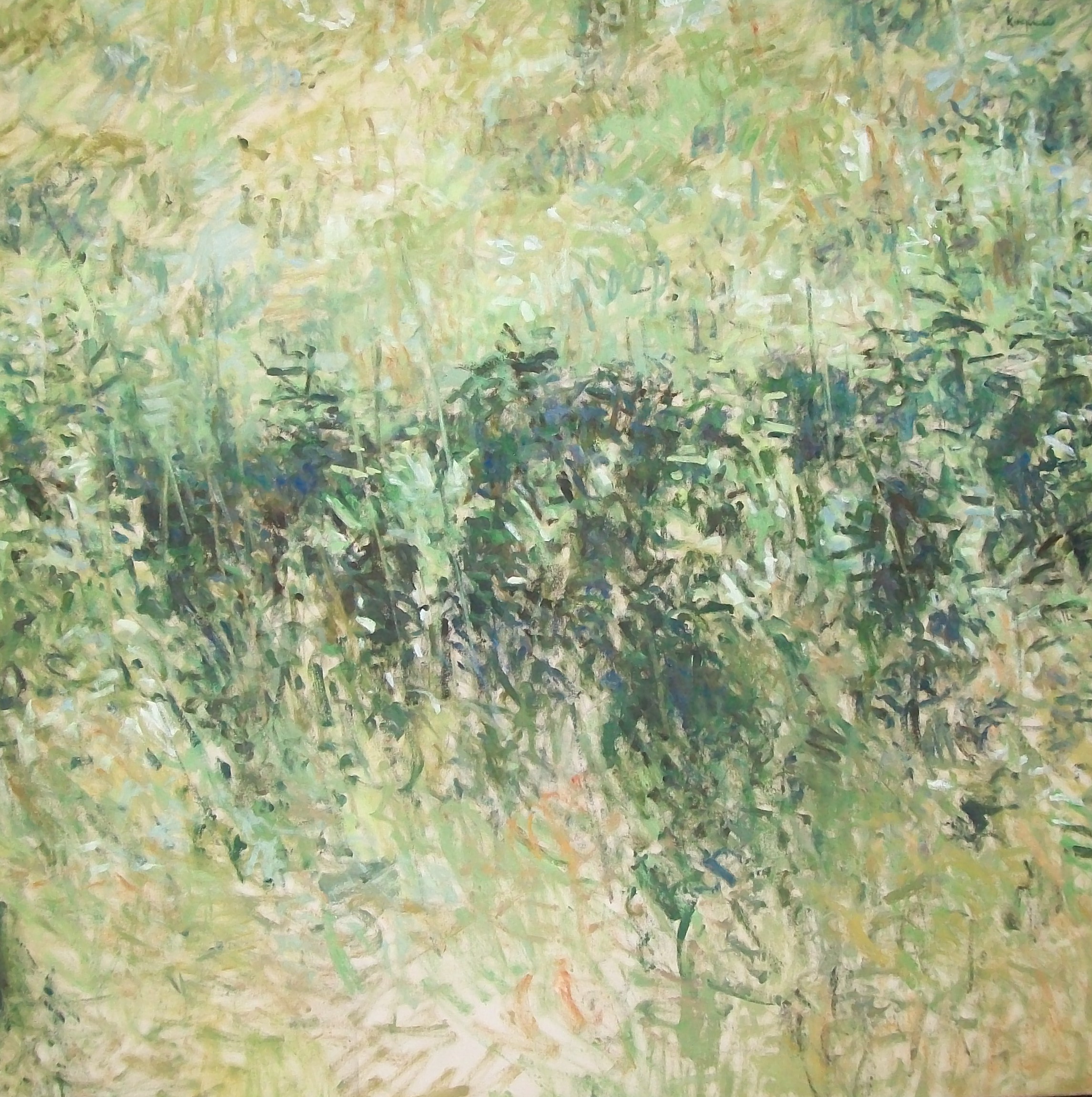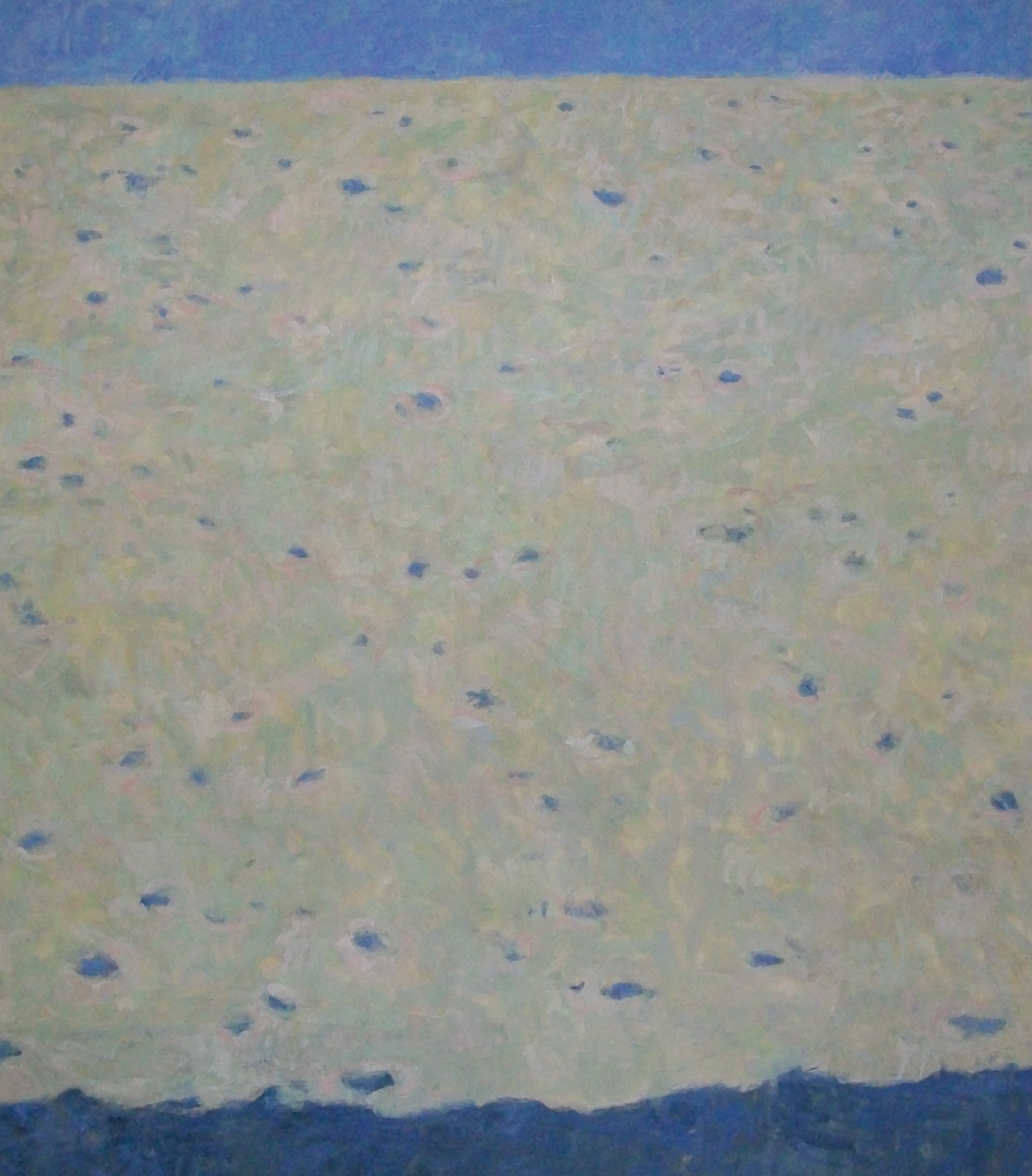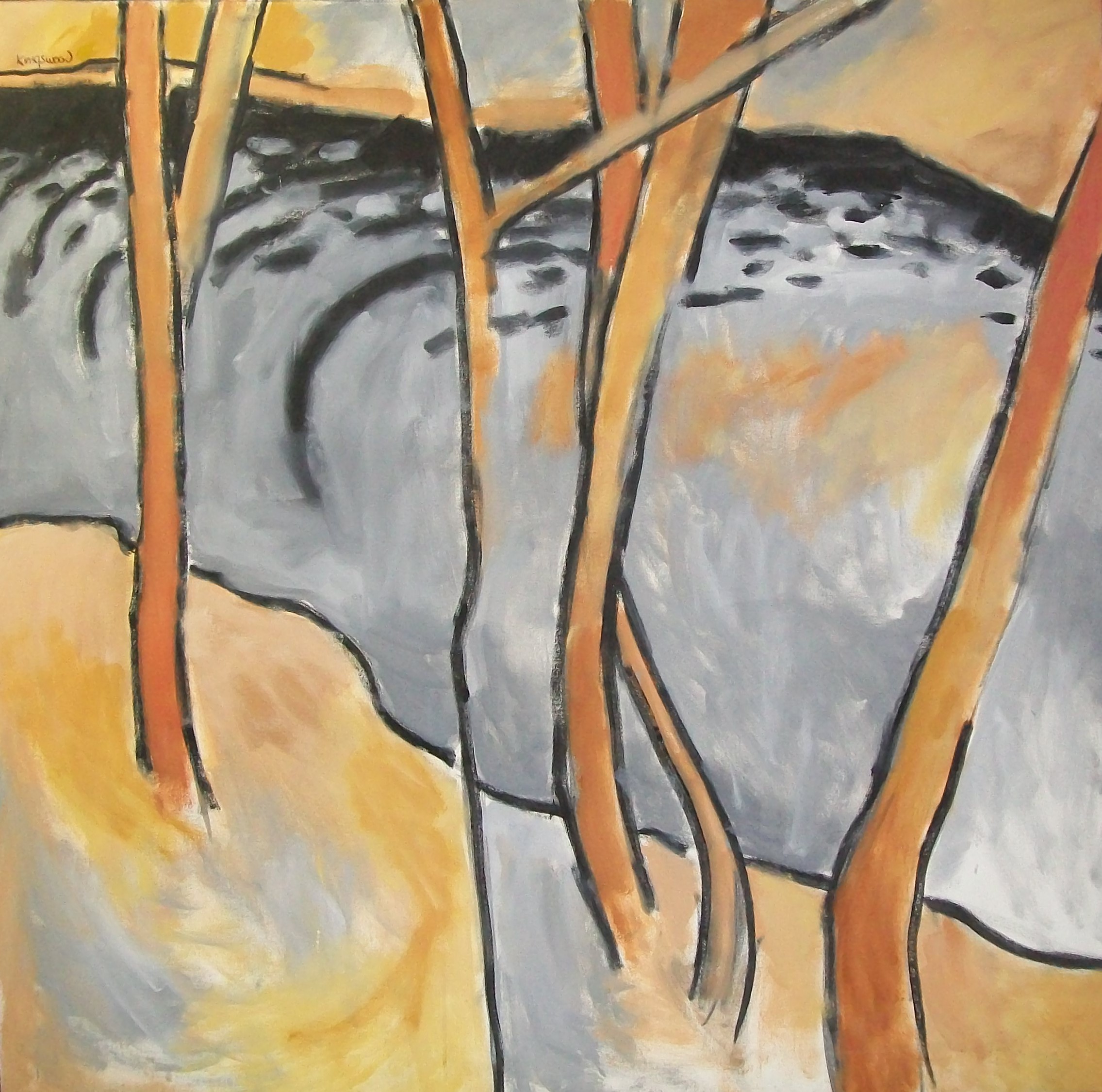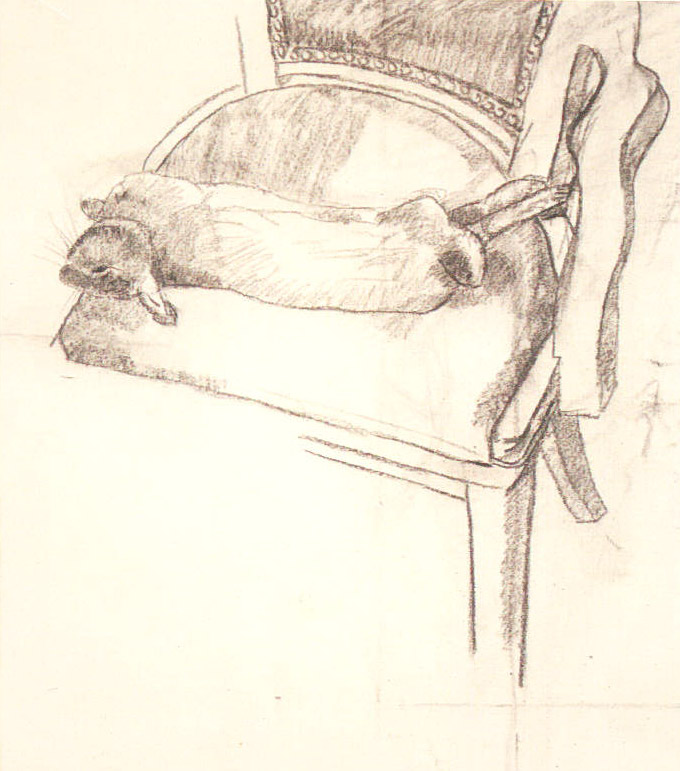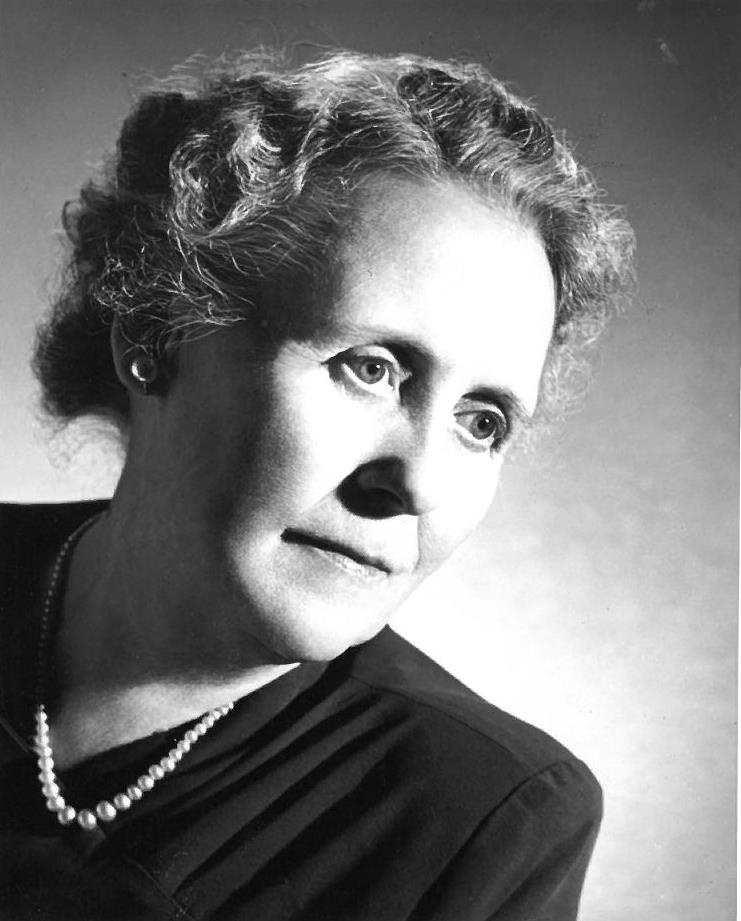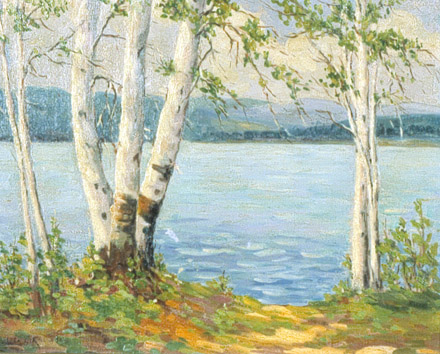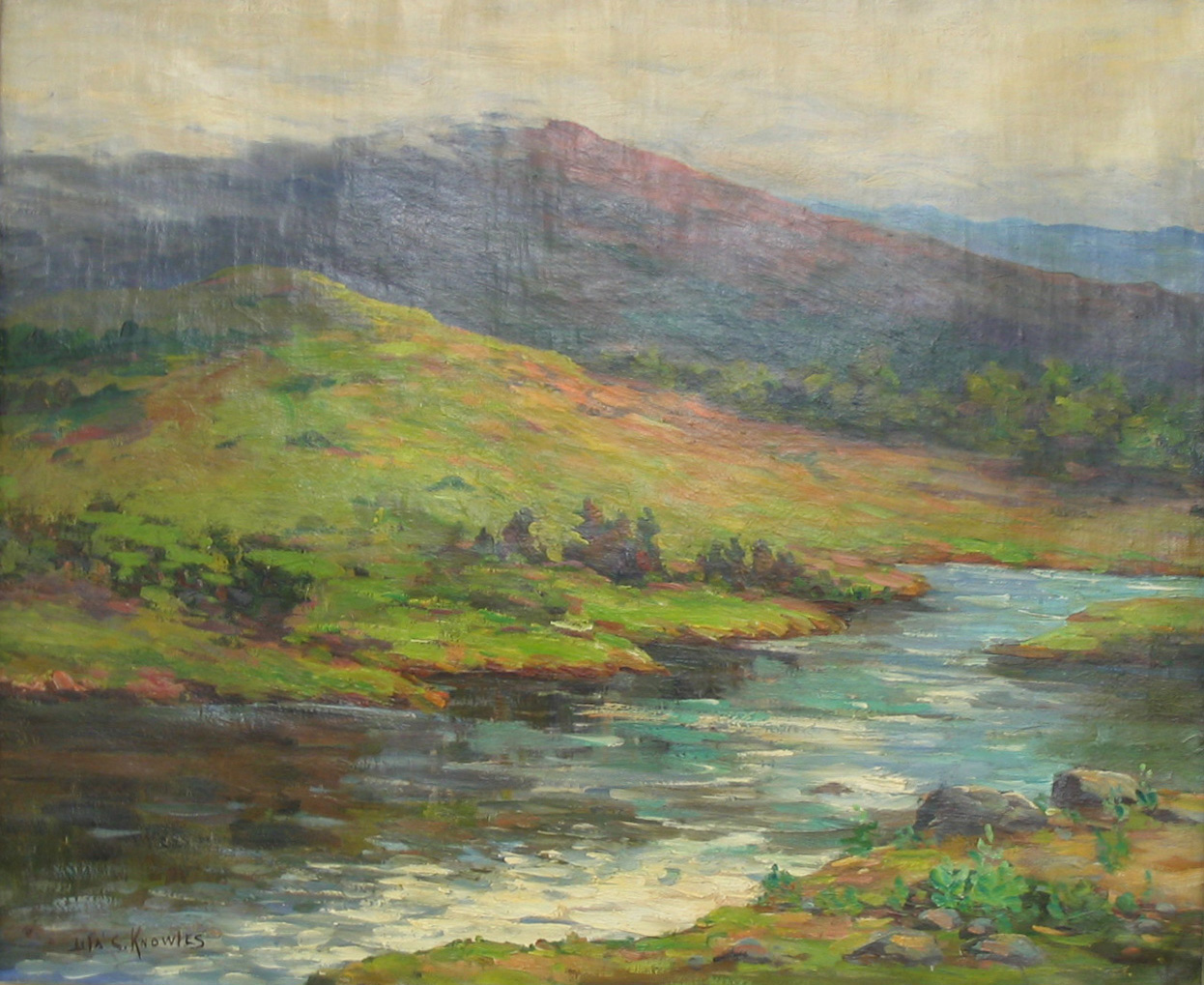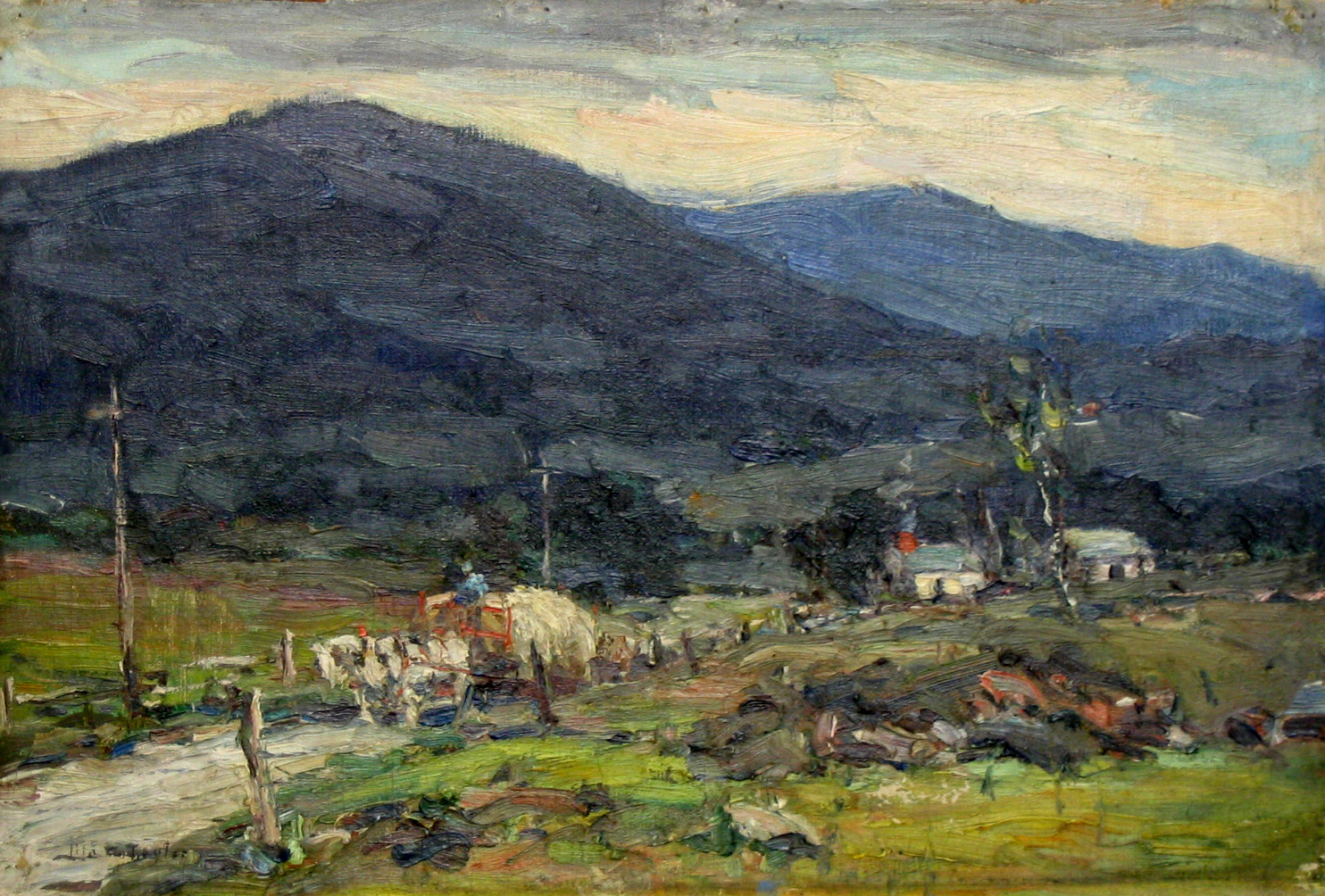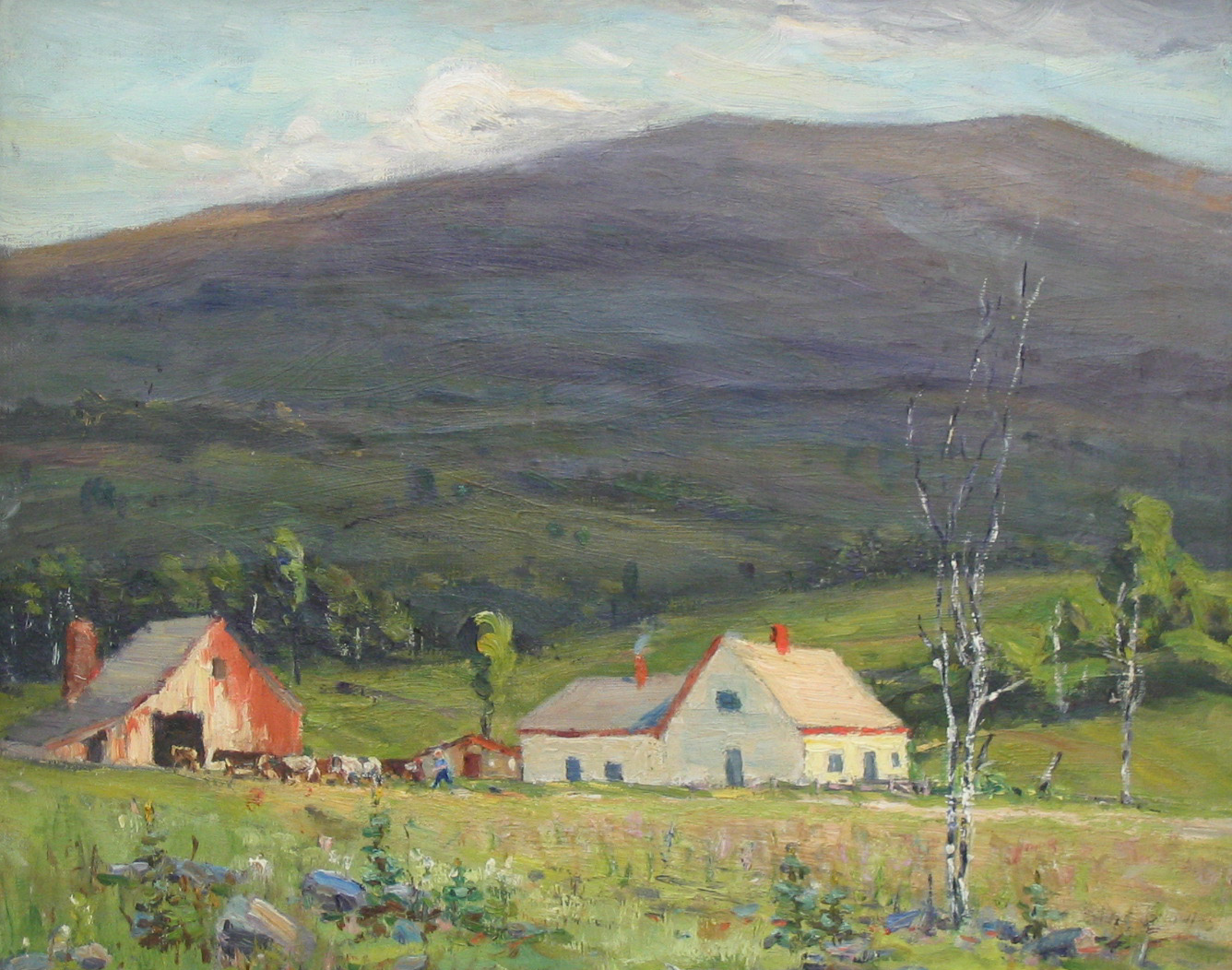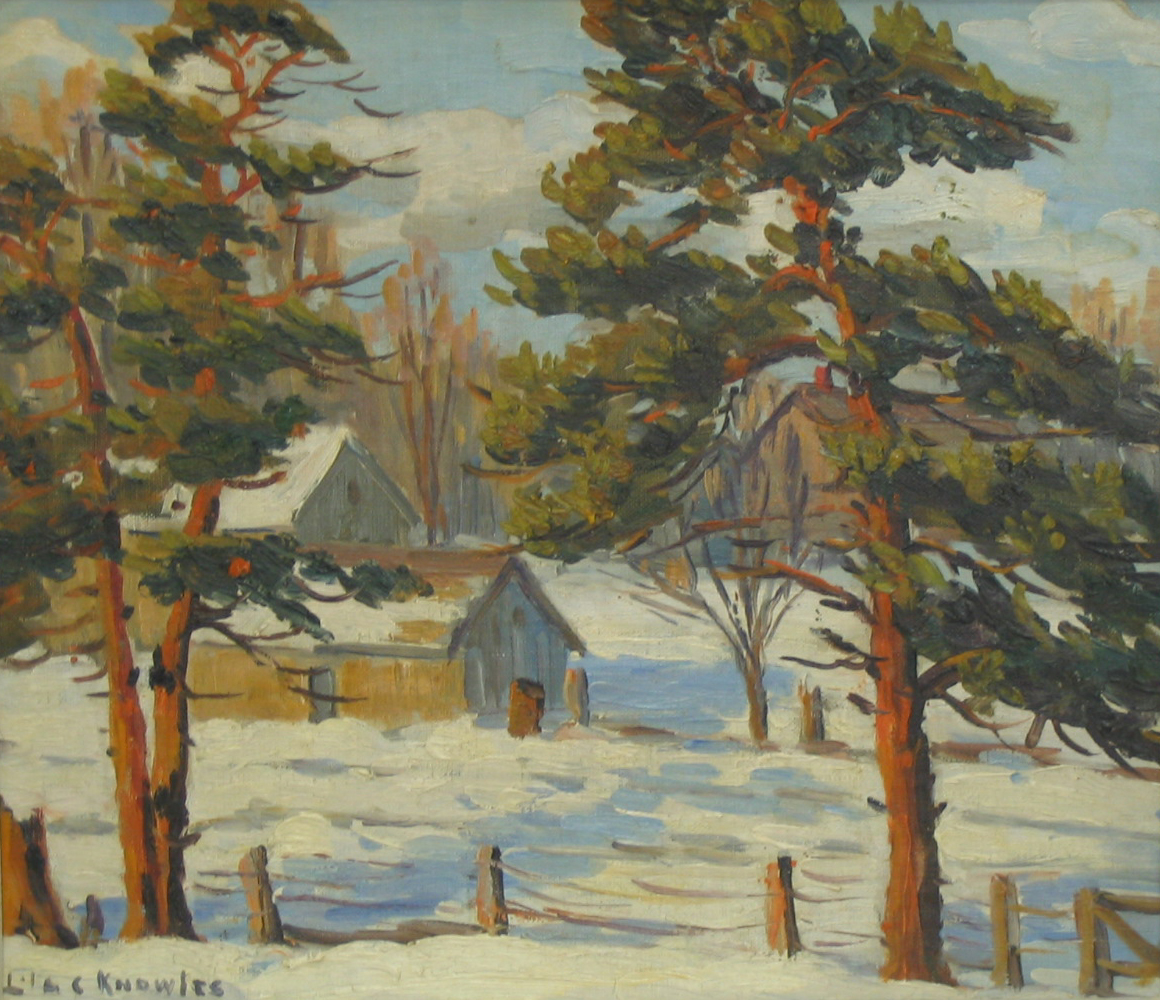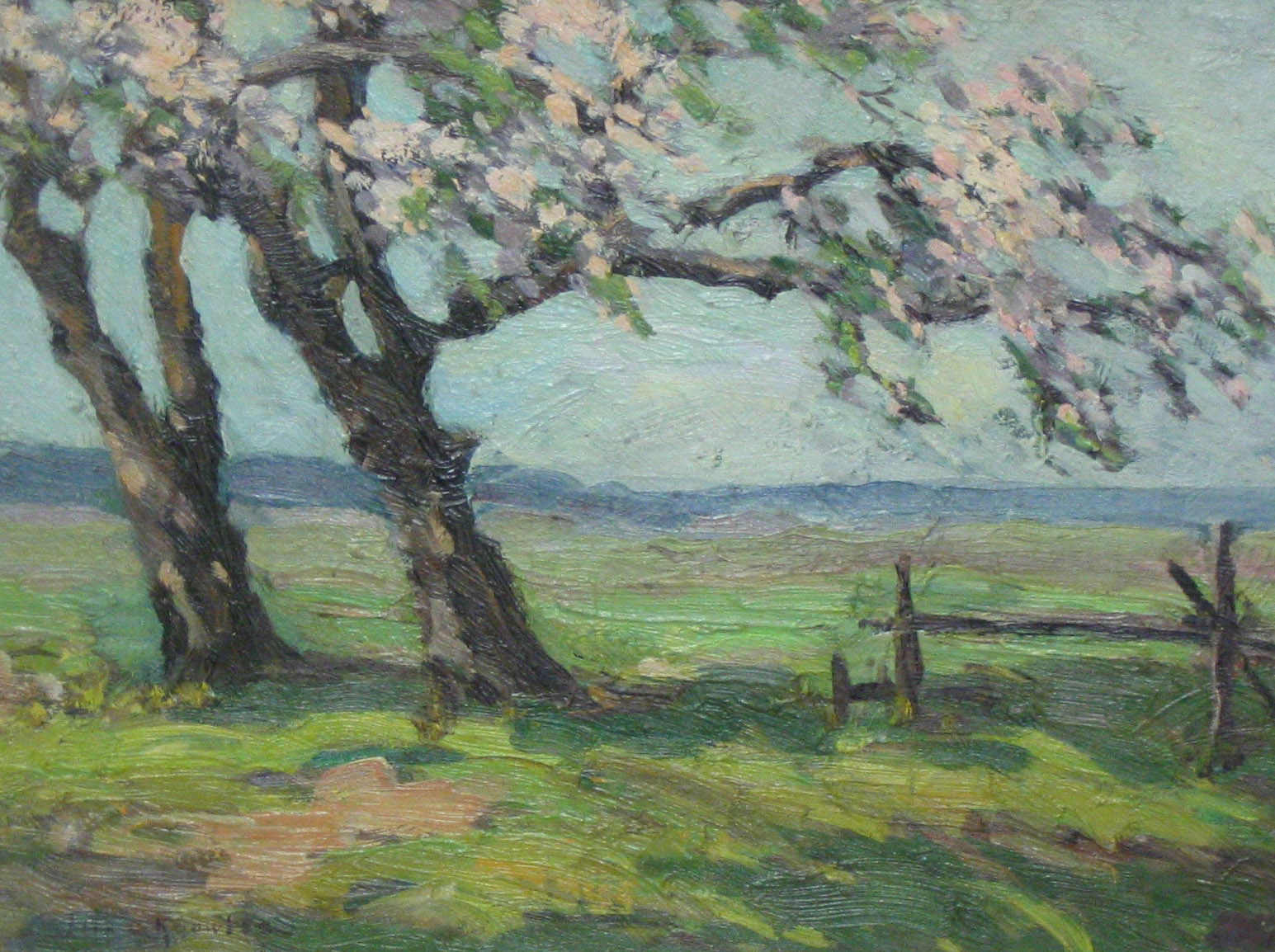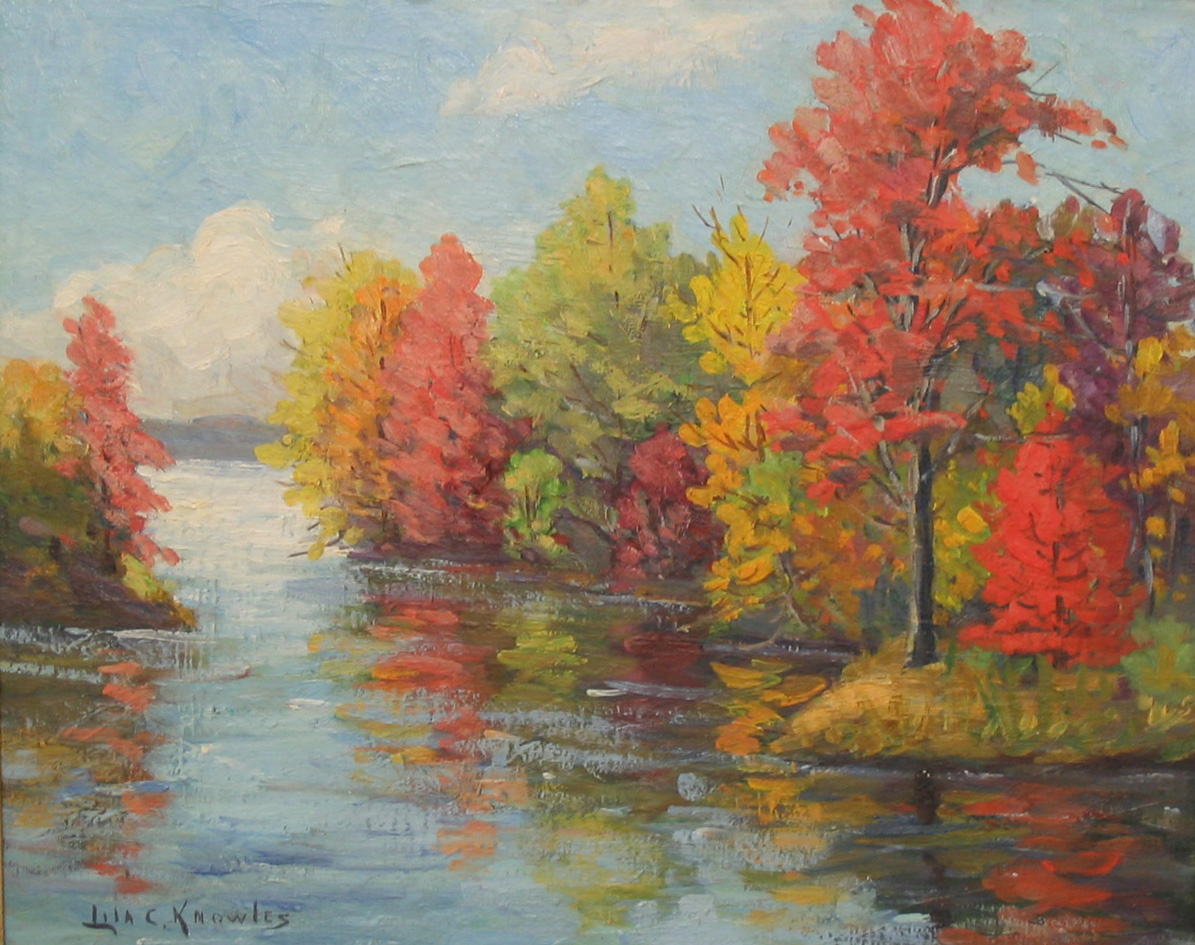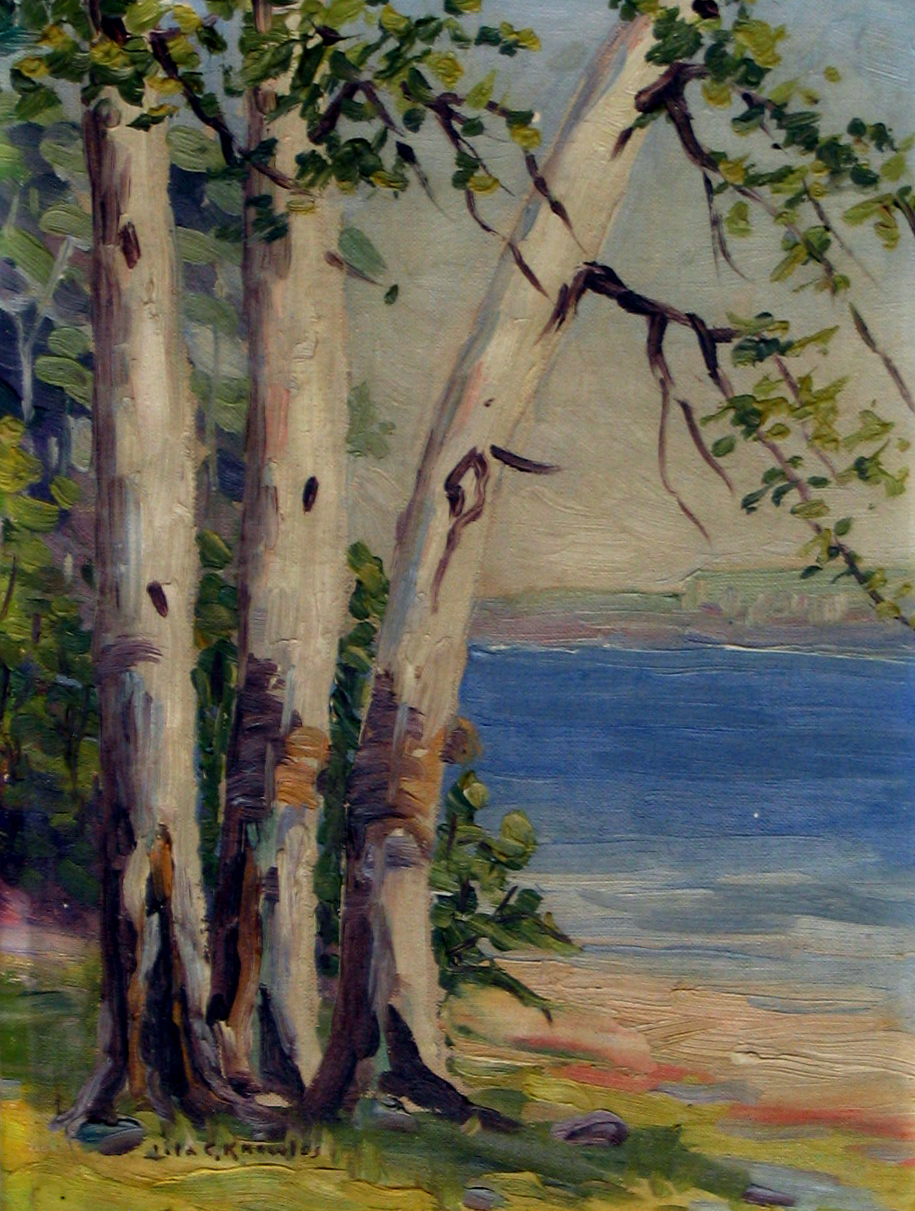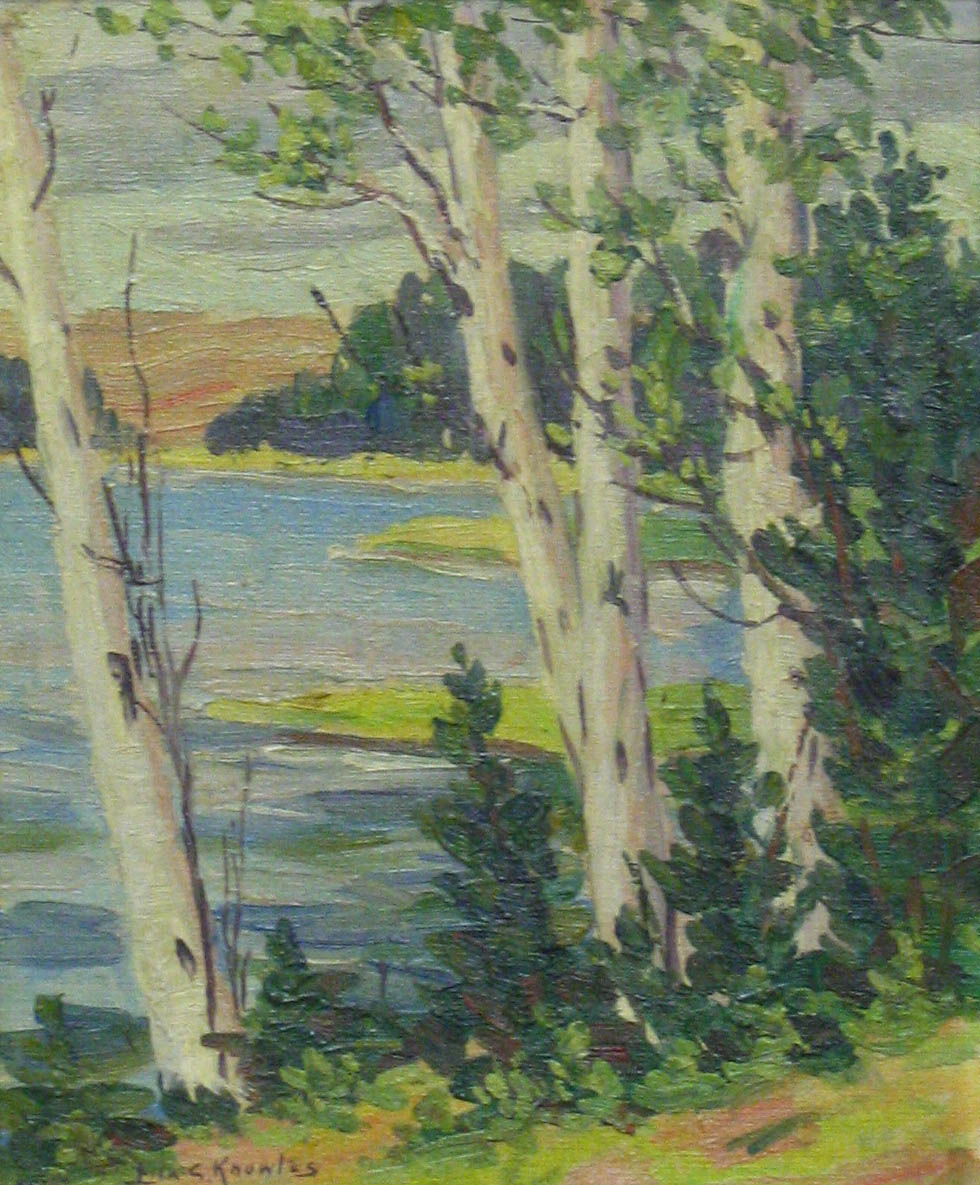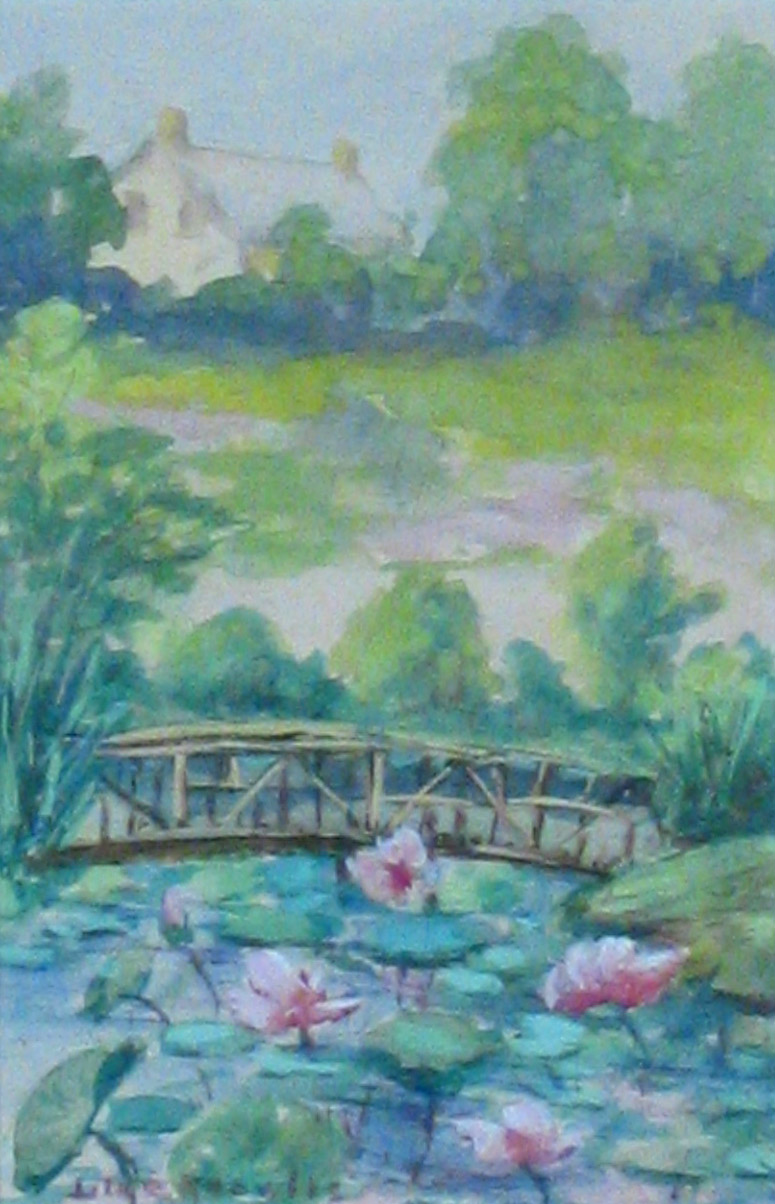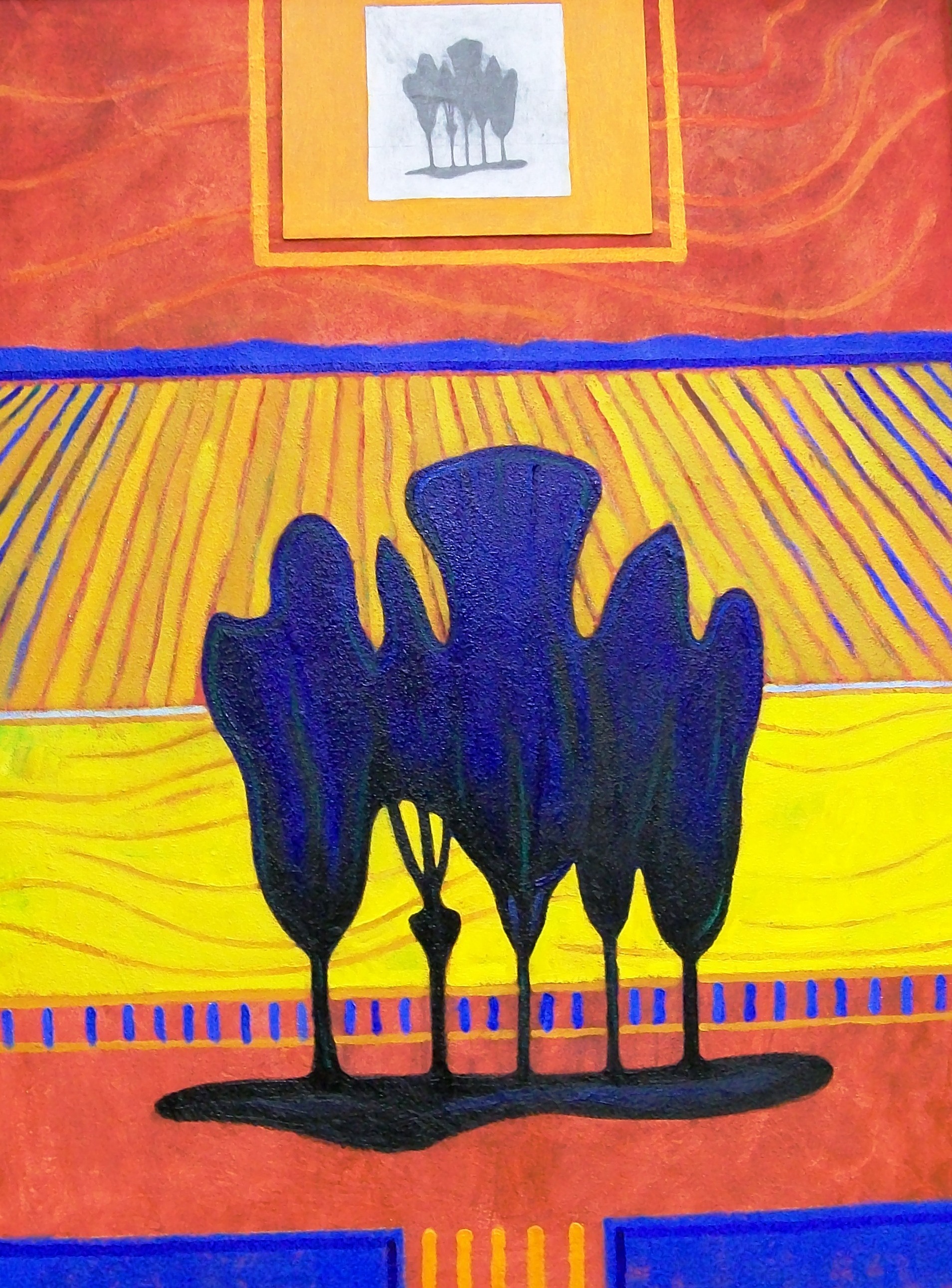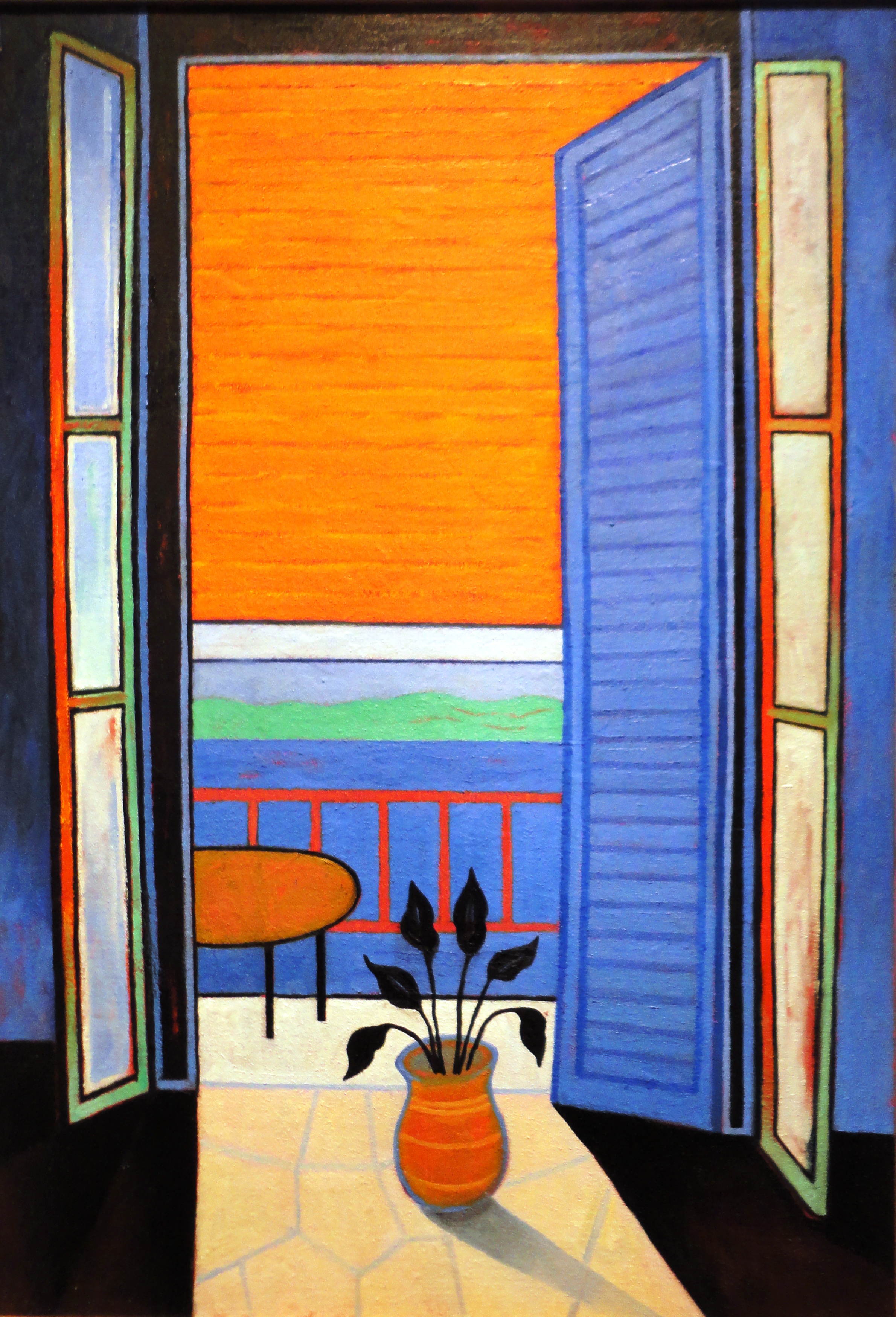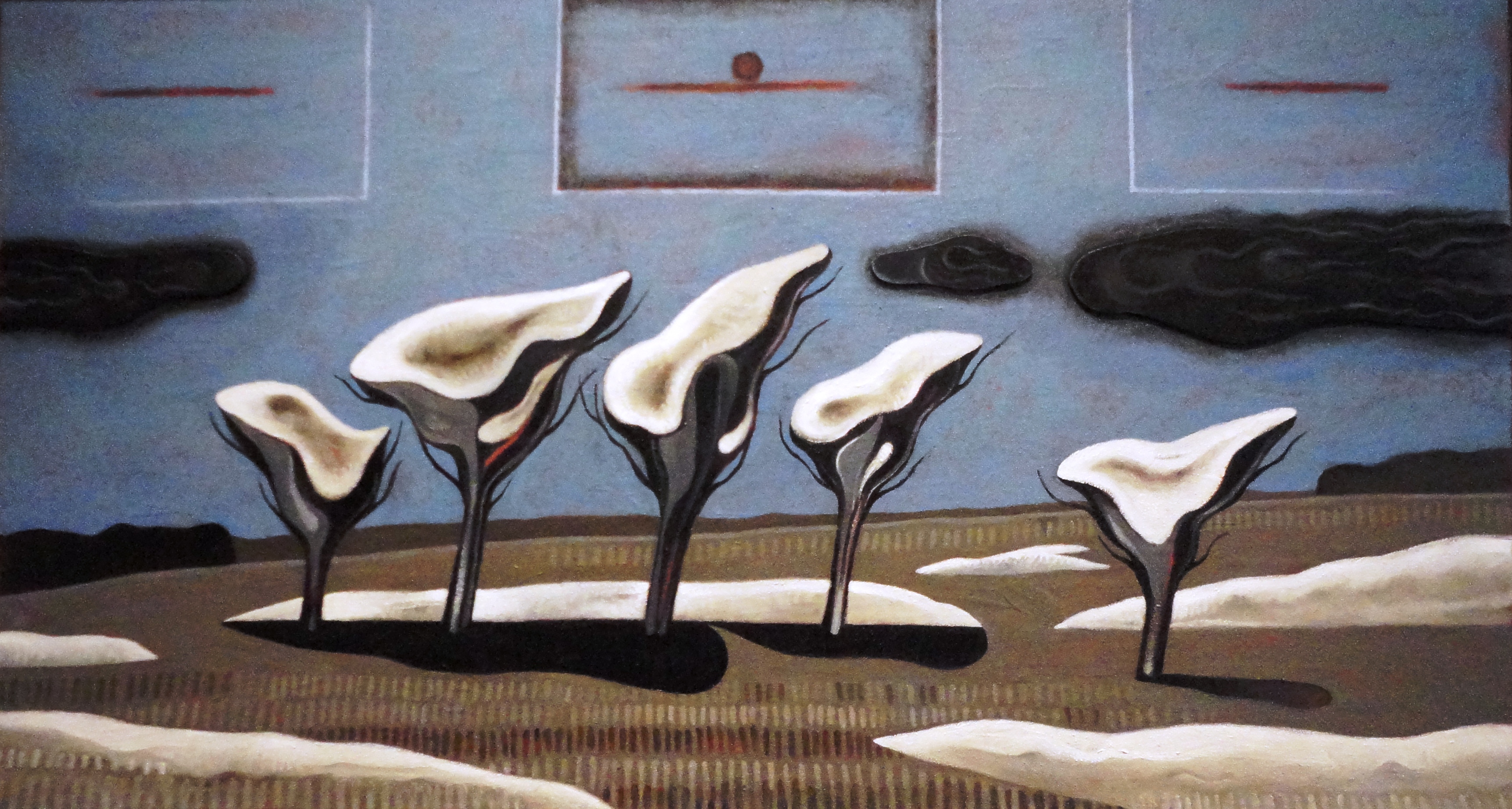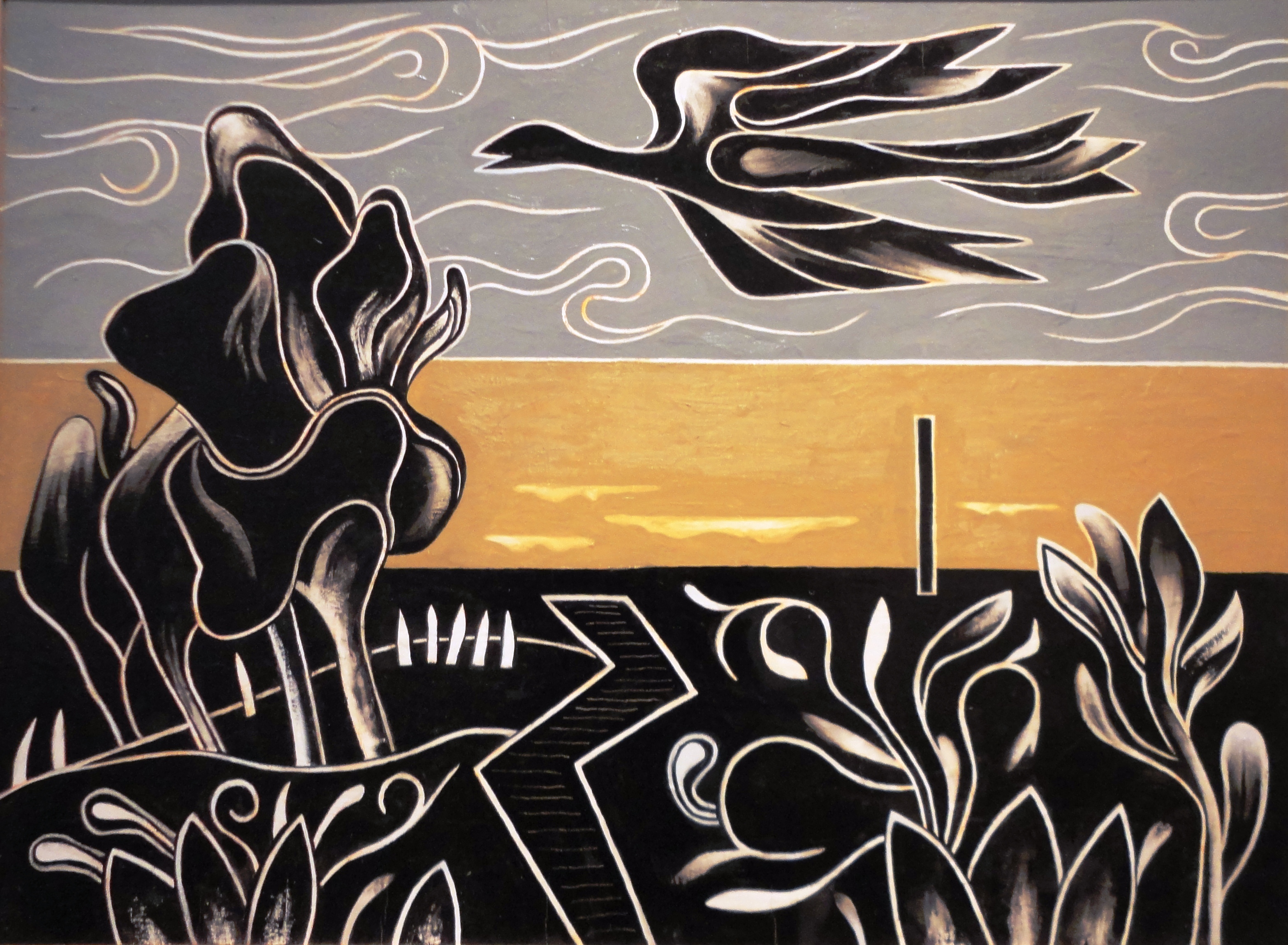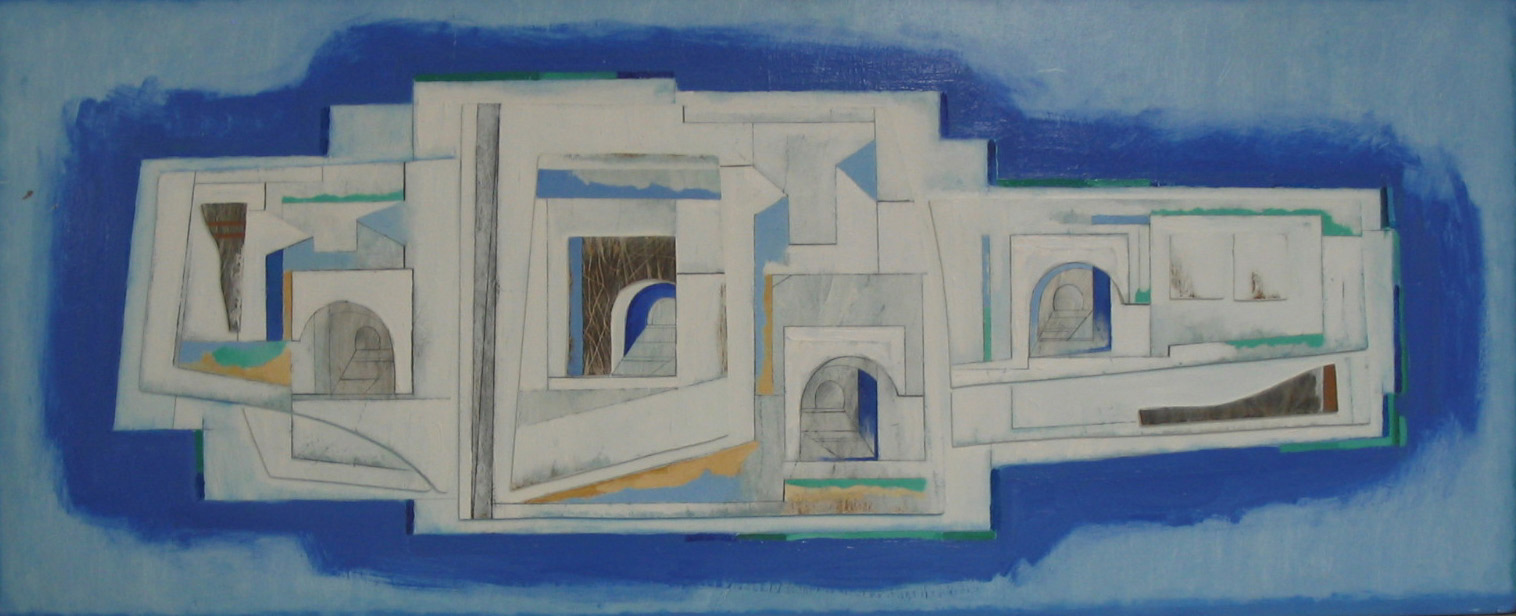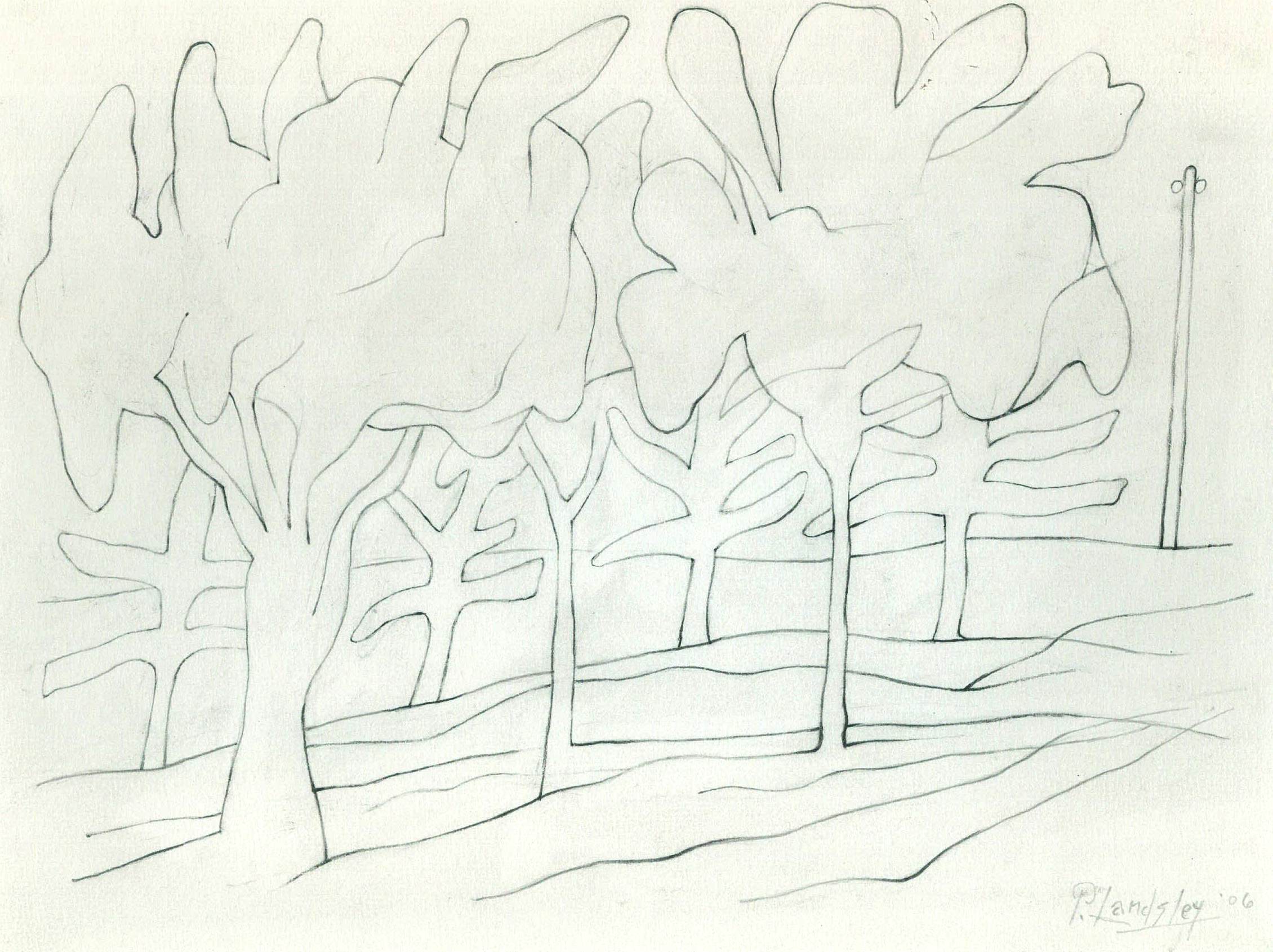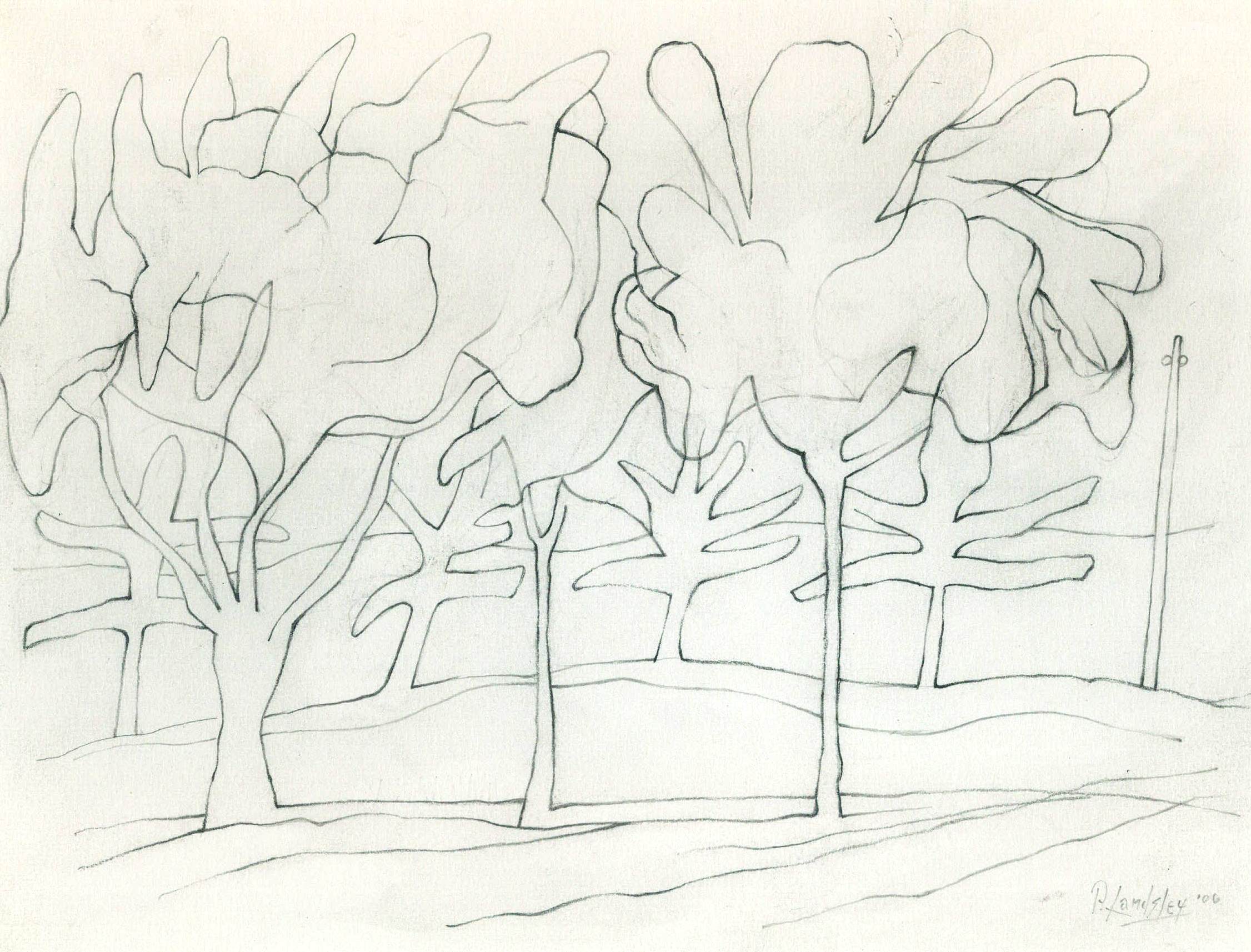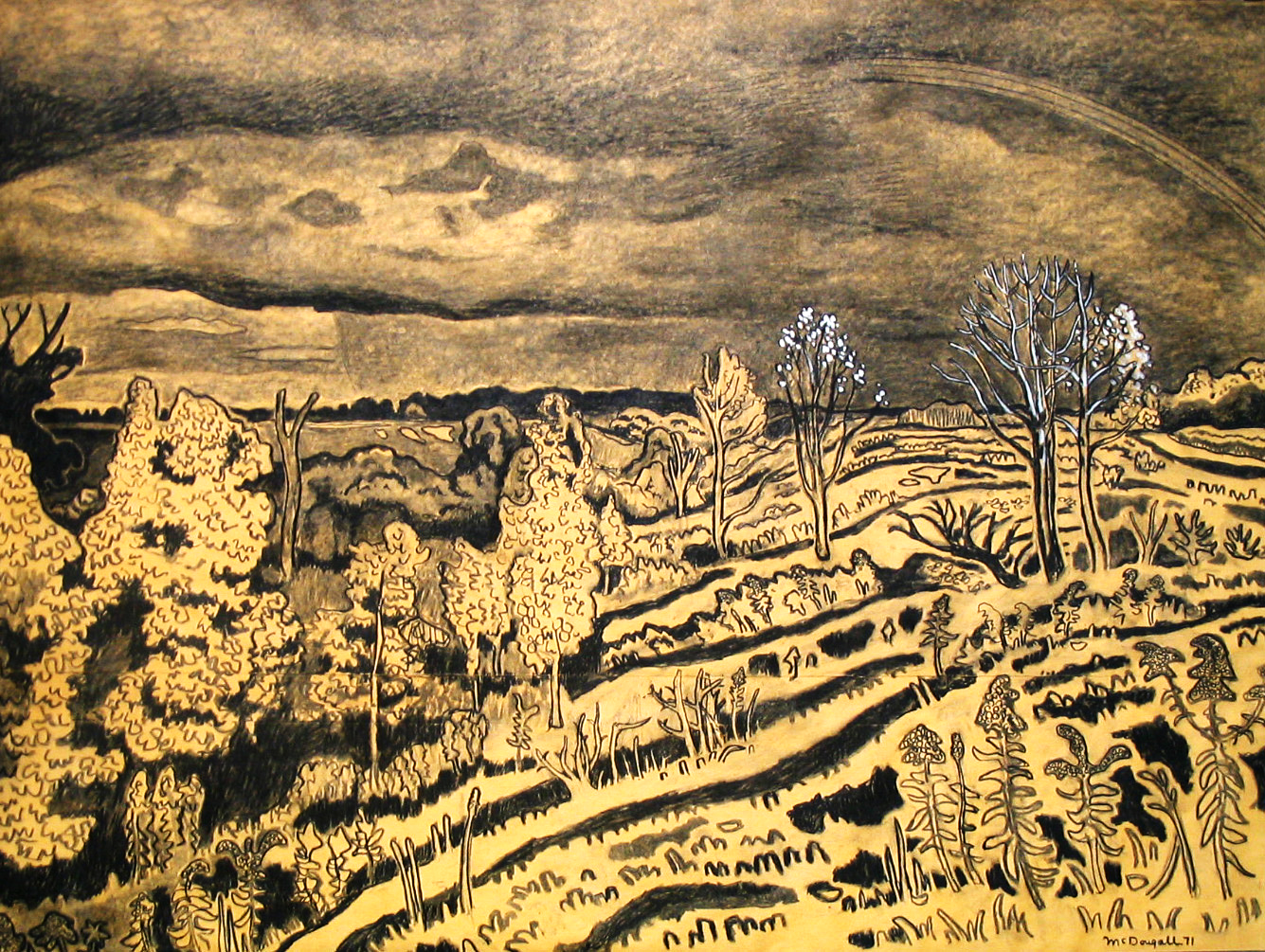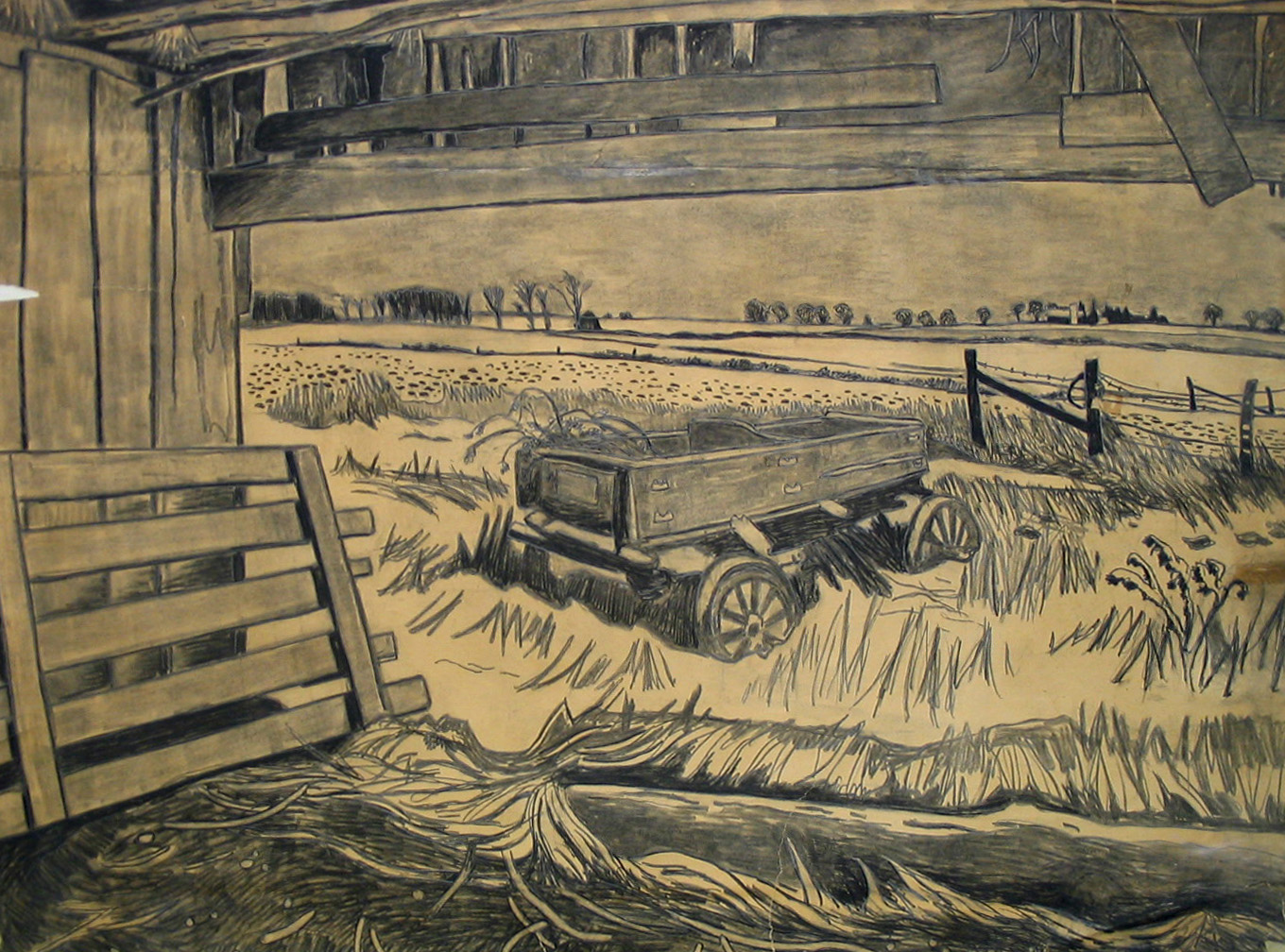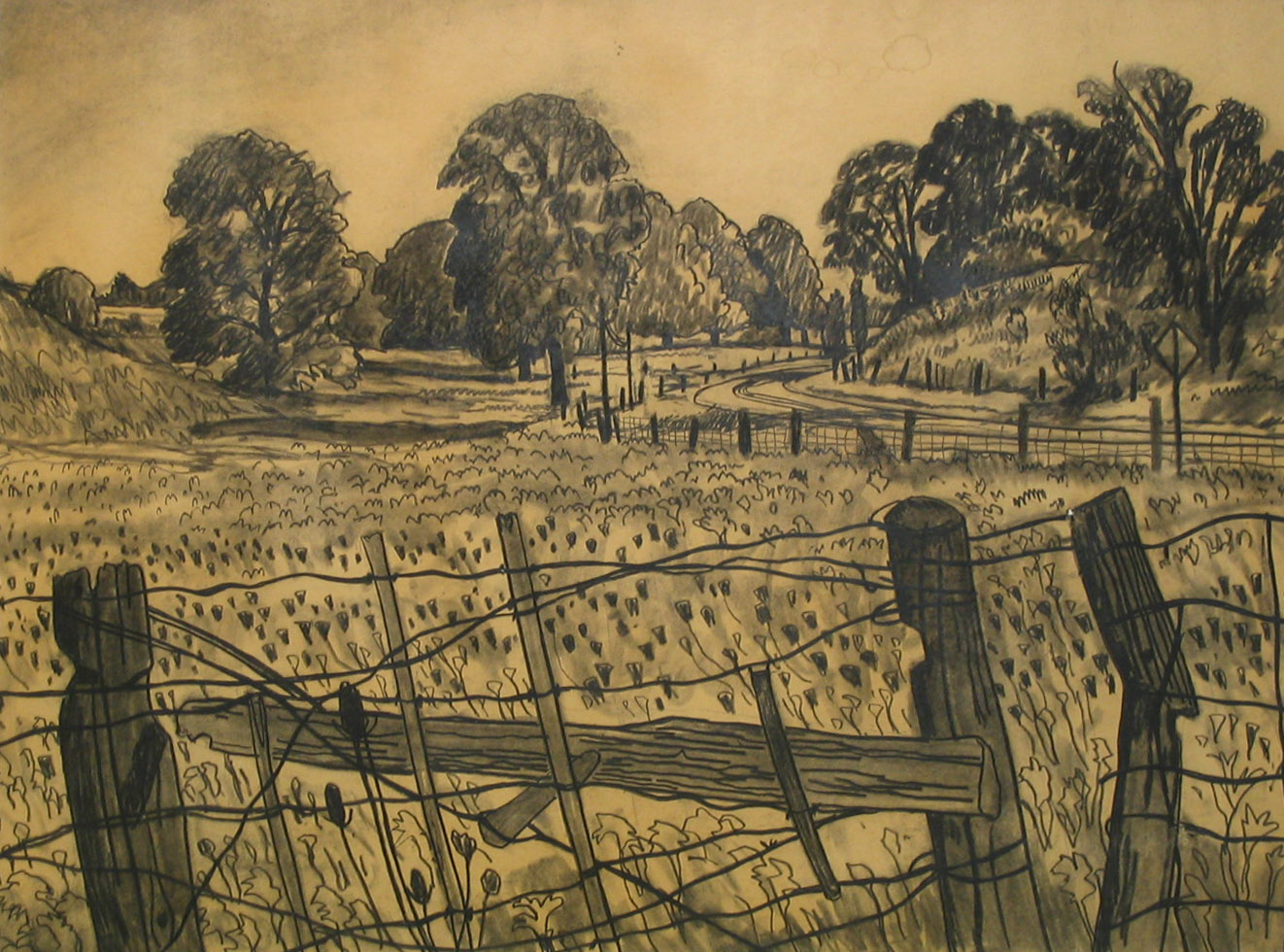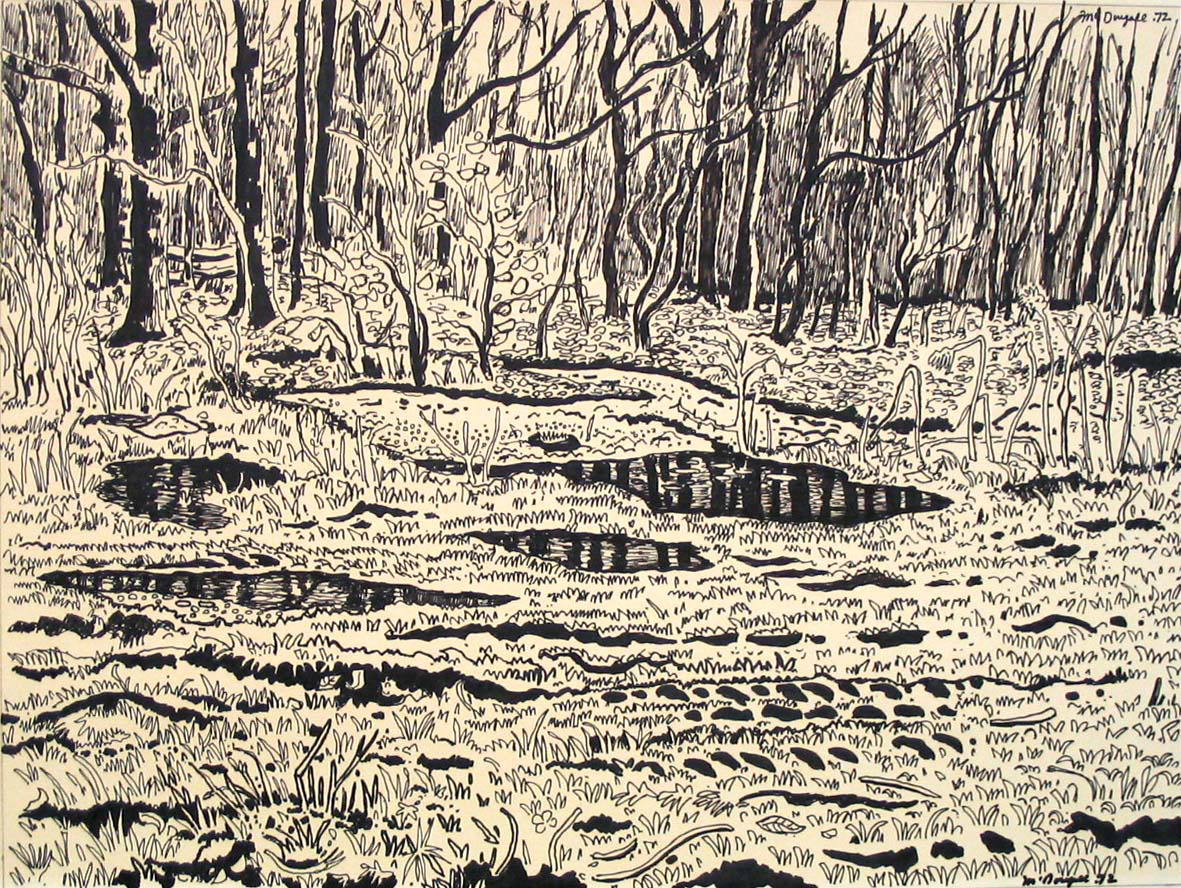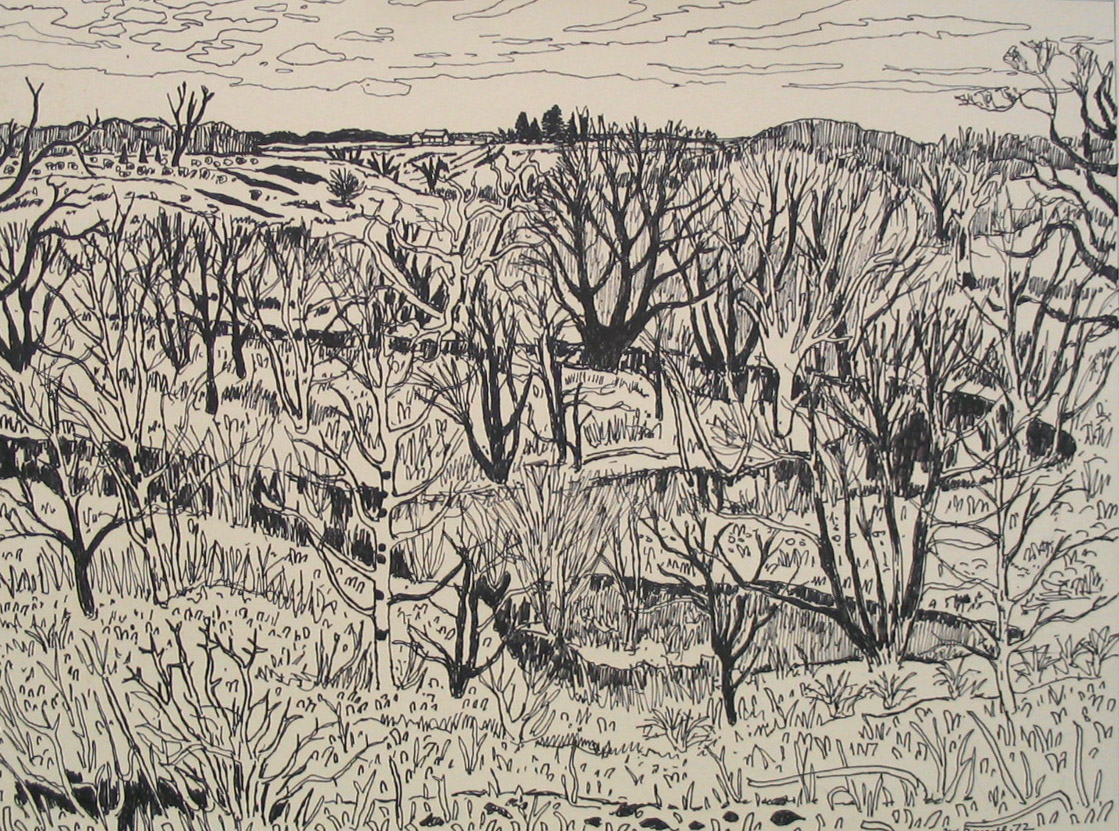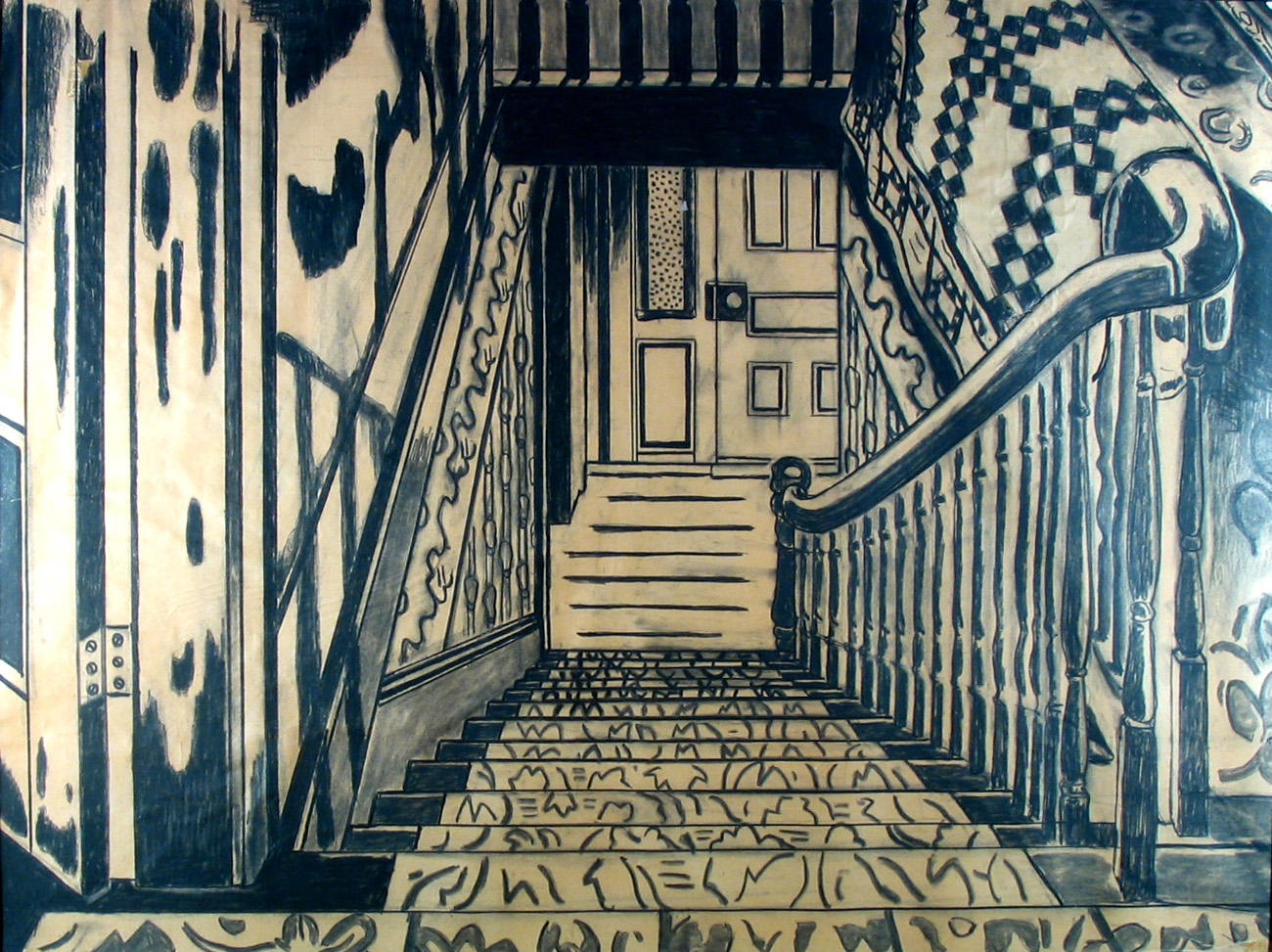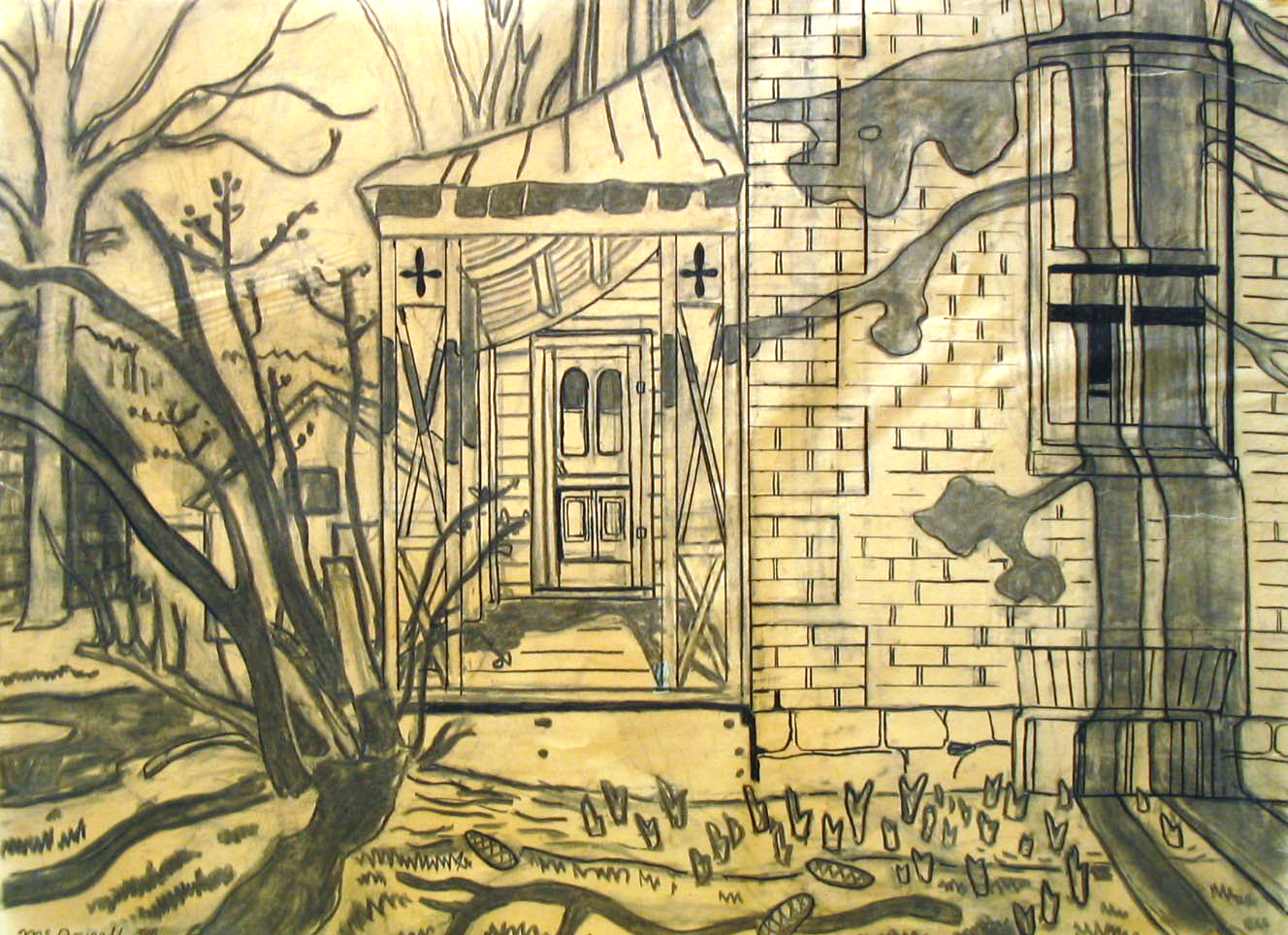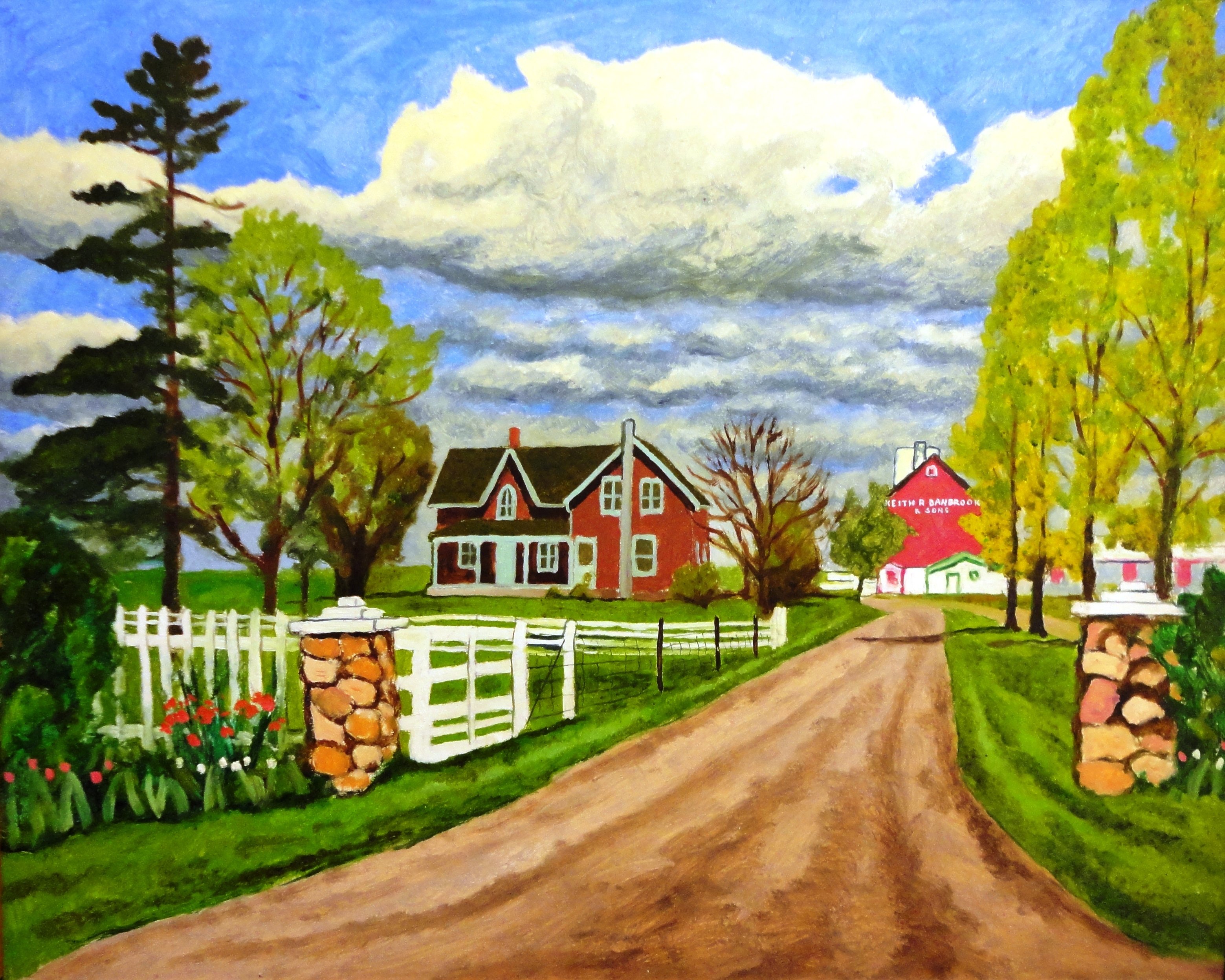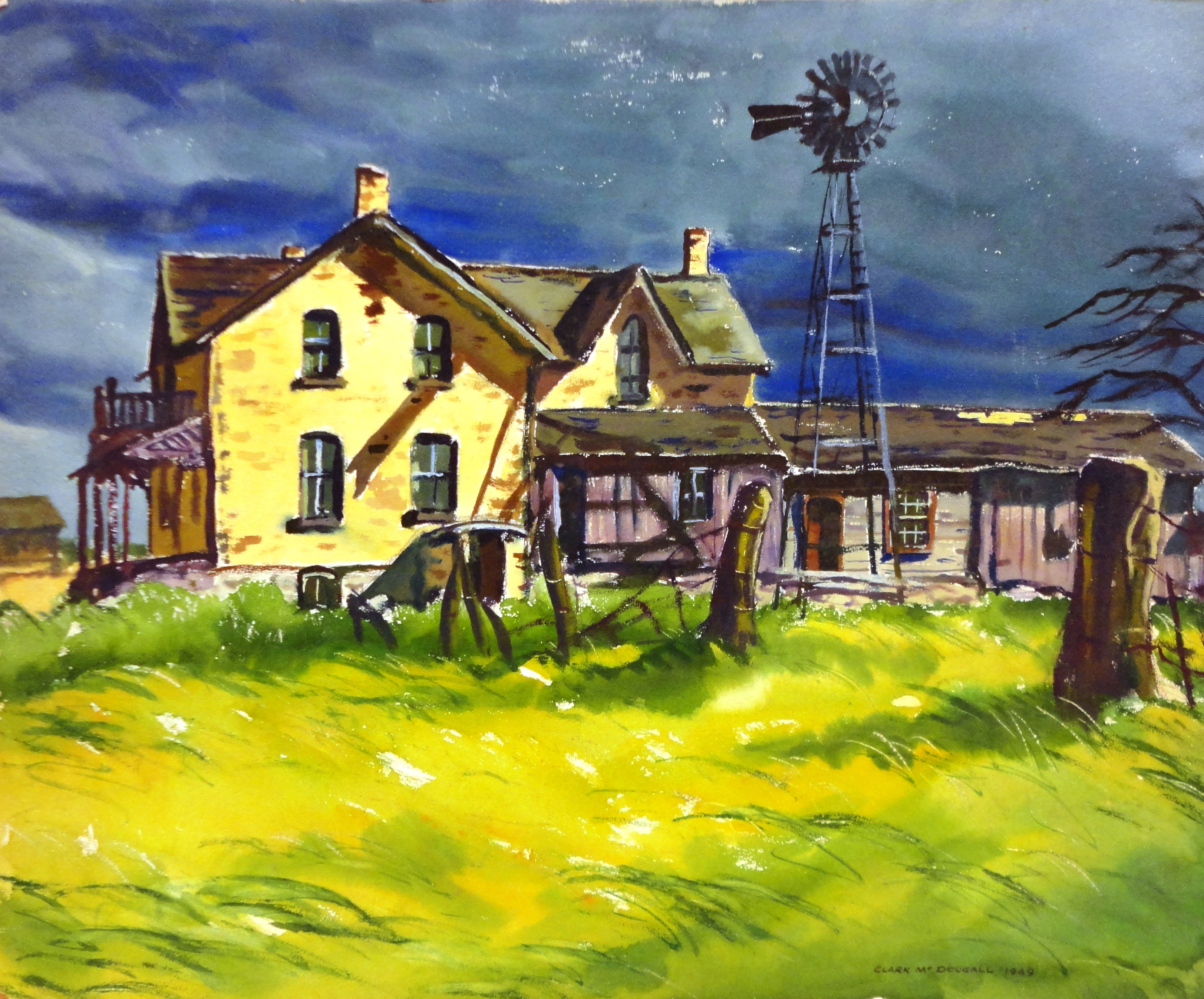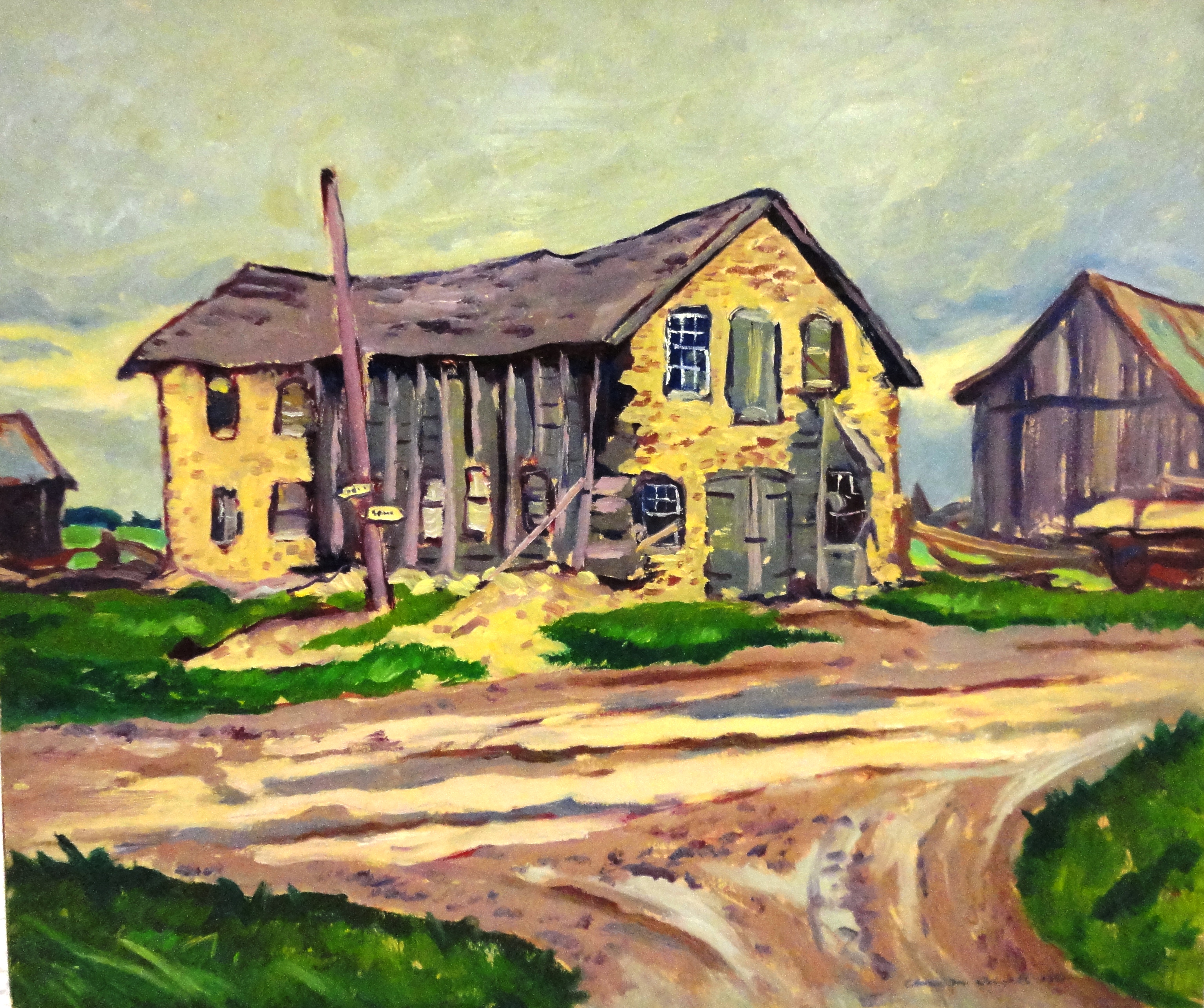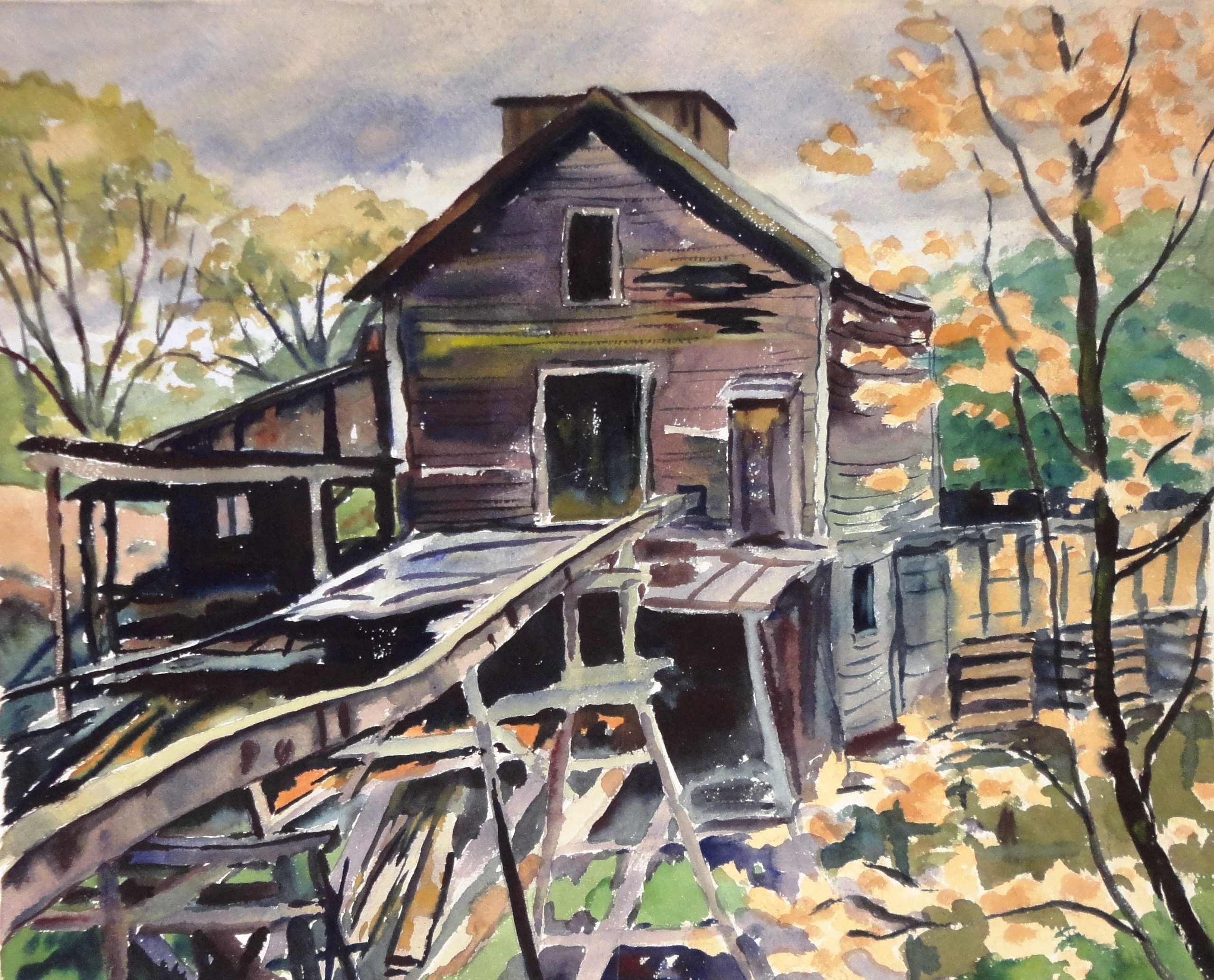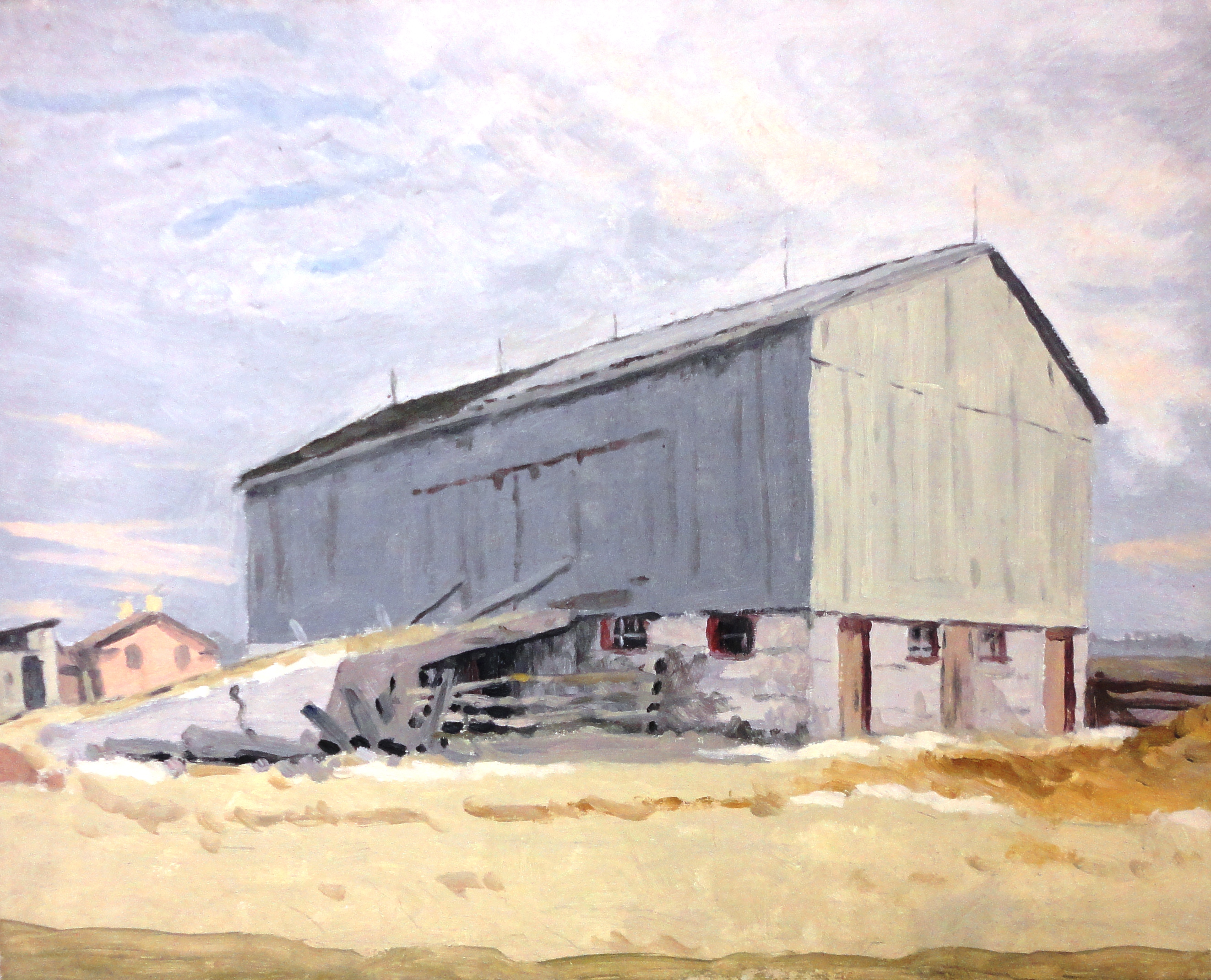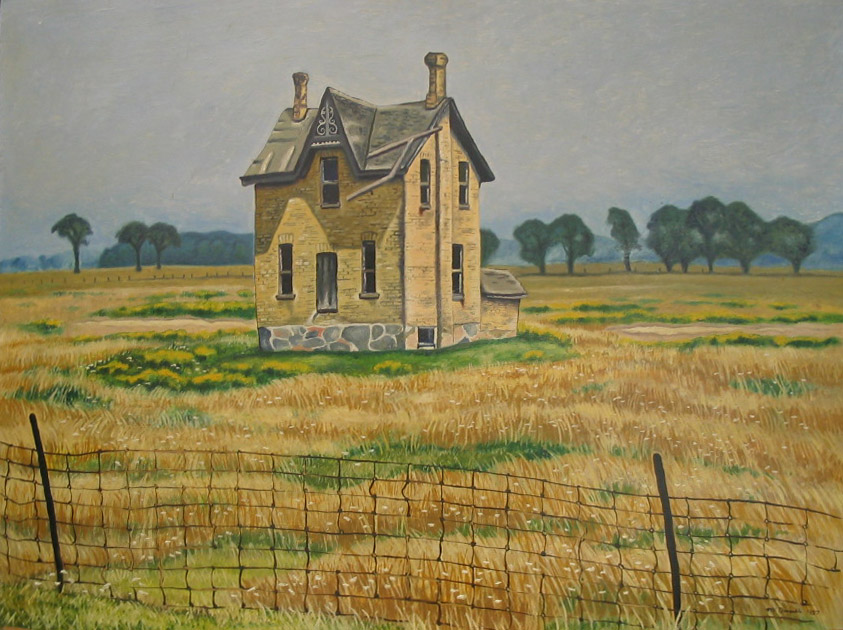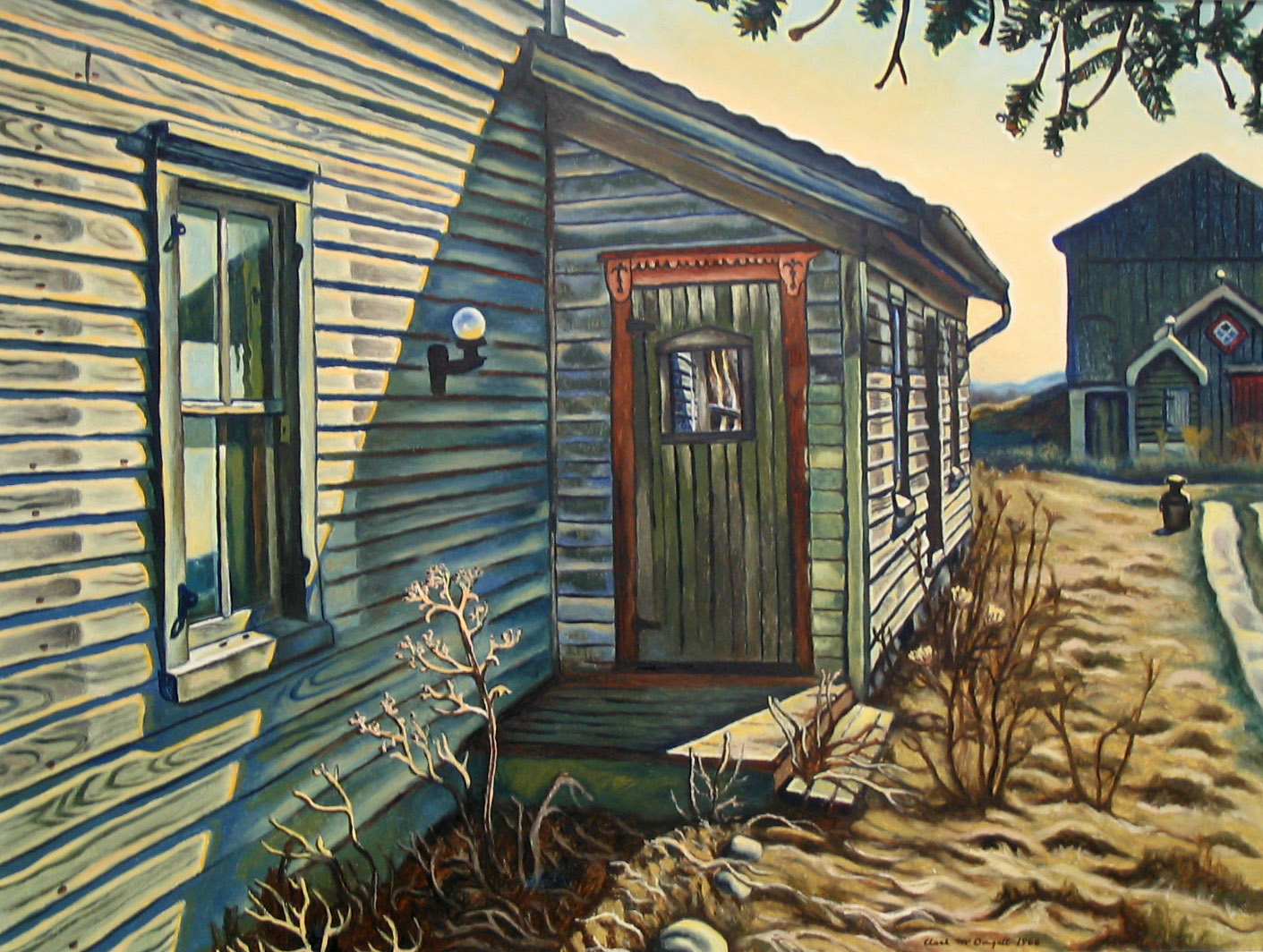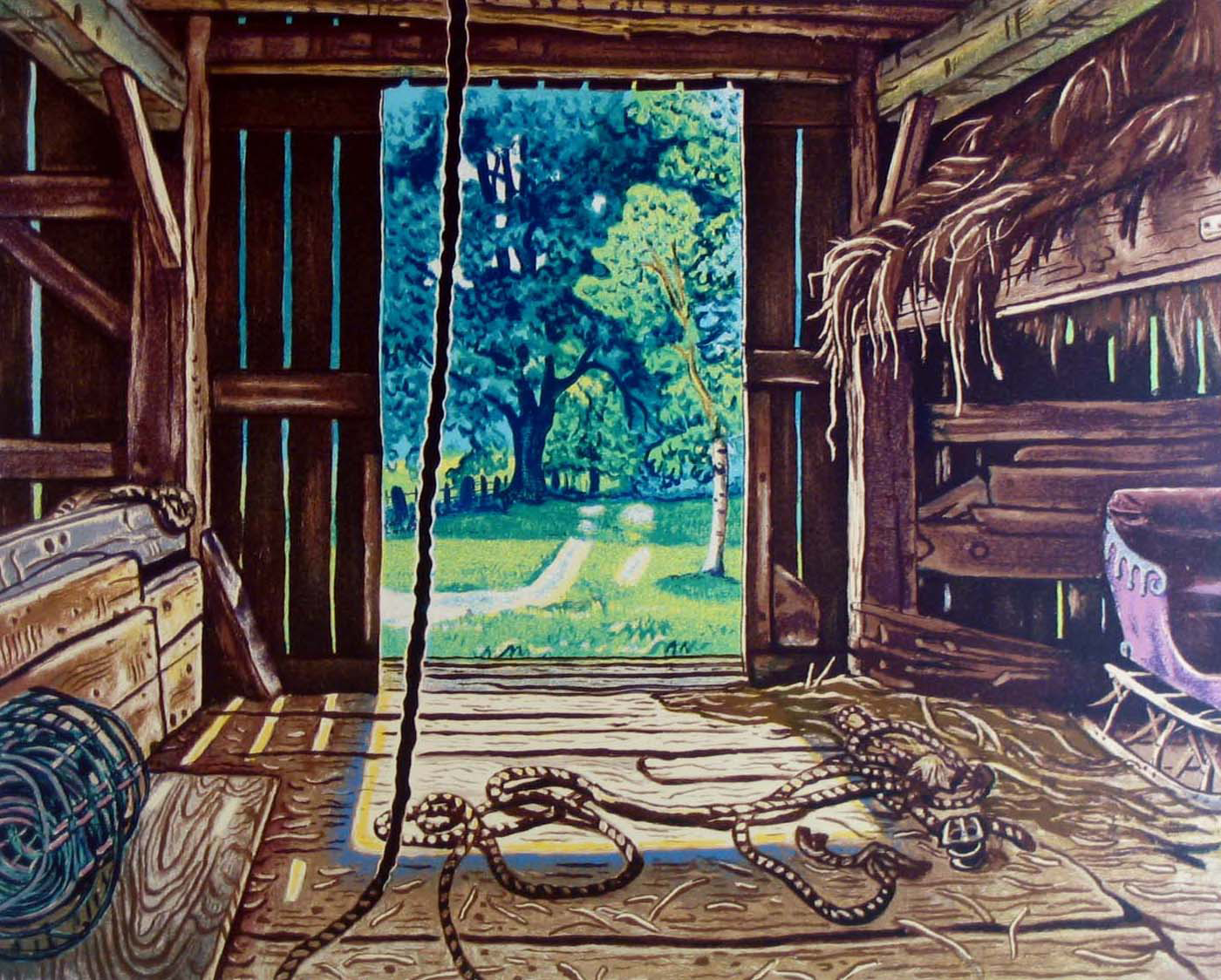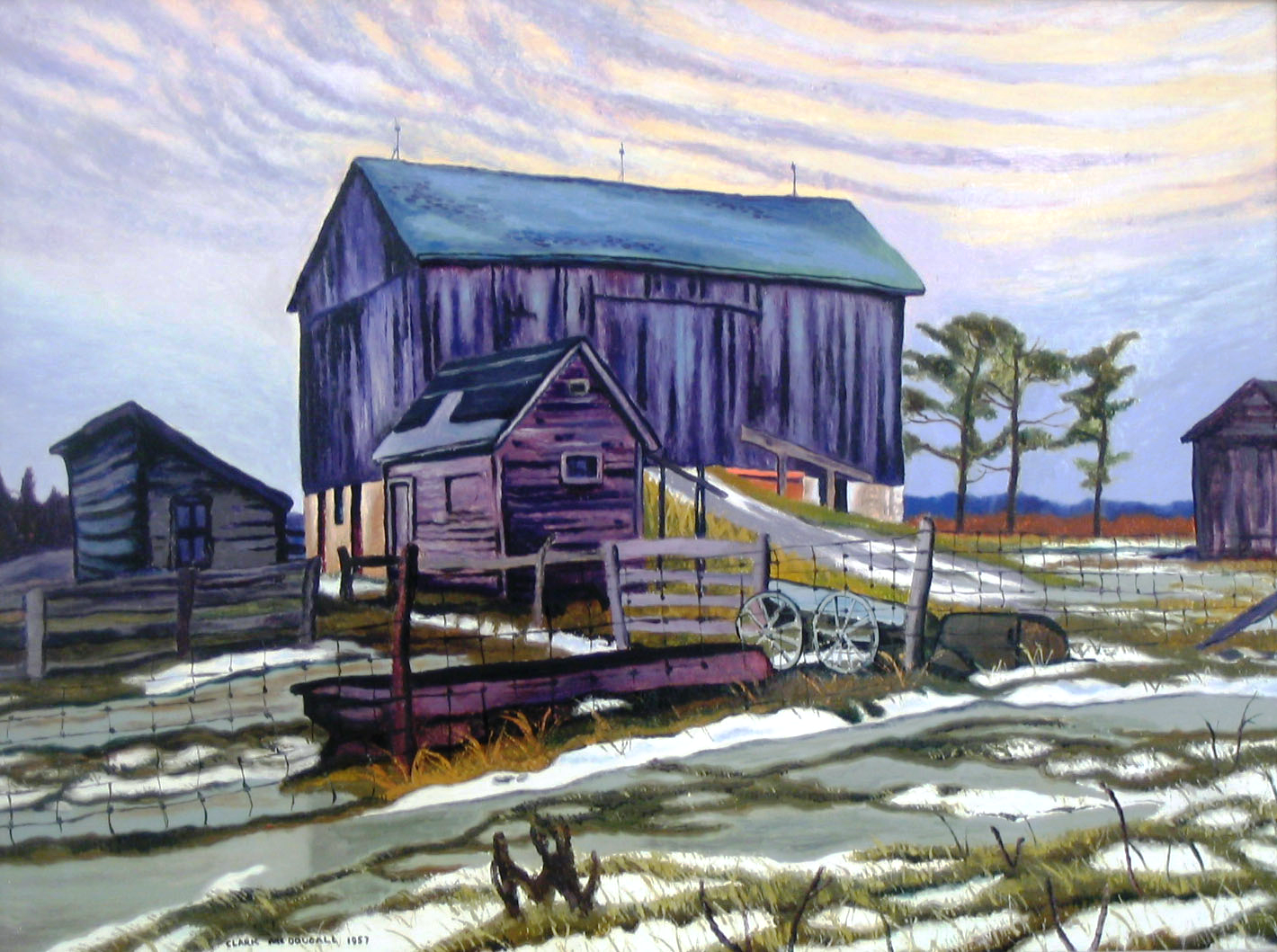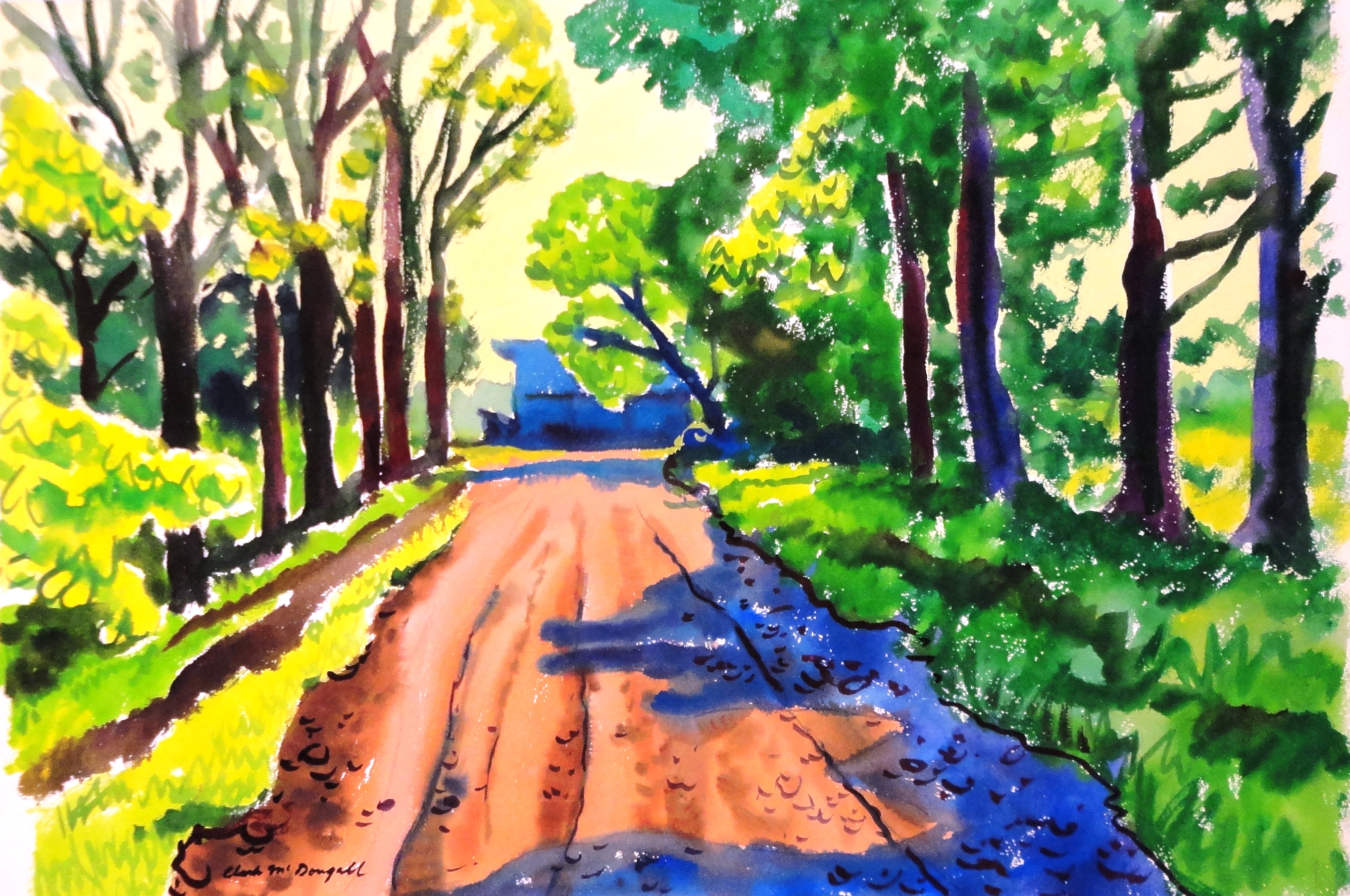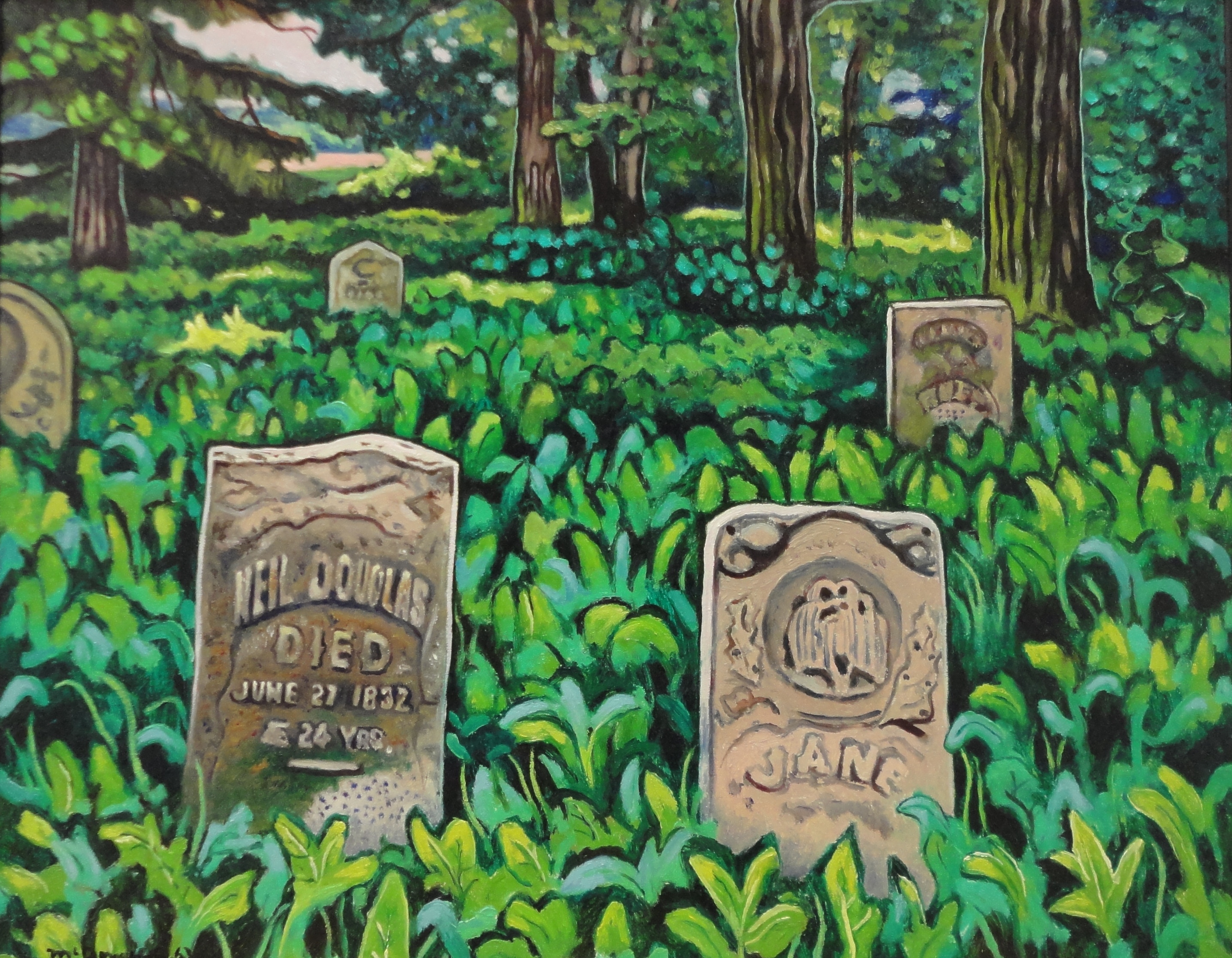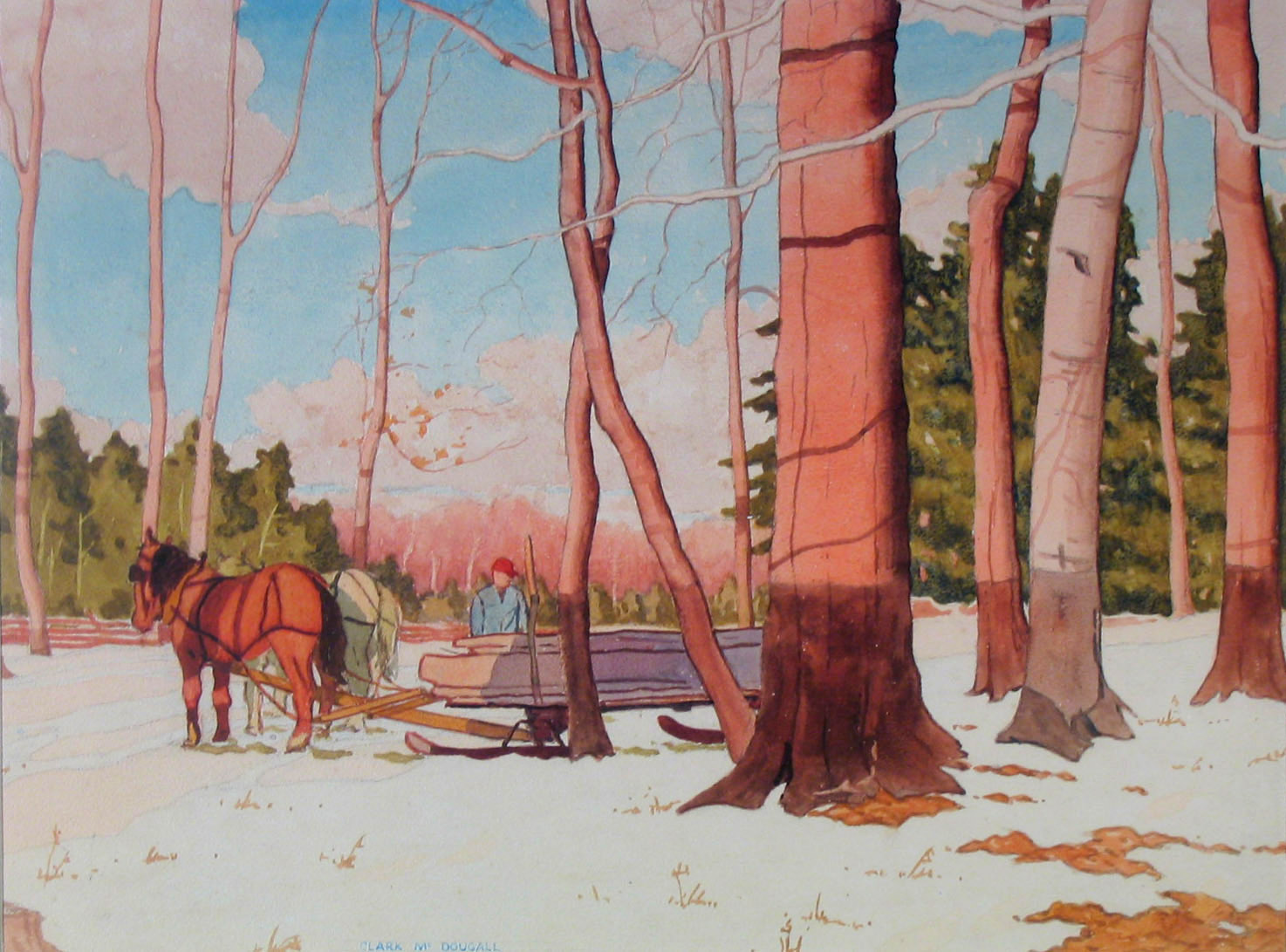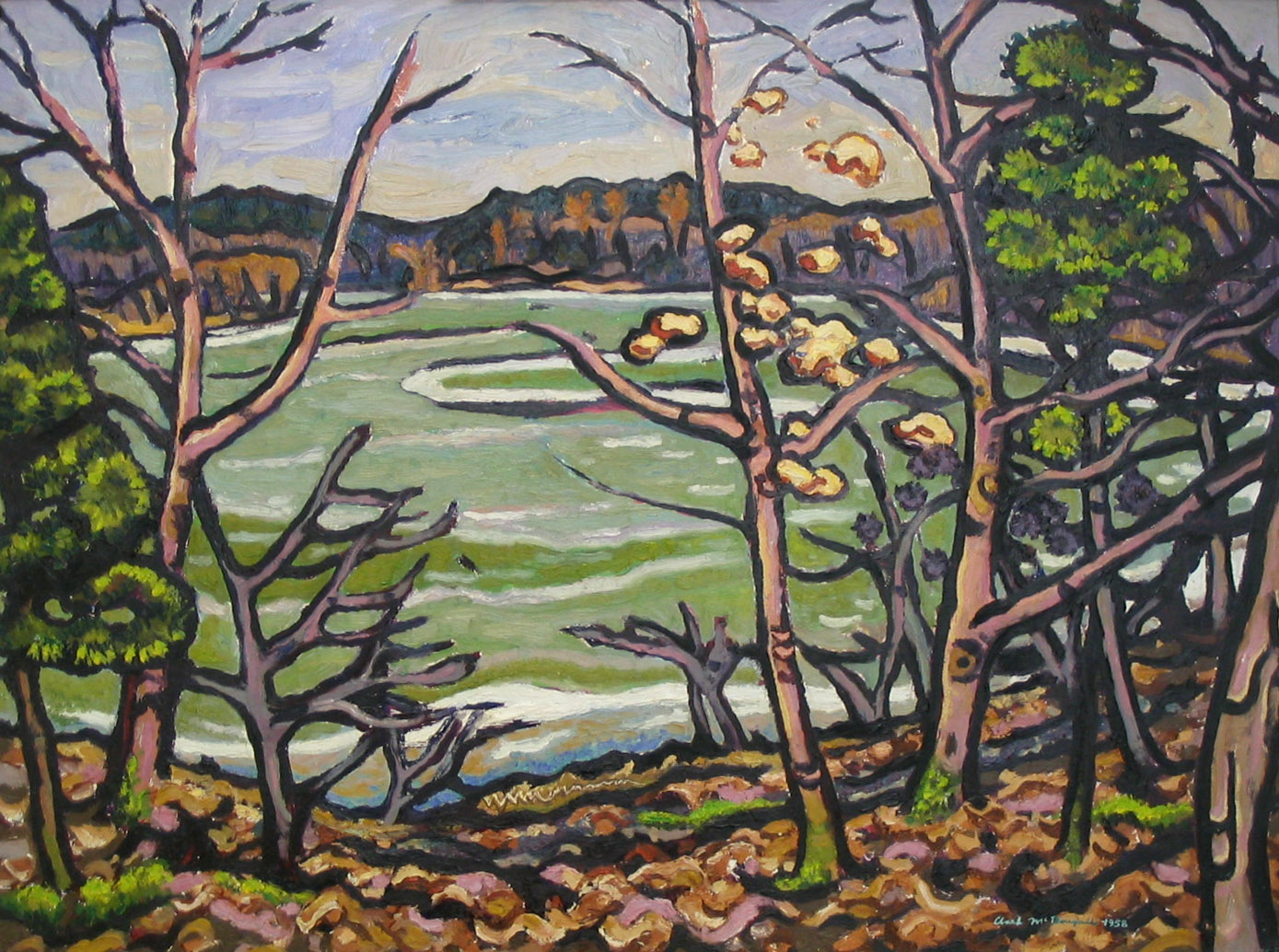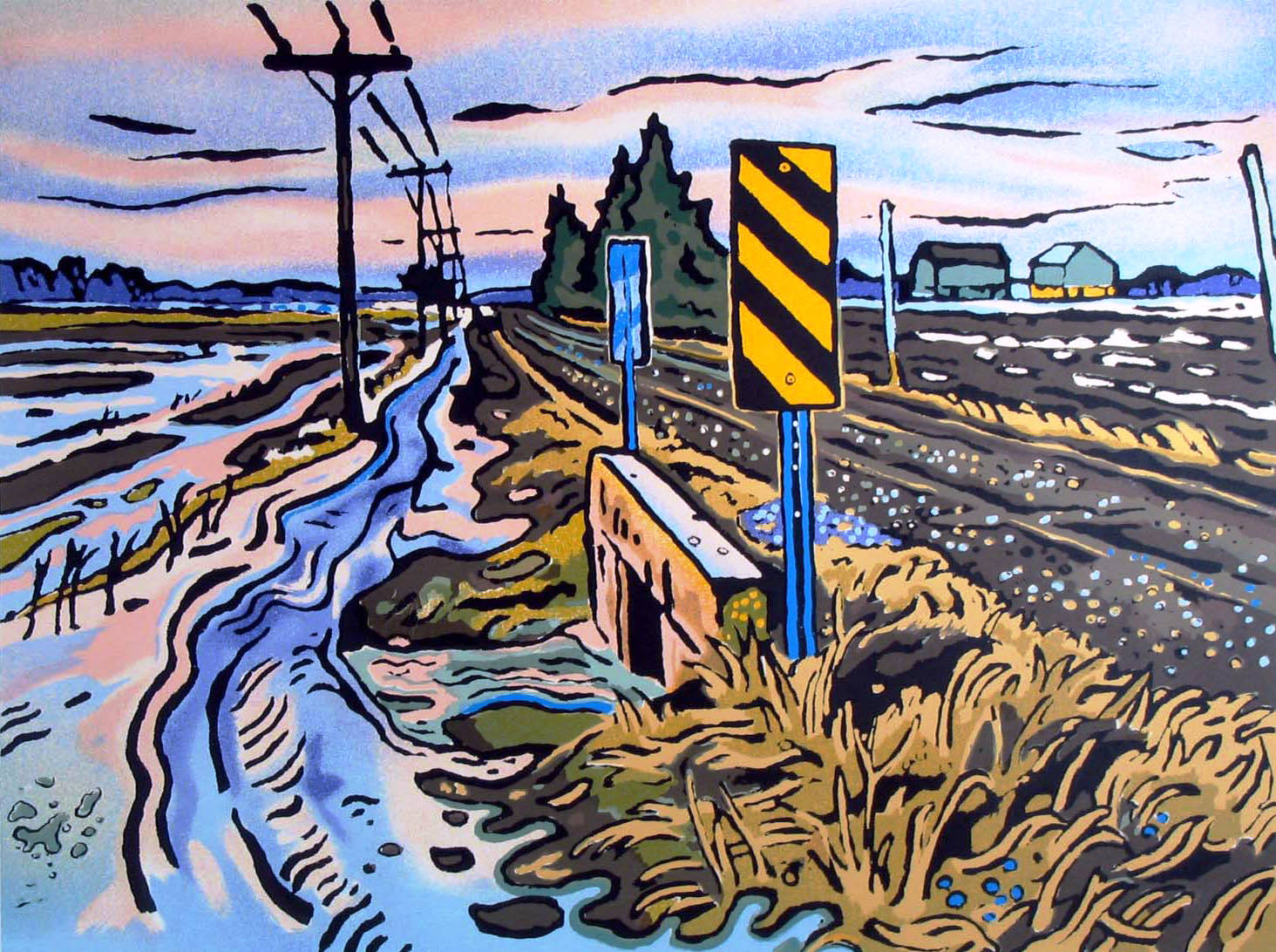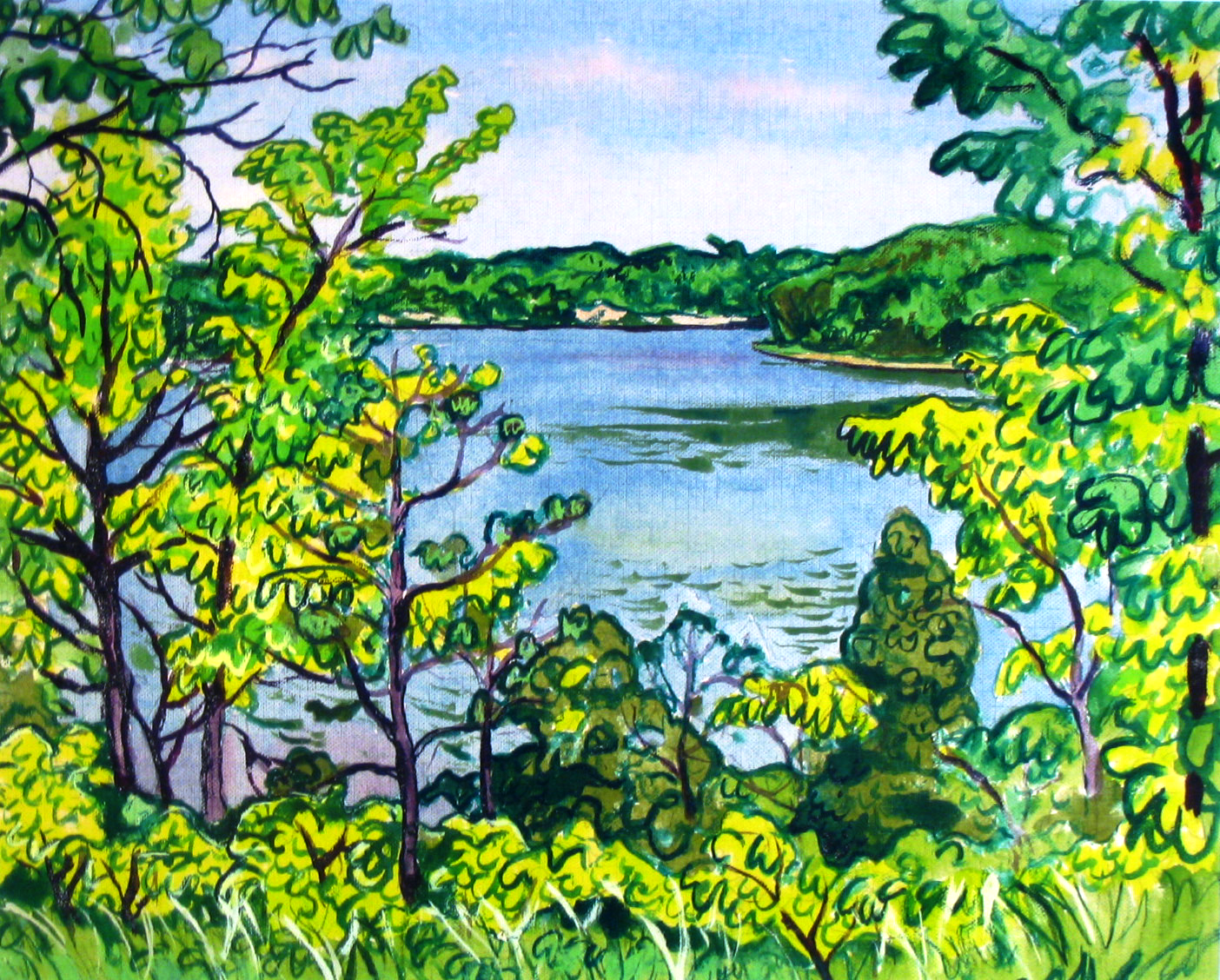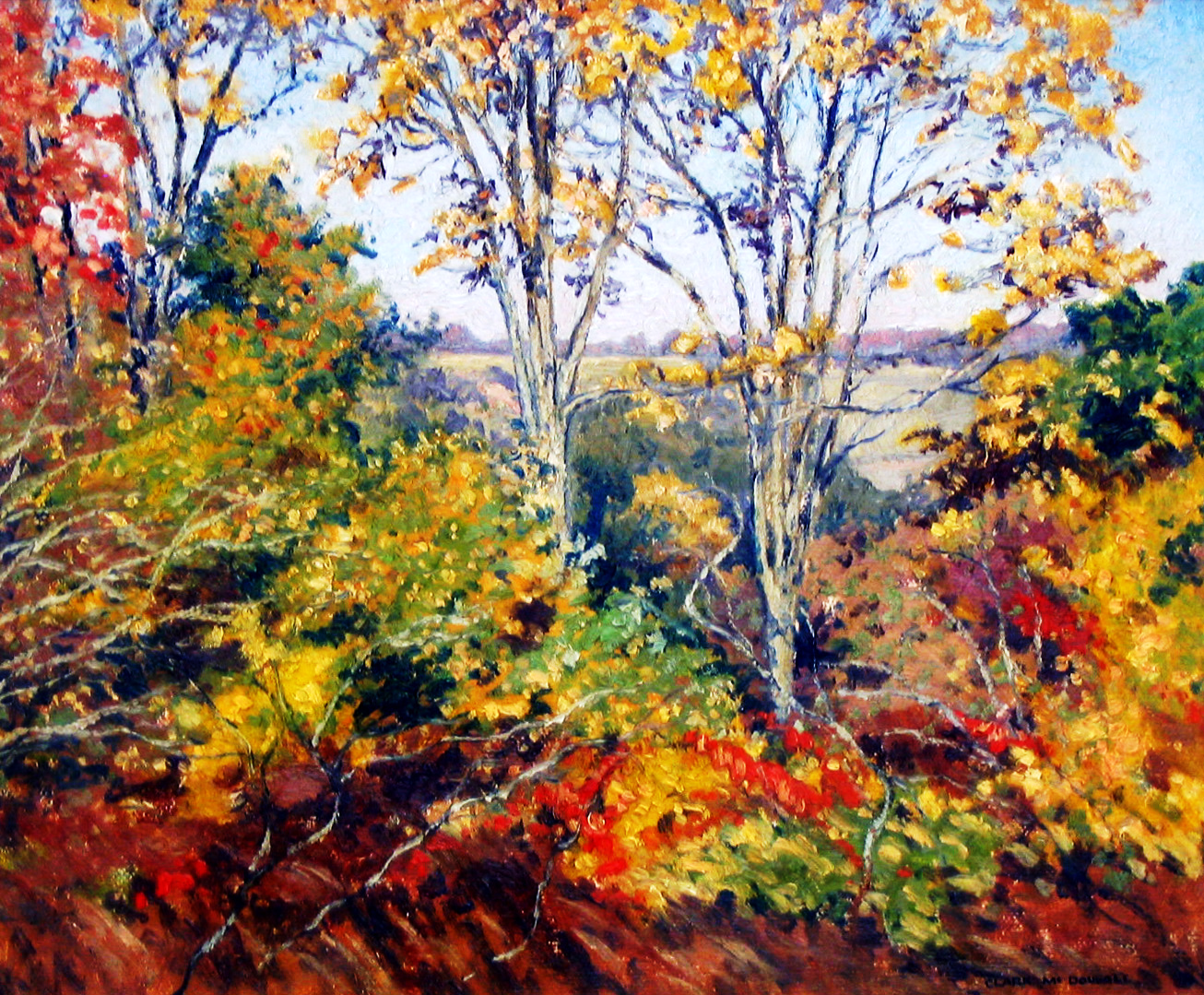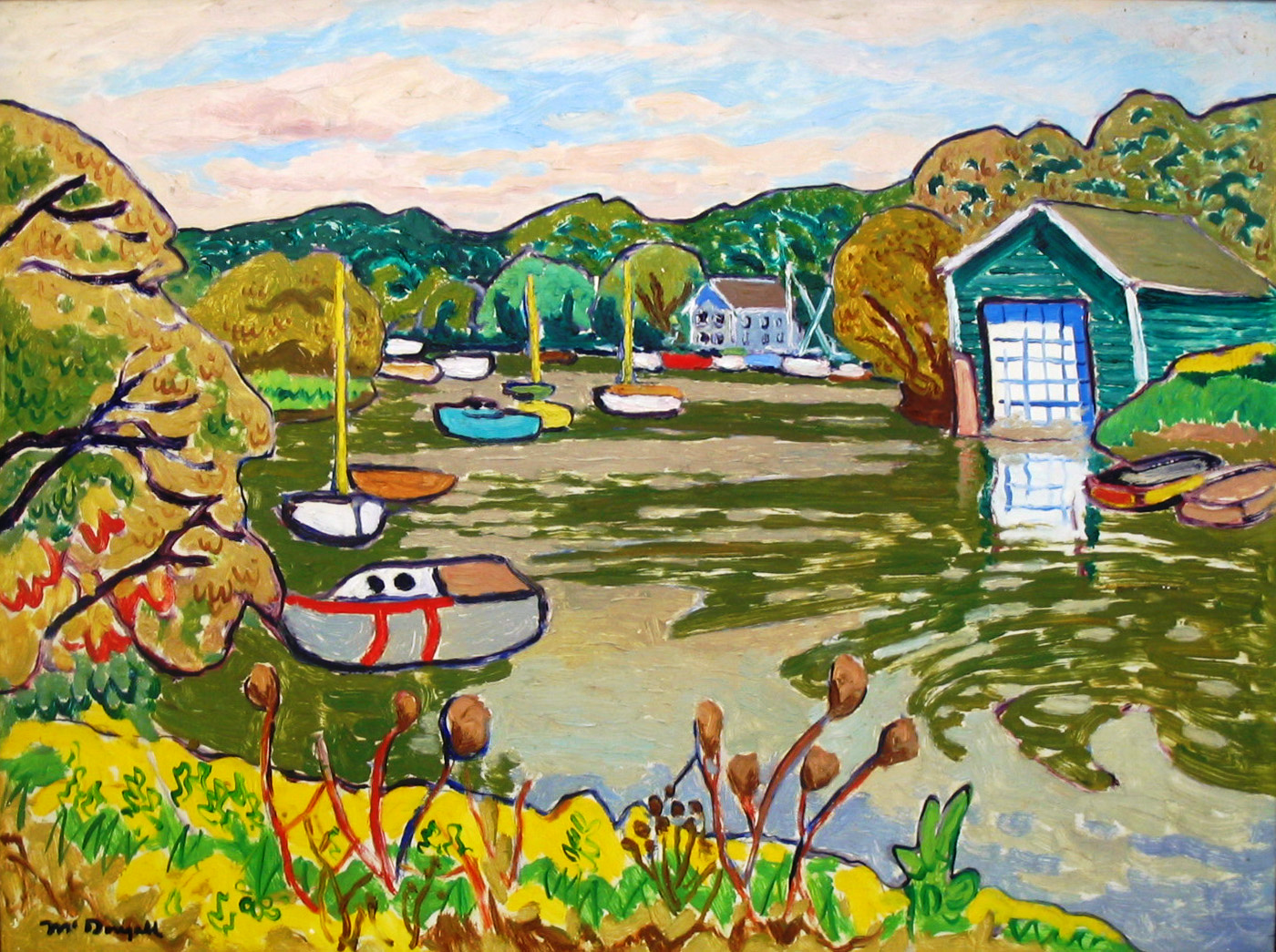FREE ADMISSION
Tuesday -Thursday 10am-4pm Friday 10am-8pm Saturday 12-4pm
301 Talbot Street, St. Thomas, ON
Holiday Hours
We will closed December 21 and reopening January 13, 2026.
Artist Profiles
Our role at the Public Art Centre is to promote the appreciation of the visual arts and support the practice of artists in St. Thomas and Elgin County. We have compiled a list of artists that contributed and defined our visual heritage.
Maxine W. Allen was born on January 21, 1916, in St. Thomas, Ontario. Allen and her husband Ralph were married in Dartmouth in 1943. After Ralph's service in the Navy, the couple returned to live in St. Thomas and Sarnia in the 1950s. Art was her passion. She was well-known locally for her watercolour landscapes of Northern Ontario. In her 79th and 80th years, Allen was thrilled to be part of the juried McMichael Gallery fall art show. She was a lifetime member of Pro Patria IODE and the Sarnia General Hospital Auxiliary. Allen passed away on December 3, 2013, at the age of 98.
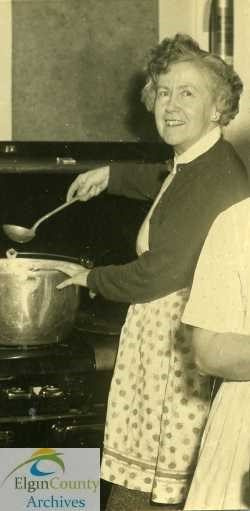
Written by Miss Carolyn Curtis, 1973 (from the files of the St. Thomas-Elgin Public Art Centre)
"Born in 1903 in St. Thomas, Ontario
Attended Wellington Street School.
I always liked to draw as a child - when around 12 years old did a few watercolours and pastels, mostly from imagination - had no training except what was taught in school in those days. A neighbour woman took me one day to show my efforts to Mr. Ross Osgood. I don’t recall what he said of my work but I remember his as a kindly man.
I attended St. Thomas Collegiate, graduating in Jr. Matriculation in 1922 - graduated in Household Science at Alma College in 1924 with the intentions of going onto McDonald Hall in Guelph to study to be a dietitian. Because of a hearing problem, was advised not to take up this line of work. My mother then suggested that I go to the Ontario College of Art in Toronto. I was not at all enthusiastic, but agreed to try it out for a year, enrolling in September 1924. The year stretched out to four, at the end of which I graduated in Commercial art under Mr. J. E. H. McDonald.
This was an interesting period as several of the teaching staff were members of the famed Group of Seven, namely Arthur Lismer, J. E. H. McDonald, Frederick H. Varley. Others were J. W. Beatty, Emanuel Hahn who taught sculpture, George A Reid who was the principal of the school then, Robert Holmes, noted for his paintings of Ontario wild flowers and others.
I had taken up Commercial Art with the idea of earning my living in that line, but at that time there were few openings for women and also the Great Depression come along about 1931. I taught handicrafts (which I had learned while at Alma College) in Y.W.C.A. and Girl Guide camps in the summer and also for a short period at Alma College. When the Second war came on, there arose a demand for honour rolls for churches and schools and I did a great deal of lettering on forms supplied by the Government. In the following years, I also did illuminated addresses and certificates for the City of St. Thomas, local organizations and individuals, where the careful training received under Mr. J. E. H. McDonald came in useful. Their were also several Books of remembrance executed.
In the meantime, I did some outdoor sketching in pencil and studied composition under Mrs. Lila Knowles at Alma College, using that medium. I also studied lino cuts under Mr. Harry Tallman at Alma. This was about 1934. Because I was interested in black and white work, Mrs. Knowles suggested that etching might be a good medium for me to follow so in February, 1977 I went to Toronto and studied under Mr. Harry Wallace for a few weeks.
In 1939, I studied etching by correspondence under Mr. Harry Sternberg on the staff of the Art Student’s League in New York. He proved to be an excellent teacher as I was also taught the rudiments of composition. Later, because of the war, there was a shortage of metal so I went back to lino cuts, working on my own, in my spare time. I began to send work to the Society of Canadian Painter-Etchers and Engravers. On the strength of the linocuts I was accepted as a member in 1944. In 1945, I studied aquatint Etching under Mr. Sternberg again, Because I had a tendency to be rather “tight” in my work, he suggested doing studies in black and white wash in order to correct this. This proved to be a turning point as I became interested in watercolour painting, and made my first attempts at outdoor painting in that medium while on a holiday in north Bay in August 1945.
In 1947, I had the opportunity to study for a week under Mr. Nicholas Hornyansky, noted for his very fine aquatint etchings. He was a kindly, conscientious teacher, but his methods were the opposite of Mr. Sternberg and I found myself in difficulties. However, I was becoming more and more interested in watercolours and finally dropped the printmaking line. I remained however as a member of the S.C.P.E.&E. Until 1958.
While the early training received during the four years at the O.C.A. was a great help, when I finally took up the watercolour medium in 1945, I leaned mostly from books on the subject in the local library and elsewhere, and sent painting to the Groups shows held each year also in the Library.
Early in 1966, my sister-in-law, Mrs. John F. Curtis had some interior decorating done in her home. I was commissioned to do six small watercolours of local landmarks for her. They created much interest to friends who came to the house which in turn led to more commissions.
At the October meeting in 1966, The Women’s Art Association had a combined showing of Mrs. Lila Knowles’ and my paintings in the parlour of the Y.W.C.A. In April 1969, the University Women’s Club had an art auction at the Memorial Arena with proceeds being used to form a nucleus of the work of Elgin County artists. I put in the “Old Church in October” and several lino cuts as my contribution. Later, who paintings, the Cedarhurst house at 76 Talbot Street and the Amasa Wood Hospital were purchased for the permanent collection at the Art Gallery which was opened in 1970. Several paintings were sent to the regional show held in the 20/20 Gallery in London, in December 1971. In April 1972, I won third prize for watercolour “Lilacs” at the Second Annual Juried Show at the local Art Gallery. I took part in a four man show in the local gallery in January 1973". ~ Carolyn Curtis 1979
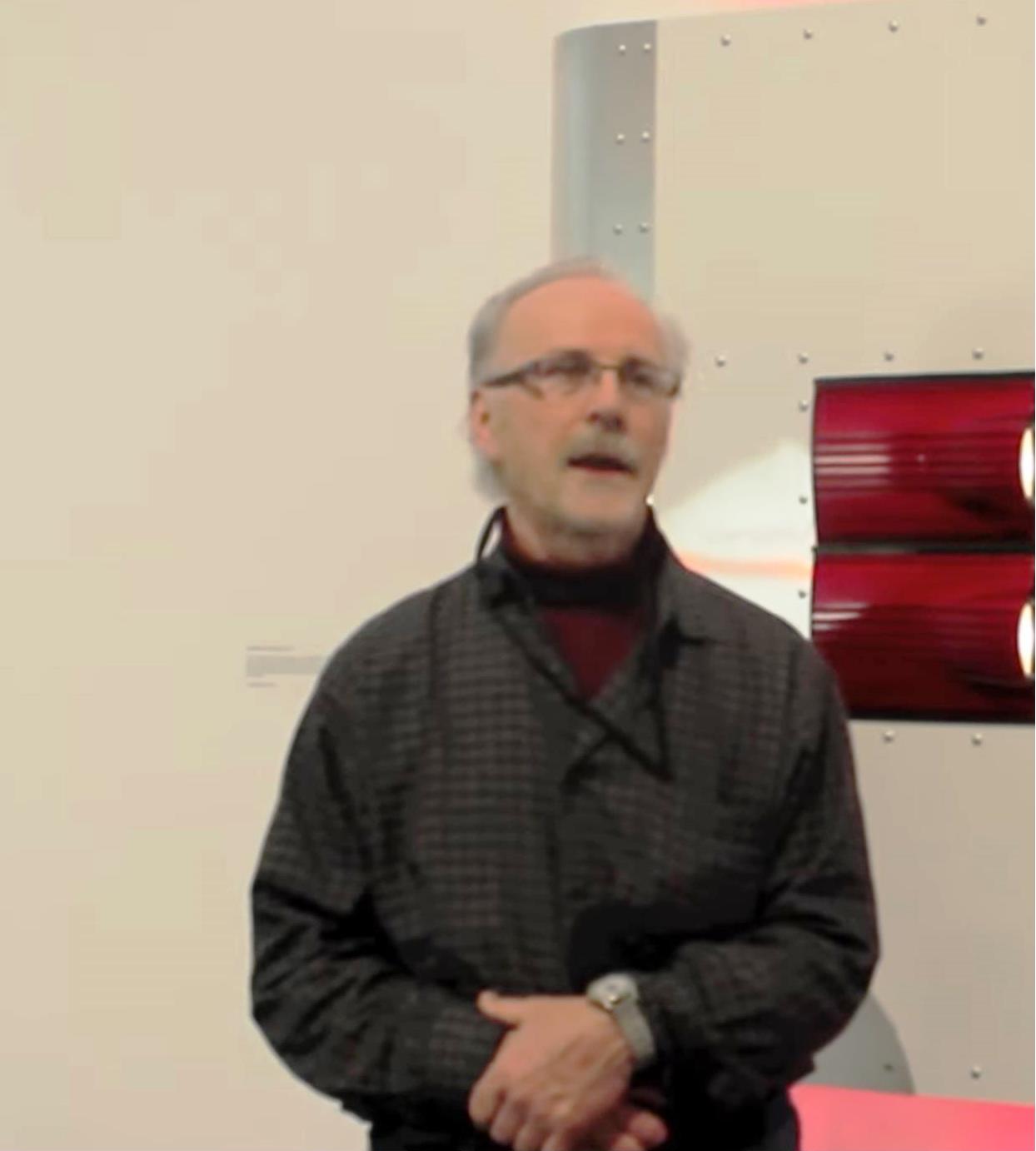
Robert Bozak attend the Kootenay School of Art in BC from 1963 to 1964. He then went on to receive an Honours Diploma at the Alberta College of Art in 1967 and a MFA from York University in 1988. Until about 1969, Bozak worked primarily as a potter, moving into a variety of media from lithograph to neon.
In 1972 he became interested in representational imagery. He says in his AGO Artist's with their Work series, "Television was mainly responsible for involving me with my environment and, as a result, for my using it as a source for art works. People and their activities are important to me - my activity is that of documenting this importance." Throughout the 1970's and 1980's he did a series of portraits of great Canadians such as Stompin' Tom Connors and Foster Hewitt.
He was also an active player in the London, Ontario art scene. He along with Curnoe and Favro was a founding member of the Forest City Gallery, one of the first parallel galleries in Canada. Since 1997, Bozak has been a regular participant in "Fire and Earth" the Contemporary Canadian Ceramics exhibit. Bozak has had many one-man exhibitions, including one at the Woodstock Art Gallery in 1978, and is represented in several important public collections.
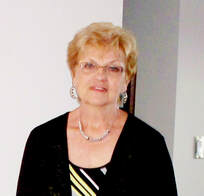
Bio / Statement
Betty was born in St Thomas, Ontario and has resided in Elgin County all her life. Drawing and sketching from an early age, she first started painting in 1973. Studying with many teachers over the last 30 years has broadened her scope in techniques and experimentation, but she admits her realistic style is her own and she paints what she feels. Spending a lot of time in the north, Betty has learned to appreciate clear lakes, beautiful sunsets and the reflection of nature. Oil, watercolour or pastels are the mediums she uses to capture scenes and landscapes from her travels abroad. She also has a special interest in painting the local history of Elgin County. Betty firmly believes that an original painting is a gift from the heart. Each painting begins with a special experience or thought and ends on the canvas as a one-of-a-kind image. Betty loves to spend time with her grandchildren, watching as their artistic abilities develop and grow. Betty is a member of the Port Stanley Artists Guild, the Lambeth Art Association, and a long-time member of Beta Sigma Phi Sorority. Her paintings can be viewed at Portside Gallery in Port Stanley where she is a co-owner. Many of Betty’s paintings can be seen on the wall of private homes & business offices around Ontario and as far away as the Southern States, Holland and Scotland.
Associations
Port Stanley Artists Guild
Lambeth Art Association
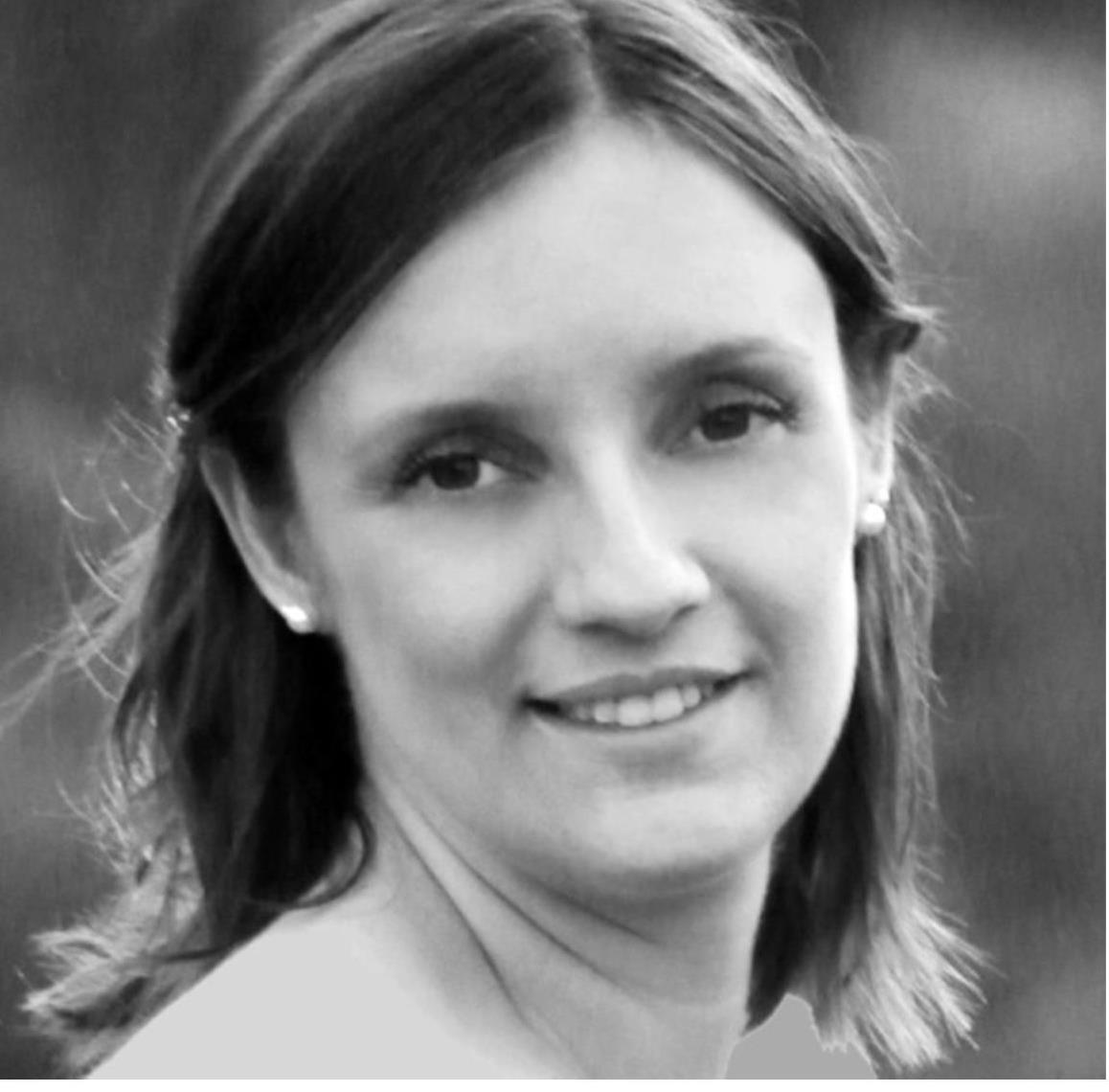
Amanda was born, grew up, and currently resides in St.Thomas, Ontario. She has always been drawn to creative endeavours and fell in love with printmaking while attending the University of Western Ontario, from which she graduated with an Honors Bachelor of Art degree in Visual Arts, a Graduate Diploma in Arts Management, and a Bachelor of Education degree. She has been building her body of work by creating limited-edition multi-colour relief prints using mainly
linocuts for over ten years. She continues to print through the partnership she has enjoyed with the  Riverside Print Group from Cambridge, Ontario, who have generously allowed her access to their printing press over the years. She is also experiments with hand pressing linocuts in her own studio at home. She is a current member of
Riverside Print Group from Cambridge, Ontario, who have generously allowed her access to their printing press over the years. She is also experiments with hand pressing linocuts in her own studio at home. She is a current member of  The Art Emporium with a permanent display in the boathouse gallery, and has shown at many outdoor art festivals throughout southwestern Ontario, in local group shows, and in other galleries in St.Thomas, London, Woodstock, Waterloo, and Brampton.
The Art Emporium with a permanent display in the boathouse gallery, and has shown at many outdoor art festivals throughout southwestern Ontario, in local group shows, and in other galleries in St.Thomas, London, Woodstock, Waterloo, and Brampton.
Amanda considers her art-making process to be one of both deconstruction and reconstruction of landscape spaces. The design process divides the landscape into shapes but the printing process rebuilds the landscape through the layering of colour. This creates something familiar but precarious, as nature is, and comments on the beauty and destruction of natural spaces. For her, the printmaking process is symbolic: as many of these places are being destroyed, her art-making process allows her to put them back together, building them piece by piece. But there is always the moment of realization that the reconstruction is symbolic, and in reality all we have left are these reconstructed images and not reconstructed spaces.
Charles A. Davison was born on September 25, 1880, in Guelph, Ontario and educated in that city's Collegiate Institute. He took private lessons and started painting in his early teenage years. From 1900, he lived and worked in Toronto, Golden, B.C., Edmonton, Vancouver, Victoria, and Regina, returning to Ontario in the 1920s. Simcoe, St. Catharines, Hamilton, and Woodstock were all temporary homes until he finally settled in St. Thomas in 1931. Although a professional watchmaker, his oil painting has been described as a full-time hobby, which garnered several awards. His work primarily of the Rocky Mountains and Southern Ontario landscapes has appeared in numerous exhibitions: Hamilton (1927), the Canadian National Exhibition, and Western Canada. He was also an avid photographer and horticulturist. Davison passed away on May 16, 1976, at the age of 96.

Artist Statement
"I was born in Scotland and immigrated to Canada with my family when I was a child. I spent half a century living in Toronto before moving to St. Thomas, the home town of my partner, Neil Hubert. I think I started to paint as an exploration: what could I produce, and what would something I made look like? I still paint for the mysteries, and also because of the pleasure it gives me. Being self taught, my studio is like my won private school where I learn something every day through tips from friends, and trial and error. When it's working and I'm in the moment, time flies and when I wake up sometimes there's a finished canvas on the easel. If it isn't going great, time can stand still. Either way, I just enjoy being in my studio, creating my own images in my own environment I like people to feel good when they look at my work and if one of my canvases make it's way to their home it becomes part of that person's daily life then hopefully they get to share in that moment when it all came together" ` Robin Grindley
Robin has exhibited extensively in Toronto, ON and his work can be found in many private collections.
Upcoming exhibition: St. Thomas-Elgin Public Art Centre April 17 to May 29, 2021
See to view more of his  artwork.
artwork.
2019 Exhibitions
Railway City Arts Crawl, group show, February
Art and Soul Café, Port Stanley, January to May
Harbourfront Art Show, Port Stanley, August
Solo show at SOMA Chocolate, Toronto, August
Juried show at St.Thomas Elgin Public Art Centre, In The View of the Artist, September
Group show at Windjammer, Port Stanley, November
2018 Exhibitons
Railway City Arts Crawl, group show, February
Art and Soul Café, Port Stanley, January to May
Harbourfront Art Show, Port Stanley, August
Solo show at 401 Richmond, Toronto, August
Juried show at St.Thomas Elgin Public Art Centre, InThe View of the Artist, September
Group show at Windjammer, Port Stanley, November
2011 to 2017 Exhibitions
June / December 2017, Windjammer Inn, Port Stanley
September 2017, St. Thomas-Elgin Public Art Centre
July 2017, Illumine Gallery, St. Thomas
May 2017, Art and Soul Café, Port Stanley
June 2016, Illumine Gallery, St. Thomas
June 2016, Windjammer Inn, Port Stanley
December 2015, Windjammer Inn, Port Stanley
Since 2010, I’ve participated in the St. Thomas-Elgin Public Art Centre annual Art Crawl.
As well, I have a solo show at Southern Accent Restaurant in Toronto every June.
Pre—2011 Exhibitions
May 2010, Art Gallery of Hamilton Art Show and Sate, Hamilton
Spring-Summer 2009, Arts in Elgin magazine
June 20-21, 2009, Southern Accent Restaurant, Toronto
May 23-24, 2009, Elgin Studio Tour, St. Thomas
July – September 2008, Jaydancin, Port Stanley
May 17-18, 2008, Elgin Studio Tour, St. Thomas
November 10-11, 2007, Southern Accent Restaurant, Toronto
September 22-23, 2007, Port Stanley Art Tour, Port Stanley
July 8-9, 2007, Outside Art Festival, Sparta
December 7-9, 2006, 401 Richmond St., Toronto
June 8, 2006, 80 Mill Street, Toronto
July 15 and December 8-10, 2005, 401 Richmond, Toronto
May 14, 2005, 80 Mill Street, Toronto
July 24 and September 4, 2004, 80 Mill Street, Toronto
Robin Grindley
Artist Statement
"I was born in Scotland and immigrated to Canada with my family when I was a child. I spent half a century living in Toronto before moving to St. Thomas, the home town of my partner, Neil Hubert. I think I started to paint as a exploration: what could I produce, and what would something I made look like? I still paint for the mysteries, and also because of the pleasure it gives me. Being self taught, my studio is like my won private school where I learn something every day through tips from friends, and trial and error. When it's working and I'm in the moment, time flies and when I wake up sometimes there's a finished canvas on the easel. If it isn't going great, time can stand still. Either way, I just enjoy being in my studio, creating my won images in my own environment I like people to feel good when they look at my work and if one of my canvases make it's way to their home it becomes part of that person's daily life then hopefully they get to share in that moment when it all came together" ` Robin Grindley
Robin has exhibited extensively in Toronto, ON and his work can be found in many private collections.
Upcoming exhibition: St. Thomas-Elgin Public Art Centre April 17 to May 29, 2021
See to view more of his  artwork.
artwork.
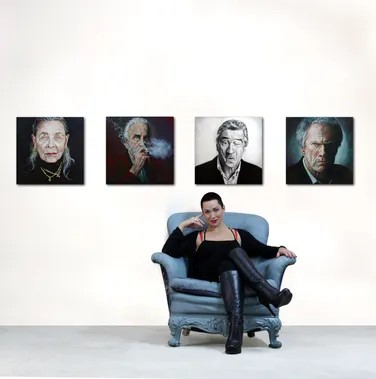
Angela Hardy is a widely published Canadian portrait and figurative painter whose work has graced the covers and feature articles of numerous international magazines such as American Art Collector, Southwest Art, CFAI Contemporary Fine Art Intl., Visual Language, Poetic Pin-Up, O&S and MiPOesais. As well her art has been showcased and regularly published in PoetsArtists Magazine for 7 years, and displayed at Zhou B Art Centre. She has also been featured on CBC TV, CBC Radio, NTV and has had front page articles in a variety of Canadian Newspapers.
Her work can also be found in the collections of prestigious North America and European Fine Art collectors such as Howard Tullman, International famed photographer Dr. Andy Gotts MBE MA FBIPP, and Canadian collectors Keith Bradbury and Bob Buckingham.
"Angela Hardy's work is simply breathtaking. It oozes depth and feeling and gets under the skin of her subjects. Each brush stroke adds another layer of passion and feeling from this amazing artist, and I am proud to have her work in my collection." Says photographer Dr. Andy Gotts.
Bob Buckingham, Lawyer and collector writes, "Angela's pieces, whether they be a soft, sensuous still life or bold portraits of her avant-garde friends, all reflect the magnificent colors she was infused with as a child, raised under the aurora borealis of Labrador."
Angela holds an Interdisciplinary Bachelor of Fine Arts Degree from NSCAD University, Halifax, NS, Canada.
William Herbert Hodkinson was born in Wales on October 29, 1889. Mr. Hodkinson emigrated to Canada in 1913 after attending Rexham Science and Art School. His first job was in the advertising department of a Toronto tailoring firm. After moving to St. Thomas in 1915, he opened his own sign-painting business. This interest reappeared when Mr. Hodkinson taught lettering at Alma College for one year. The successful days of live theatre in this city allowed him to apply his expertise to backdrop scenery and exterior display signs. He managed the Tivoli Theatre for two years before operating an art supply store on Talbot Street. Among his many friends and sketching companions were R. R. Osgoode, St. Thomas Smith, Julia Payne Smith, and Clark McDougall. Most of his works relate to St. Thomas and the area, although a 13-month sketching trip to Britain was taken in 1958. Mr. Hodkinson passed away on July 11, 1987, at the age of 97.

Mary Intven Wallace, award winning artist, educator, and author, shares her love of the land, sea and sky in her contemporary paintings of the Canadian landscape. In her artwork, she shares her view of this wonderful world as a place of vibrant colour. Mary's landscapes brighten the walls of galleries across Canada, many private collections, and are also featured in her published books.
Mary began painting after her first magical trip to Algonquin Park more than a half century ago. Her enduring enthusiasm for Canada’s land continues to flourish, especially when she paints at her woodland studio in the Algonquin Highlands. Honouring the intrinsic balance and beauty of the natural world is a consistent theme in her work. The luminous colours in her paintings conjure connections to the dynamic energy of land, sea and sky.
Her vibrant artworks grace public and private collections around the world, winning awards such as the International White Raven Award and the National Outdoor Book Award. Mary is a longstanding Haliburton School of Art and Design faculty member. Recently, the YMCA of Western Ontario recognized Mary as a ‘Woman of Excellence in Arts, Culture & Education’ for her community contributions as artist.
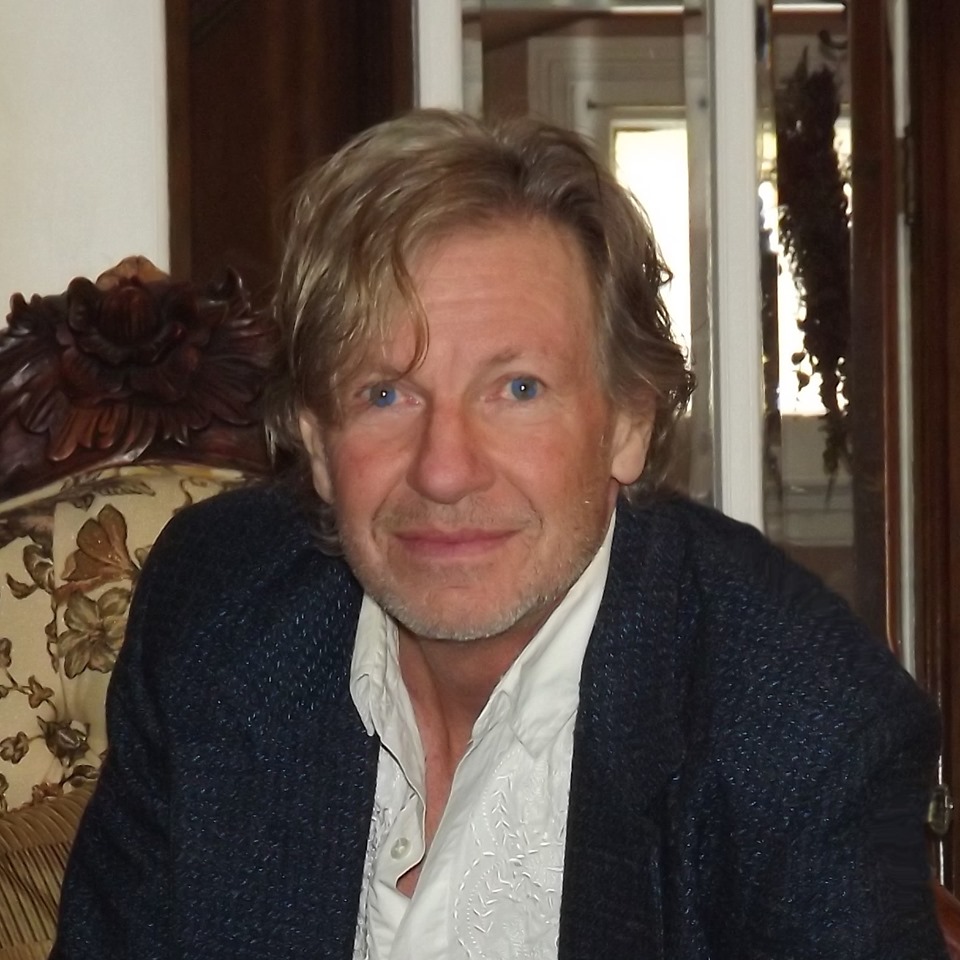
Born in Brantford, Ontario and now living in St. Thomas. Studied Advertising Art/Design Mohawk College, Hamilton. First full-time job was as a graphic artist and later Art Director for a design/print firm in Paris, Ontario. In London, Ontario, after putting in a stint as a writer/producer at CBC affiliate CFPL-TV, Dennis returned to painting. He later opened and operated a gallery from 1987 to 1992 that showcased paintings and sculpture of local and regional artists.
Kalichuk’s works are in hundreds of private and corporate collections, mostly in Canada but also many countries worldwide. He has participated in dozens of group and gallery shows in Canada and the U.S.
Dennis is a multi-media artist who tends to work in series. The artist’s current work includes a series of simplified and stylized landscapes called “Earth Tones”. Preferring to work from memory or field sketches, the elements in the scenes are depicted as simple, pure shapes.
The artist created a bold watercolour painting series that captured the sensation of movement of birds and animals in the “Metaphysical Fauna” series. “To accomplish this I use colours and abstracted backgrounds, merged with the subject, of what I imagine to be the aura of energy created by the moving bird or animal.” That series comprises over 200 paintings. He now uses that same technique to capture the energy and excitement of music and sports in his portrait series of original paintings.
Kalichuk’s work also includes semi-abstacted sculptures from Brazilian soapstone and art guitars. In 1998 he began a series of art bikes built from a collection of one-speed cruiser bicycles, mostly from the 30’s and 40’s.
The artist most recently branched out into original music and has written and recorded 4 studio albums as Jumbo Train.
One Person Shows: Elsie Perrin Williams Estate, London “Annual” – 1990
Waverly Mansion, London “Annual” - 1992 SANDY SNELGROVES GALLERY “New Works” 1993
Crouch Library, London “One Man” - 1995
MICHAEL GIBSON GALLERY “Landscapes” – 1996
Imax Theatre, London OPENING – 1996
One Day Show & Sale, Covent Garden Market – 2002
Home Studio Open House Show & Sale, St. Thomas – 2003,05,06,07
St. Thomas Studio Tour – 2007, 08
30th Anniversary Show – CASO Station St. Thomas - 2018
Group Shows: Lambeth Art Festival, London – 1990, 91
Waterfowl Art Festival, Easton Maryland - 1992
London Regional Art Gallery “Victorian Christmas” – 1993 CANADIAN MUSEUM OF NATURE – 1994
St. Paul’s Annual, London – 1992>2002,04
Wildlife Art Festival, Orlando Florida - 1994
DUNDAS VALLEY SCHOOL OF ART – 1993>2002, 05, 06, 07
London Fall/Winter Art Fair – 1994,95,97,98,99
MICHAEL GIBSON GALLERY Annual Miniature – 1995,96
MICHAEL GIBSON GALLERY Group Charity – 1997,98
OPEN AIR –Art Bikes/Benches/Canoes, London – 2001
St.Thomas / Elgin Public Art Centre Annual Auction – 2003 -07
Appreciation Of The Arts, St. Thomas – 2004, 05
Portside Gallery Annual Miniature Show, Port Stanley – 2006
Port Stanley Art Guild group show, Port Stanley – June 2006, 07
STEPAC 1000 Words Of Nature (3 artist) St. Thomas - 2014
PAINT ONTARIO – Lambton Heritage Museum – 2016, 2018
AEOLIAN Winter Art Show – London, ON - 2017
Railway City Arts Crawl, St. Thomas – 2019, 2020
Articles: SITE/SOUND Magazine, “Prints” – 1/1991
Ontario Living Magazine, “Gallery” – 1991
Hamilton Road News, “Drawn To Community” – 1993
Forest City News, “Artist On The Move” – 8/1995
SCENE Magazine, “Gibson Gallery Show Review” – 1996
Wildlife Art Magazine, “(painting photo)” – 3/1996
Couch Potato to Baked Potato, book “(front cover painting)” - 1998
Inspired By The Thames, book “(painting photo)” – 1999
Celebrating 30 – St. Thomas Times Journal - 2018
Broadcast: CFPL-TV, News, “One Person Show, @ E. Perrin Estate” – 1990
CFPL-TV, Behind The News “D. Kalichuk: Artist/Runner” – 1994
CFPL-TV, Arts & Entertainment, “1 Person Show, Winery” – 1996
The New PL, Arts & Entertainment, “Art Bikes” – 9/2000
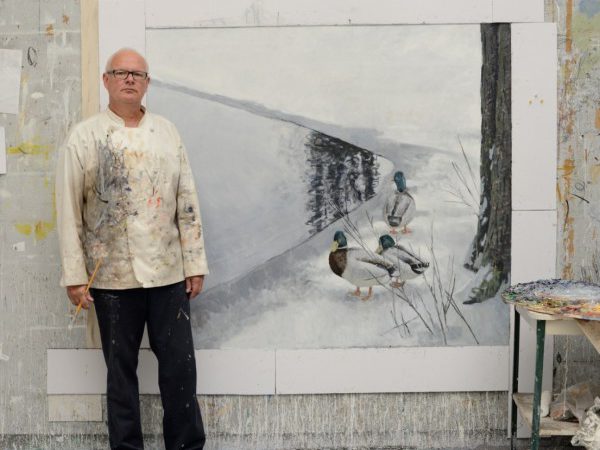
Born in St. Thomas, Ontario, Ron Kingswood developed a strong interest in the outdoors as a young man hunting with his father. During his teenage years, he was enamored with the realistic paintings of Don Eckelberry whose work frequented the pages of Audubon magazine and with whom Kingswood would establish a mentor/student correspondence. It was on Eckelberry's recommendation that Kingswood sought formal training at H. B. Beal Secondary School in London, Ontario where he studied colour theory and composition. Around this time, Kingswood discovered the works of fellow Canadian Robert Bateman, the acknowledged dean of wildlife painting who would encourage Kingswood to pursue a fresh vision he could call his own. After achieving enormous success with photo realistic work, Kingswood was advised by Eckelberry to resist the tightly rendered highly illustrative approach. The result of finding his own vision is "a distinctly impressionistic style that is radically different from that of any other wildlife artist. His mastery of colour, his visual composition, and highly original approach to his subjects are influencing the evolution of animal art." (Southwest Art, June 2001) As art critic Todd Wilkinson notes, "Although Kingswood, who spends weeks each year in the field as a naturalist, pays homage to animals in his works, he considers his subject matter secondary to the flood of colour flowing off his palette in abstract streaks, rivulets and muted mosaics." Kingswood currently lives and works in Sparta, Ontario.
Born 1959, lives in Sparta, Ontario.
Education
H.B. Beal Art, London, Ontario
University of Western Ontario, Bird Ecology and Ornithology
Selected Exhibitions
2018 An Uncommon Road, Jonathan Cooper, London
2016 Bold. Large. Layered. Minimalist. The Wildlife Art of Ron Kingswood, Jonathan Cooper 2014 Jonathan Cooper, London, UK
2012 Odon Wagner Contemporary, Toronto
2010 St.Thomas-Elgin Public Art Centre, St. Thomas, Ontario
From her birthplace in Zim, Usborne, Ontario, Lila Knowles at the age of 20, went to Toronto and studied at Moulton College and with Farquhar McGillivray Knowles. Dr. Dobson, then Principal of Alma College, viewed her work in Granto and immediately hired her to teach art in September, 1926. This appointment lasted 28 years, interrupted briefly when her husband of one year Farquhar McGillivray Knowles, died in 1932. Thereafter, she spent summers sketching on the Atlantic Coast and at Colpy’s Bay near Owen Sound, exhibiting her work their in 1937. Other exhibitions have included : The Robert Simpson Company Ltd., Toronto (1944), Alma College (1946), The Little Gallery, Toronto (1951) and the Ontario Loan and Debenture Company, St. Thomas (1967). When William St. Thomas Smith died in 1947, she purchased his home at 97 Stanley Street and lived their until 1971 when she entered a nursing home. Many area artists have benefited from Mrs. Knowles instruction, both professionally and privately. (From the files of the St. Thomas-Elgin Public Art Centre)
The following artworks are a few examples from the permanent collection.
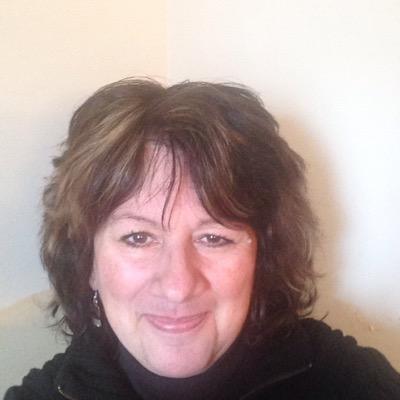
Elizabeth is a self taught professional painter of over twenty years. She works exclusively in oil as she believes the colours and textures allows her to truly capture the complexity of light and dark. She believes that to truly bring a painting to life, it has to capture the viewer's interest quickly and then draw them into the painting.
- 2000 Uxbridge Celebration of the Arts Juried Exhibition
- 2001 Uxbridge Celebration of the Arts Juried Exhibition
- 2003 "Spring Thaw" The Magic Door Art Gallery, Sunderland On
- 2003 Scugog Spring Juried Studio Tour , Port Perry On
- 2009, 2010, 2011 Apsley & District Autumn Studio Tour, North Kawartha On
- 2010 & 2011 Annual Spring Invitational Juried Exhibition- Art Gallery of Bancroft
- 2012 "Grace" Solo Exhibition Art Gallery of Bancroft
- 2013 , 2014, 2015 Paint Ontario Juried Exhibition, Grand Bend On
- 2015 "Art for Heart" Westland Gallery, London On
- 2015 Summer Sizzler Juried Show, Art Gallery of Lambeth, London On
- 2015 Square Foot Show , Westland Gallery, London On
- 2015 Summer Painters Salon, Charlotte Hale & Associates Art Gallery, Mirvish Village Toronto On
- 2015 "In the View of the Artist" Juried Exhibition and Sale, St. Thomas Public Art Gallery
- 2016 Paint Ontario
- 2016 Home and Away Immigration Stories , Fringe Art Gallery London Ontario
- 2016 Glenhyrst Biennial Juried Exhibition, Brantford Ontario
- 2016 "Idyll" Group Art Show, Illumine Gallery, St. Thomas Ontario
- Squarefoot2016 Show Westland Gallery, London Ontario
- 2016 Windjammer Autumn Art Salon
- 2016 "Terra" Group Exhibition Illumine Gallery, St. Thomas
- 2016 "In View of the Artist" St. Thomas Public Art Gallery
- 2017 'She' group show Illumine Gallery
- 2017 "IT TAKES A VILLAGE" SOLO PORTRAIT EXHIBITION @ St. Thomas Public Art Centre
Awards
- People's Choice 2000 Uxbridge Celebration of the Arts Juried Show
- Honourable mention Spring Invitational Juried Art Show Art Gallery of Bancroft 2010
- 2nd place Paint Ontario2015
- Honourable mention, 2015 Summer Sizzler Juried Art Show, Art Gallery of Lambeth London On
- Jurors Choice Home and Away Immigration Show at the Fringe Gallery London On
You can find more of her work on her
 website or on
website or on  Facebook
Facebook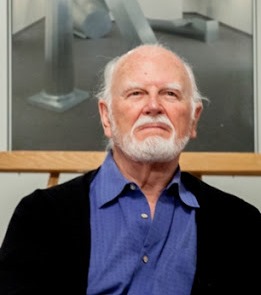
Patrick Landsley (1926-2022), was born in Winnipeg in 1926. He studied at the Winnipeg School of Art under Lionel Lemoine FitzGerald and Joseph Plaskett (1947-49) and the Montreal Museum of Fine Arts School of Art and Design (1950-51) before moving to Paris to study at the Academie Montmartre under Fernand Leger (1952) and at the Academie Ranson (1953). Patrick Landsley taught at the Montreal Museum of Fine Arts's School of Art and Design from 1954-66 and at Concordia University's Faculty of Fine Art for almost 30 years (1966-95). His watercolours and mixed media works with oil on multiple levels of masonite are brilliantly coloured and have the appearance of relief collages. His work is often inspired by the landscape of Greece - its ancient sites, villages, mountains, plains, valleys and sea - a consequence of his frequent trips over the past 15 years. Patrick Landsley lived in St. Thomas, Ontario.
The following is a selection from the permanent collection
Walter Lester was born on June 27, 1919, in St. Thomas, Ontario. He was a good friend of Clark McDougall, photographing slides that McDougall would paint. Lester passed away on November 11, 1976, in St. Thomas Ontario.

Clark McDougall was born in St. Thomas in 1921. At the age of 16 Clark left high school determined to become an artist. He would ride his bike north of St. Thomas into North Yarmouth and paint watercolours directly from nature. He taught himself proper technique from library books and sought advice from local artist William St. Thomas Smith. In 1950, at the age of 29, Clark traveled to Montreal and Quebec City where he first experienced the paintings of Henri Matisse. He now realized that colour and line could be used in a completely different way. By 1952-3 Clark was working as a “Fauve” painter, where his colours were intensely vivid and non-naturalistic.
A coronary in 1957 forced Clark to paint from photographs in his studio. His painting style changed where the outline became very important to the structure and design of the painting. Clark’s unique “black enamel” style set him apart from other regional artists. His first exhibition of these "black enamel" paintings was in 1968 at the 20/20 Gallery, London. In 1976 the Volunteer Committee at the London Regional Art Gallery commissioned a painting, “Site”, to commemorate the building of the new gallery. In 1977 the Vancouver Art Gallery organized an exhibition “Clark McDougall: Paintings since 1953”.
Regardless of the style, however, Clark had a highly individual way of interpreting his beloved landscape of North Yarmouth. Clark McDougall passed away of a brain tumor in 1980 at the age of 59.
Below you will find selections from Clark McDougall's work from the collection. We have divided the selections into categories. Drawings, Barns and Rural, Landscapes, Cityscapes and Portrait/other.
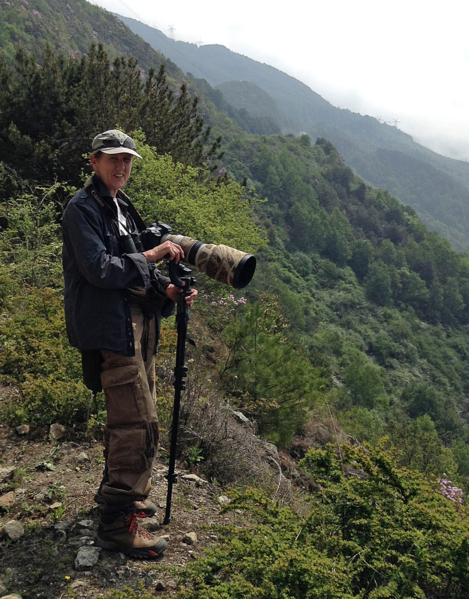
Candy is a local artist has been interested in drawing and the outdoors since childhood. Candy grew up in the Meadford area on Georgian Bay. She began teaching in the Georgian Bay and Algonquin Park Region. Leaving teaching she returned to school and graduated from the Design Arts Program (honours) at Georgian College in Barrie.
She worked as an Interior Designer in Toronto for three years then made the decision to return to teaching in Moosonee/Moose Factory, Ontario. Candy retired from teaching at East Elgin Secondary School in Aylmer, Ontario.
Candy's early artworks depicted the flora and fauna of the James Bay Lowlands. Her keenness on birds was encouraged by her husband, Paul Privett, a biologist and avid bird watcher since childhood. As well as painting, Candy has a passion for photography and spends hours honing here skills and acquiring photos that she may post or others she may use as reference. She has an extensive and impressive exhibition history. She is a member of  Artist for Conservation, has been recognized for her work in
Artist for Conservation, has been recognized for her work in  Fine Art America.
Fine Art America.
The following are a few works from the collection.
S'ine Maule was born on July 17, 1938, in Scotland. She emigrated to Canada in 1957 and has lived in St. Thomas for 35 years with her husband Pat. Maule states “Nature is the catalyst for my painting. Working in watercolour and mixed media, I strive to reflect the tranquil and poetic side of nature. In my painting, I attempt to capture the feeling of the moment or the essence of the place.” In 1970, her lifelong interest in art was brought into focus when she began to study with London, Ontario, sculptor and International artist Jiri Hanzalek. For six years she studied sculpting, oil and gouache technique, and Sumi Painting. From this association with Mr. Hanzalek, she learned that “while technique can be taught, art comes from within and can only be achieved through constant study and application, and must be pursued on an individual basis.” From 1987 to 1993, Maule operated a studio/gallery in Port Stanley, showing her watercolours. Presently she shows her work through "Art Rental" at the St. Thomas-Elgin Public Art Centre, and in group shows with the Port Stanley Artists Guild. Maule’s work can also be seen, by appointment, at her home studio.
“Born in London, Ontario, I recall drawing as a child on paper that my father brought home from work. I studied printmaking and photography under Bert Kloezeman and Vivian Sturdee in the Specials Program of Beal art, H. B. Beal Secondary School. I was the first student to be given advanced standing in the Bachelor of Fine Arts second year at Mount Allison University in Sackville, New Brunswick, where I focused on printmaking, sculpture and drawing under David Silverberg and Tom Henderson. My art has been exhibited in various locations across Canada. In addition to my work, I have nurtured the interests and talents of thousands of students. While attending Althouse College, I delivered children’s art classes for the St. Thomas-Elgin Public Art Centre. I was part of the Beal art staff for almost 30 years, initially with Junior, Grade 11 and Senior Printmaking classes but eventually turning my hand to Drawing, Painting, Design, Animation, Photography, Sculpture and Art History. Both before and since retiring from the Thames Valley District School Board, I have offered workshops with local public galleries. I was instrumental in the development of a printmaking studio in the Woodstock Art Gallery in 2018. Occasionally I accept commissions and offer lectures and workshops on a variety of topics and media” (Ron Milton, 2021).
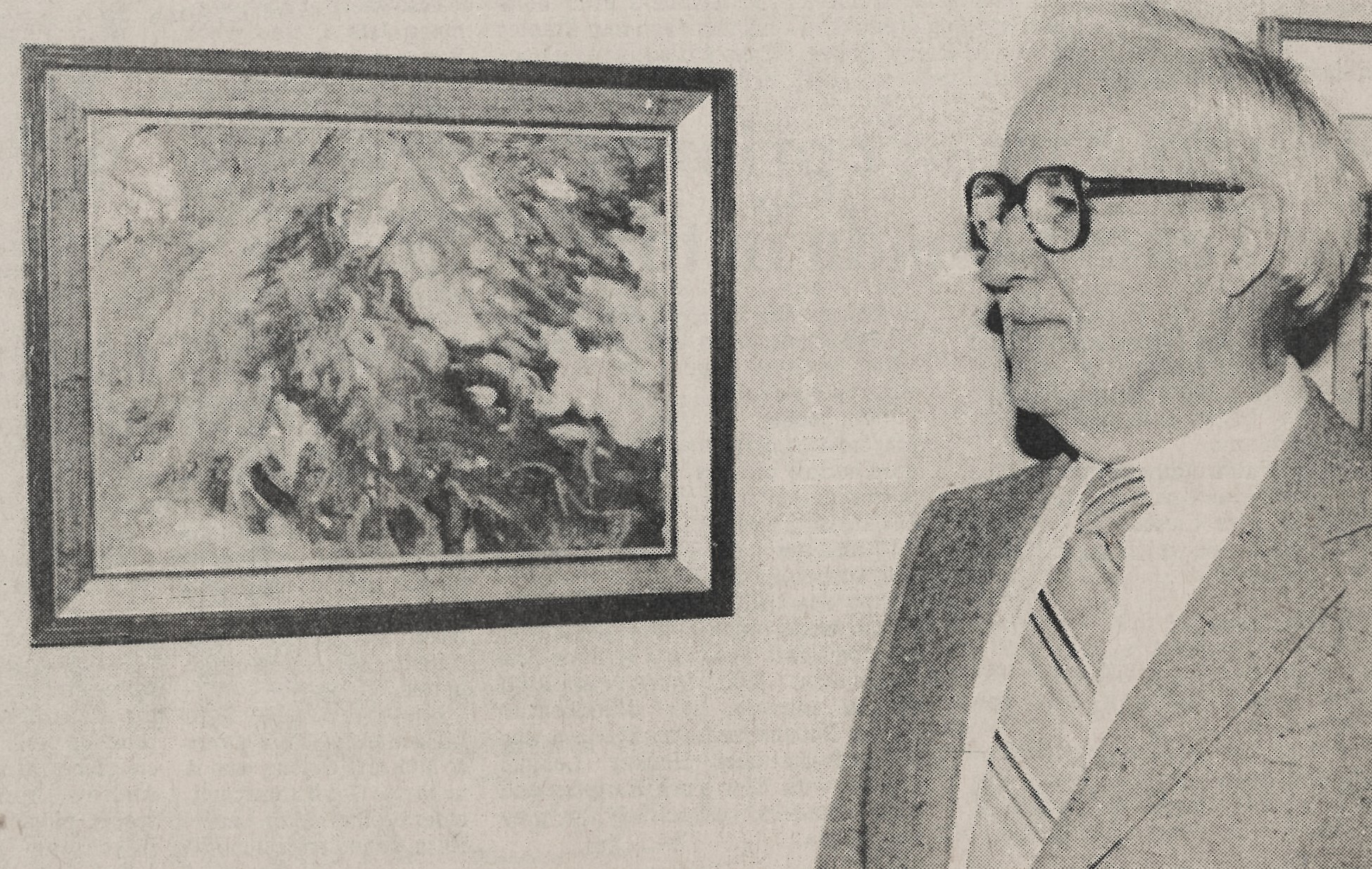
Roy Morris (1914-1995)
Born in Helen Mine, Ontario, Morris grew up in North Bay. He had an early talent for drawing and was allowed in 1932 to go to the Ontario College of Art Summer School in Port Hope. He studied under J.W. Beatty, who was associated with the Group of Seven and got his grounding in oil painting. Oil remained his favourite medium, and nature his favourite subject. He noted, "There is no reason to quit painting Canadian scenery since we are endowed with lots of wilderness". Morris worked as an art therapitst at the St. Thomas Psychiatric Hospital from 1971 to 1979. For his last 10 years he was legally blind but discovered that if he increased the size of his canvas he could paint just as well.
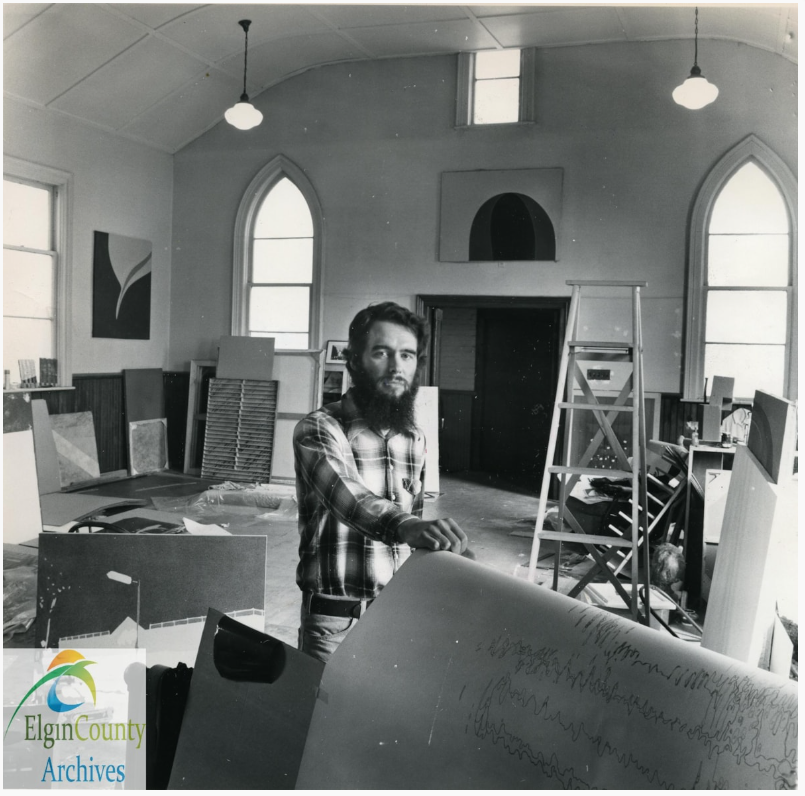
David Morris was born on August 16, 1944. He was well-known in the community for his art, teaching welding at the local college and his community work. Morris earned his Welder Fitter Certificate at Fanshawe College before attending University of Western Ontario, for a Bachelor of Arts. He started as a post group of seven landscape artist before becoming fascinated by sculpture. A position as the first director of the St. Thomas-Elgin Public Art Centre brought Morris to St. Thomas. In the 70’s he was a part of W.A.G.E (Working Artists Group of Elgin) who got together, rented spaces and had various shows. Later he joined a group called WOAX which held events including music, art, and poetry. His sculptures can be seen in Pinafore Park and the Elevated Trail. Morris passed away on December 2, 2022, at the age of 78.
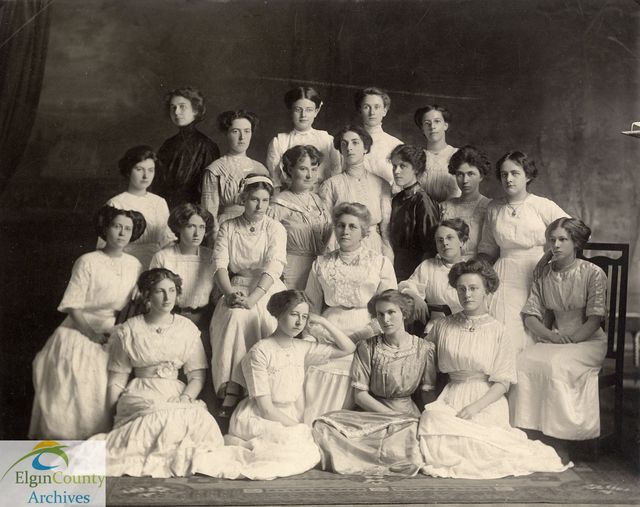
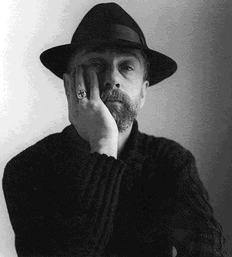
A Montreal native and now London, Ontario transplant, Gerald Pedros is a Canadian artist who has exhibited internationally in countries including Switzerland, Germany, Mexico and Ireland.
Artist Statement
‘When I was sixteen, I realized that most of us live our lives through other people’s experiences, i.e., pop singers, religious leaders, politicians, neighbours, family, etc. Why? Because we do not trust our own judgment. My artwork is a timid attempt to trust my judgment.’
Selected Canadian Exhibitions
2017 – Thielsen Gallery, London, ON
2017 – Big Print Project, Roundhouse Community Centre Gallery, Vancouver, BC
2017 – Big Print Project, Chinese Cultural Centre Gallery, Vancouver, BC
2015 – St.Thomas Public Art Centre, St.Thomas, ON
2014 – Big Print Project, Waterfront Theatre, Vancouver, BC
2012 – Thielsen Gallery, London, ON
2011 – St. Thomas Public Art Centre, St. Thomas, ON
2010 – Stewart Hall Art Gallery, Pointe-Claire, QC
2009 – Fieldcote Memorial Park and Museum, Hamilton, ON
2009 – Thielsen Gallery, London, ON
2009 – St.Thomas Public Art Centre, St.Thomas, ON
2007 – MacLaren Art Center, Barrie, ON
2007 – Thielsen Gallery, London, ON
2006 – Woodstock Art Gallery, Woodstock, ON
2006 – Thielsen Gallery, London, ON
2005 – St.Thomas Public Art Centre, St.Thomas, ON
2005 – James Baird Gallery, St. Johns’s, NFLD
2004 – Thielsen Gallery, London, ON
2001 – Thielsen Gallery, London, ON
2000 – Roberts Gallery, Toronto, ON
1999 – Jean-Claude Bergeron Gallery, Ottawa, ON
1997 – Thielsen Gallery, London, ON
1997 – Blyth Festival Art Gallery, Blyth, ON
1997 – Wallace Galleries Ltd., Calgary, AB
1996 – St.Thomas Public Art Centre, St.Thomas, ON
1996 – Thielsen Gallery, London, ON
1995 – Ottawa School of Art, Ottawa, ON
1995 – Centre Interculturel Strathearn, Montreal, QC
1994 – Thielsen Gallery, London, ON
1993 – Centre for Contemporary Art, St.Thomas, ON
1992 – Temiskaming Art Gallery, Temiskaming, ON
1991 – St.Thomas Public Art Centre, St.Thomas, ON
1989 – Galerie Samuel Lallouz, Montreal, QC
1985 – Centre Saidye Bronfman, Montreal, QC
The following is an example of the works in the St. Thomas-Elgin Public Art Centre's Permanent Collection
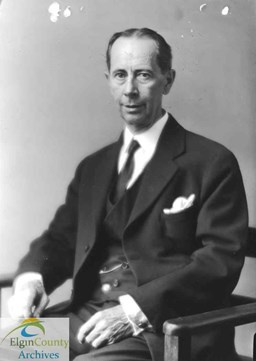
“He could recite Latin poetry even under the influence of alcohol”. ~ conversation with Mrs. Dorothy Ayearst May 1981
Ross Reverdy Osgood was born in Oxford County on June 17, 1867. He was the son of Horatio and Annie (Williams) Osgood. The Osgood Family moved to St. Thomas and took up residence at 12 Jessie Street c. 1880. Prior to this time, they lived in Durham County and London, Ontario.
Untrained as an artists, Osgood was educated at local schools in Ingersoll, London, and St. Thomas, Ontario. He said… “There is only one teacher, Nature”, although he ran away to Europe on a cattle boat with the intention of studying art.
By 1887, he was back in St. Thomas and had a studio. For the next 29 years, Osgood lived and painted in St. Thomas. He did not have any one-man shows of his work, nor was he ever represented by a dealer, but he did show at the Western Fair, in the Toronto Industrial Exhibitions, and with the Ontario Society of Artists.
During this period, he was remarkably versatile in his work, painting both in watercolours and oils. He did portraits, figure subjects, landscapes, seascapes, religious subjects, and still lifes. He completed large canvases of incidents in the election campaigns of Sir John A. MacDonald and Sir Wilfrid Laurier, executed illuminated manuscripts and painted miniatures. He taught painting at his studio and from 1913 to 1915, he taught at Belmont, ON.
On July 17, 1916, Osgood joined the Canadian Expeditionary Force and went to France to serve as a sapper with the Canadian Engineers. Because of his artistic ability, he was given a letter of authority to sketch on the Western Front. A large number of sketches and wash drawings were made… “in many instances rapidly and under the most adverse conditions with such materials as he happened to have on hand.”
Ross Reverdy Osgood was discharged from the army in 1919 with a fifty percent disability from being blown up by a German shell while out in the centre of pontoon bridge, across the Canal Du Nord.
Returning to St. Thomas, he devoted his time to working up paintings from the sketches done at the front and in rural England. Although he drank very heavily during this period, he refused to touch a painting while under the influence of alcohol.
In his later years, Osgood could no longer paint because of failing eyesight, but he could still entertain his guests for hours reciting Shakespeare and Latin and Greek verse.
“THERE IS A DIVINITY THAT SHAPES OUR ENDS”... a quote often used by Osgood.
Ross Reverdy Osgood died on July 16, 1946 (From the files - St. Thomas-Elgin Public Art Centre)
The following artworks are examples that can be found in the permanent collection
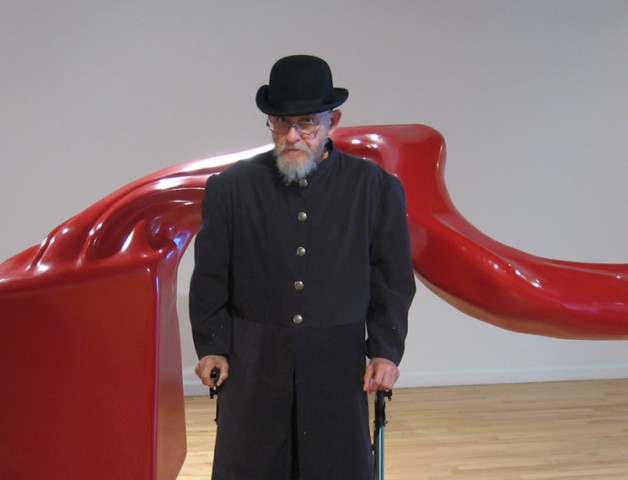
Walter Redinger - began his professional art training at Beal Technical School in London, followed by education from the Ontario College of Art (now called OCAD) in Toronto and then the Miensinger School of Art in Detroit Michigan (was awarded for drawing excellence).
Being an active sculptor for more than 50 years, Walter Redinger is best known for his large, controversial, organic fibreglass sculptures, fearless drawing, and intense painting.
Redinger began his career with the legendary art dealer, Avrom Isaacs, who represented Walter with numerous one man shows. Redinger continued exhibiting internationally in New York, Italy and France to name a few. His work has been purchased by many well respected museums and collectors.
One of Walter's most proudest accomplishments was being chosen to represent his country at the 1972 Venice Biennale.
Selected Exhibitions
2016 Woodstock Art Gallery, Woodstock, Ontario, Joe Lima & Walter Redinger "Unlimited Possibilities"
2011TD Bank City Centre, London, Ontario, "1929-84"
2010 Michael Gibson Gallery, London, Ontario, Walter Redinger & Paterson Ewen
2010 TD Bank City Centre, London, Ontario, "The Snake"
2009 St. Thomas Public Art Centre, St. Thomas, Ontario, "Drawing Show"
2009 Museum London, London, Ontario, "Ghost Ship & Maps of the Cosmos", solo exhibition
2008 Michael Gibson Gallery, London, Ontario, Walter Redinger & David Urban
2008 Woodstock Art Gallery, Woodstock, Ontario, "The Garden Party", solo exhibition
2008 The Art Exchange, London, Ontario, "50 Years of Influence", group exhibition
2007 Matthew Marks Gallery, New York, NY, "Project for a Revolution in New York", group exhibition
2007 Museum of Contemporary Canadian Art (MOCCA), Toronto, Ontario, "Return To The Void"
2007 Museum London, London, Ontario, "An Eye For It", group exhibition
2007 St. Thomas Public Art Centre, St. Thomas, Ontario, "Apparition"
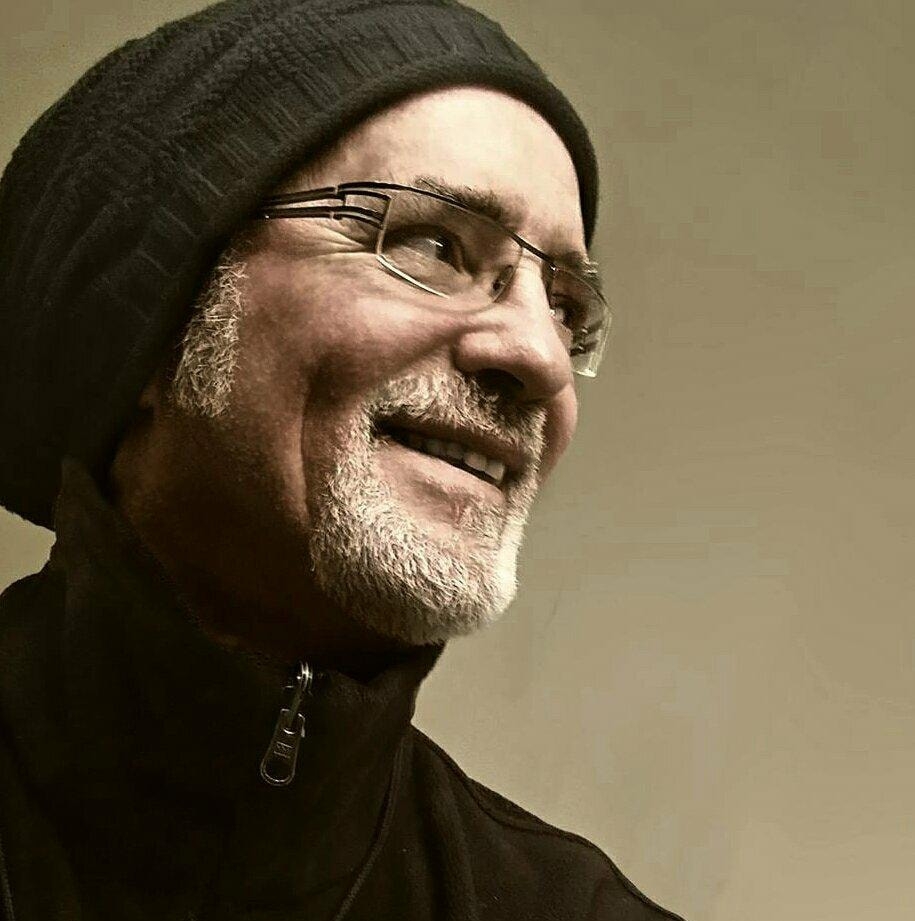
STATEMENT ... The production of art is a compulsive activity of mankind. It plays an essential and basic part in human life and does not exist as some would have it, a separate intellectual and museum exercise or hobby.
Art may be a marginal activity but it is a part of the fabric of everyday life, and it is for this Inquiry into meeting the deep human need for unity between art and human activity that Environmental Art exists.In the traditional and academic sense, a 'fine' artist is trained to believe that painting or sculpture is complete in itself, and therefore valid and important where ever it is placed. But art cannot be isolated from the environment merely by a picture frame.
In reality nothing exists without a relationship in some way to all other objects and happenings around it, so art, as one of the objects or happenings in an area, is conditioned by, and in turn influences its environment.Environmental Art is a Fine Art discipline, but specific to developing concepts with sensitivities to relationships of all the conditions and influences surrounding any given area. In effect, as an environmentalist, this issue is approached from two points of view ...1 – the conscious visual aspects and 2 – the unconscious manipulation of the observer who is influenced by the very presence of the art.It is most necessary that the presence of art acts as an adjunctive functional influence to the business of living.
No matter what the nature of the activity planned, the concepts and materials of art can add a greater dimension to function.And it is in this respect that the nature of, the delivery of, and the chosen medium for the art should be determined. So, in part, an inherent part of its statement is material.In the most fundamental sense, just because a painter paints on a canvas does not make the painter an artist any more than it makes his or her painting art. Until relationships are established it remains as simply a painting.
Past experience has shown that it is a fallacy to expect that the ‘fine’ artist is capable of designing and producing art for any situation. Just as we of the 21st century are conscious that all is not well with our environment, we should know that all is not well in the training that artists are provided with to cope with the situation.
There is no art for all occasions, so to produce art alone is not enough for successful integration. The eventual effect of each new artwork on the viewer or user of an area, is a consideration which must be visualized and calculated beforehand as a special solution for that special environment requiring a special education.In addition, the compromises and collaborations with other technical specialists, through the architecture, which inevitably must take place, are not to be taken as limitations, but rather as springboards for the artist.
The challenge is to respond without destroying the art, and to become part of a team of specialists working toward a common goal, that of a greater involvement of all people in the use of an architectural area or human environment.Art in its many varied forms influences the viewer in different ways.
So it naturally follows that it becomes the responsibility of the Environmental Artist to make those influences work for societies use.An Environmental Artist’s specialized sensitivity involves a greater responsibility to the use of an area, the arts relationship to that area, and the fulfillment of a client’s objective.
And that sensitivity involves added problems like how to make a clear analysis and presentation, the understanding of visual distortions and relationships in large scale work, methods of installation, team work co-ordination necessary for industrial fabrications, preparation of estimates and contracts, and the ability to produce competent work within a specified time.
The Environmental Art philosophy is primarily a concern with the environment where we work, where we play, and where we live, how people function in those areas, and what kind of art can influence those specific needs.
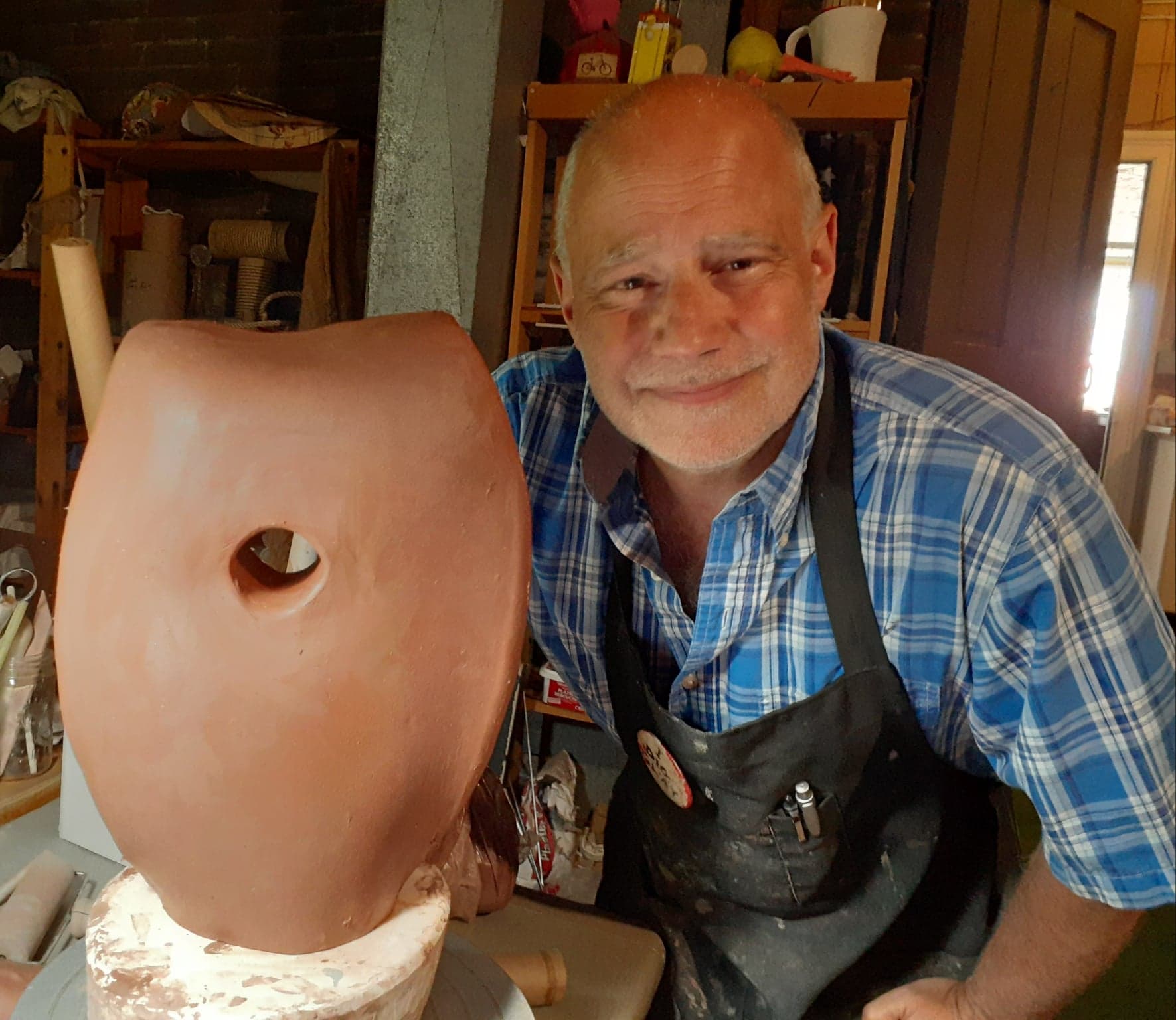
Joseph is an artist who works in many mediums from large sculptures to murals in oil. His focus has been on sculpture and ceramics such as glazed plates and bowls with colourful abstract arrangements. He lives and works in Sparta where he opened an art gallery called gathered.
He uses the shapes of nature in hand built earthenware, and also composes colourful floral designs. Harvesting indigenous surface clay from Elgin County, he explores the possibilities in ancient practices and sustainability.
‘Through explorations in technique, the artist finds their own voice in interpreting an art form. What is a concept, is brought forth to reality. There is seldom invention, instead there is a rediscovery of what has come before.

Paul Schleusner was born in Germany and from childhood spent much of his time painting and drawing on the back of old wallpaper rolls. Schleusner immigrated to St. Thomas Ontario in 1958 and opened his own studio and gallery in Port Stanley, Ontario in 1988. Schleusner believed in “creating beauty” and painted a variety of subjects throughout his career including: landscapes, cityscapes. Florals, still life and seascapes. Schleusner passed away on August 20, 2009, but his works live on and can be found in many places around the world today.
Photograph by Gail McNaughton
Baillie Stephenson was born in 1899 but was only introduced to painting in his 50s when his wife gifted him paint and brushes for Christmas. The following summer he was coerced into spending a week at the Doon School, near Kitchener when he wanted to go north. He spent a week at the school and a week up north. Suddenly after three years of pressure, he became converted and has been painting and studying ever since. Stephenson's works are reminiscent of the French Impressionists. He has spent all his holidays painting and sketching in Massachusetts, France, Spain and around St. Thomas, Ontario. He took resident summer courses at the State University of New York in Buffalo for two years and both day and night courses at Beal and Fanshawe College. Stephenson feels that painting has added to his appreciation of art. "You see much better after you have been painting for a while. Learning the basics is the most important part of painting. The whole purpose of learning to draw is to train the eye to see." Stephenson studied sculpting under Jiri Hanzalek. He has had shows under the auspices of the London Art Gallery and has exhibited paintings with the Gallery Painting Group, the Western Ontario Exhibition and the Society of Canadian Artists. Hanzalek called Stephenson “a versatile painter who uses a rich scale of colour and does not repeat himself.” Stephenson has been deeply involved in the cultural institutions of the area. He was a member of the St. Thomas Public Library Board, of which he was chairman from 1969 to 1972, the Lake Erie Regional Library Board, of which he was chairman in 1972, the Council of the Ontario Library Trustees’ Association, a founding member of the St. Thomas-Elgin Public Art Centre and a member of the Building Committee of the St. Thomas-Elgin Library.

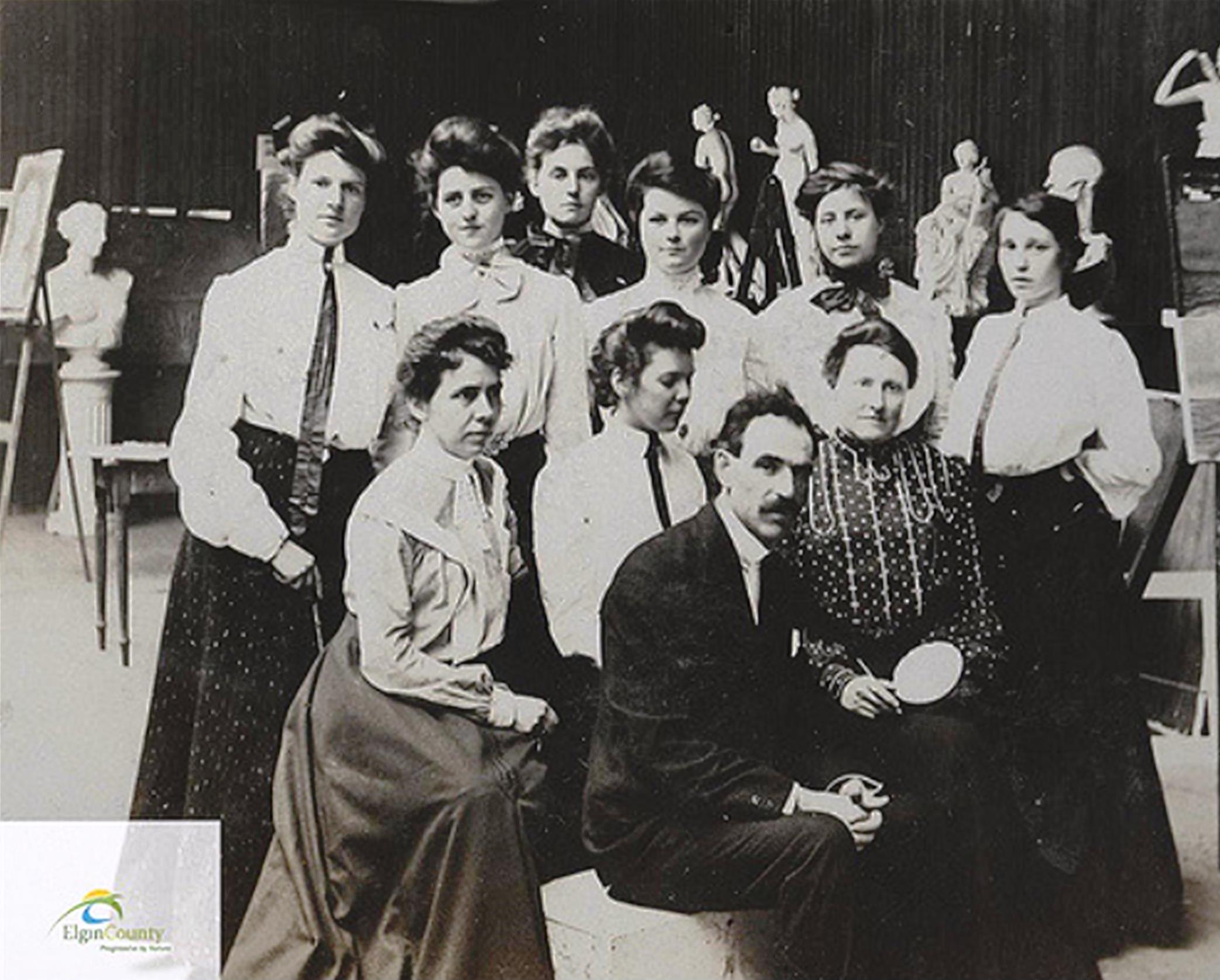
William St. Thomas Smith (1862-1947)
William Smith was born in Belfast, Ireland to Scottish parents William and Anne (Hoig) Smith, on March 29, 1862. At the age of seven, his family came to Canada and settled in Beaverton, Lake Simcoe where his father opened an iron foundry. In public school Alexander Muir, a teacher and composer of “The Maple Leaf Forever,” recognized his artistic ability and gave him encouragement. In 1873 at the age of 11, he was given his first set of watercolours, allowing him to add the dimension of colour to his constant sketching. His early experiences on the shore of Lake Simcoe and with the Canadian landscape were to remain a constant influence on his painting. At the age of 19 or 20, Smith enrolled at the Ontario School of Art, studying with fellow students George A. Reid and Robert Holmes.
In 1886, Smith married Julia Anne Payne, daughter of Frederick Payne of Payne’s Mills (a small community outside of St. Thomas), and moved to St. Thomas. Smith painted for several years in oils as a portrait painter. After his schooling, he was in the studio of J.W.L. Forester, whose motto was: “Always to nature.” and because of his association with Forester, he successfully painted portraits on commission. However, Smith thought his earlier works too commercial and turned to painting nature and using watercolours. (among his earliest works were Amasa Wood and John Farley, K.C.)
During 1888, Smith began to teach painting at Alma College and enjoyed taking sketching trips to the Maritimes. He spent more than 20 years painting seascapes in the Orkney Islands, on the coast of Scotland, and in England, Ireland and France. He later was considered one of Canada’s foremost marine painters.
Smith’s early work from 1885-1895 could be described as tight, conventional and in a traditional watercolour style of that time period. However, from then on Smith’s work seemed to continually show more freedom of expression. At first he simply used the dry paper technique, but later he adopted the wet paper technique. In 1890 he was a member of the short-lived Canadian Art Club, whose motto was, “Never a day without a line.”
Between 1915-1930, Smith was having exhibitions of his work in Toronto; his catalogues suggest that his impressionist watercolours were selling for up to $1500.
In his eighties, St. Thomas Smith suffered a stroke which paralyzed his right hand. Not to be defeated, he began painting with his left hand. Smith was a diligent painter, painting nearly every day to leave a heritage of paintings from coast to coast in private and public collections. (taken from the archives of the St. Thomas-Elgin Public Art Centre)
By 1895, he had sold enough paintings to embark on his first sketching trip to Scotland and Europe. Here he came in contact with the Scottish school of art, especially William McTaggart (1835-1910), who greatly influence him. This marked a turning away from detailed naturalism to expressionism, a path that he followed and developed the rest of his life.
European impressionism dates back to Manet, Monet, and Pissarro in the 1860’s, but due to a cultural time lag, the influence is not apparent in Canadian artist’s work until just prior to 1900, in the work of Suzor-Cote and Maurice Cullen. If William Smith is not the first impressionist, he is certainly in the very vanguard.
The St. Thomas Directory of 1901 lists: William Smith, 84 Metcalfe Street with a studio at the same address.
The F.S. Challener notes on F.M. Bell Smith state emphatically that he suggested the name W. St. Thomas Smith in 1902. The reason for the addition of St. Thomas to his name is that there were two Williams Smiths painting in Ontario.
The St. Thomas directory of 1905 lists: W. St. Thomas Smith, 73 Wellington Street with a studio at the same address. Later, he made his home on Stanley Street at the corner of Gladstone Avenue.
In 1907, Homer Watson, in collaboration with Edmund Morris, formed the Canadian Art Club. One stated purpose for this formation was: “to replace Dutch imports with native canvasses.”
From 1907 to 1915 they showed the avant-guard of Canadian painting: James Wilson Morrice, Curtis Williamson, Maurice Cullen, William Brymer, Suzor-Cote, and William St. Thomas Smith. This club marks the break with traditional European painting approaches and made it possible for the formation of the Group of Seven, two years later.
Although he painted in watercolours and oils, early in his career, he was apparently allergic to turpentine, and his doctor advised him to stop using oil paints.
During the period beginning in 1895, William St. Thomas Smith adopted the wet paper technique of watercolour painting. Colours, prepared in liberal qualities were applied in broad masses to a damp paper. This permitted the artist to make areas without hard, dry outlines. The paper was allowed to dry, then dampened again and the procedure was repeated until the desired result was obtained. Often, St. Thomas Smith would apply brilliant opaque colour, but these were never allowed to remain raw, but are muted with subsequent glazes of transparent colour. The paintings during this period were more somber than the work which was to come in later years, and in Mr. Smith’s own words, “he had become painter of moods.”
From 1915 to 1930, the artist gradually expanded his use of colour and became freer in his paint application.
Julia Payne Smith died, December 7, 1928. She was a painter and sculptor in her own right and her competent criticism and encouragement were a constant and valuable source of help to her husband in his professions.
In 1930 William St. Thomas Smith married Mrs. Buntain (nee Minnie May Cotton) sister of John W. Cotton. Smith went with his bride and John Cotton for a painting trip to Europe.
The period from 1930-1940 marks a jump in the brightness and freedom of his painting; also noteworthy is the large quantities of opaque paint used in his large painting, part of a watercolour technique he evolved, allowing him to get more strength in his painting than is normally possible with the weaker watercolour medium.
In 1940, he was given an Honorary Doctor of Law degree by the University of Western Ontario.
Although he had a stroke which paralyzed his right side, he continued to paint using his left hand.
His second wife, Minnie May died February 9, 1944.
On February 18, 1947, William St. Thomas Smith died at the age of 84. Until his death, he painted with enthusiasm. (taken from the archives of the St. Thomas-Elgin Public Art Centre)
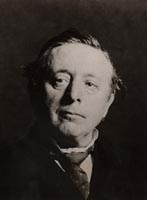
Frederic Marlett Bell-Smith was born in London, England. He trained at the South Kensington School of Art, and with his father John Bell-Smith, a portrait painter. F. M. Bell-Smith immigrated to Montreal, Canada in 1867, following his father who had settled there the year prior.
In Montreal, Bell-Smith found work as a photo re-toucher. In 1871 he married and relocated to Hamilton, Ontario, where he again worked in a photographer’s studio and as a freelance illustrator. Bell-Smith and his wife would briefly relocate to Toronto, where he taught at the Ontario School of Art, after which they returned to Hamilton. At this time, he exhibited mostly watercolours. After 1877, he also painted in oil.
In 1881, Bell-Smith moved to London, Ontario, where he was an art instructor in public schools and at Alma College. From 1887, with free passes from the Canadian Pacific Railway, Bell-Smith painted in the Canadian Rockies. He was awestruck by the mountains and would return to Western Canada throughout his remaining years to paint works like Stream in the Rockies, undated, oil on canvas, 59.9 x 44.6 cm (purchased through the Walter and Gordon Duncan Foundation).
Bell-Smith was elected to the Royal Canadian Academy of Arts in 1886.
(National Gallery of Canada)
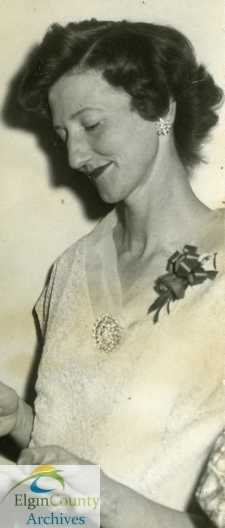
Evelyn Knight was born in St. Thomas in 1925. She grew up on College Street and attended Arthur Voaden Secondary School and at the age of 19, enrolled at Alma College from 1946 to 1948.
“I was nineteen when I started- Certainly older than the girls, but that didn’t seem to matter. The staff were so respectful, and the classes were smaller, with maybe 14 girls in a class.
I spent a lot of time up in the art room. Our art teacher, Mrs. Lila Knowles, had all these antique busts. She would sit you down in front of the bust, and then you would draw, and she would correct. That might go on for weeks. Everything that came out of there had to be done perfectly. You graduated through these antique busts, and then finally graduated to landscapes. And Miss Lang, who taught interior decorating, taught you to draw buildings. She instructed in a practical way.
I really loved going to school in the cottage, where Miss Elizabeth Lamb presided. She always had a lot of crafts going on. She was a therapist at a hospital in Toronto, and so she was well trained. You felt like you were getting a lot of expertise from her. I applied at a summer camp for girls, as the craft instructor, after one or two years, and she helped me order supplies. They were so thrilled that they had made a profit! And it was fun for me being away from home, and being a leader and instructor.” - Memories of an Art Student and Teacher at Alma by Evelyn Knight - The Alma College Memory Project
After graduation, Evelyn Knight married Dr. Ray Knight and had 4 children. Once the children were older, Evelyn began painting full-time. This lead to a position teaching at Fanshawe School of Continuing Education, painting and drawing, for 10 years.
Evelyn travelled to many scenic areas throughout North America to paint. “Having spent some forty summers at our cottage on Georgian Bay I developed a great admiration for rocks, leaning pines, clear waters. Taking off in our boat, looking for a view to be painted.” (taken from Memories of an Art Student and teacher at Alma by Evelyn knight - the Alma College Memory Project)
She was involved as President of Alma College Alumnae and a founding member of the St. Thomas-Elgin Public Art Centre Women’s Committee.
Evelyn Knight has exhibited in group and solo exhibitions in Southwestern Ontario with her watercolour paintings of local landscapes and architecture.
![]()
" My art practice often reflects a personal narrative with form, colour and expression: all playing an equal part in the completion of the work."
Josepha van den Anker has been exhibiting her work nationally and internationally since 1976 and over the course of her career, has been the recipient of various awards and grants both in Canada and Ireland. Her work is represented in numerous private and public collections.
Born in Nort Brabant, Holland, Josepha attended The Ontario College of Art, and is a Fine Arts, Honour's Graduate and the recipient of the Forsyth Scholarship for "EXCELLENCE IN PAINTING 1976".
Living in Holland and Ireland for several years, in 2005 van den Anker moved back to Canada and Ontario is now, contentedly once again home.
You can find more of her artwork  here.
here.
Selected Exhibitions:
2019 "In View of the Artist", St. Thomas-Elgin Public art Centre, St. Thomas, ON.
2019 "Cantos", Excavo Fine Art, 711 Central Ave, London, ON
Archives
St.Thomas-Elgin Public Art Centre, Ont. Ca.
Belltable Arts Centre, Limerick Ireland
The Arts Project London, Ontario, Ca.
Russell Cultural Centre, Co.Clare, Ire.
Alix Art Gallery, Sarnia, Ont. Ca.
Gallery Lambton, Sarnia, Ont. Ca.
Marziart Int. Gallery, Hamburg Germany
Droichead Arts Centre, Co. Louth, Ire.
Tides Gallery, Co.Clare, Ire.
Justina M. Barnicke/Hart House, Toronto
Geraldine Davis Gallery, Toronto, Ont. Ca.
The following artworks are from the permanent collection:
![]()
Laura Woermke
Recognized as a figurative and landscape painter, Laura’s technique includes a tradition of strong design with patterns of colour and form and a pervasive sense of personal style.
Born in 1968, Woermke studied at Fanshawe College in London (Fine Art Diploma 1987-1990), and resumed her art studies at the University of Windsor (BFA 1990-1993). She currently holds the position of Executive Director and Curator of the St. Thomas-Elgin Public Art Centre.
Woermke’s work is included in both private and public collections.
Artist Statement:
‘As an artist, I aim to keep the mystery alive in my work as much as possible. This is reflected not only in the questions I ask, but also by keeping an open mind about how art can engage the world.’
Solo Exhibitions
2020 "The Whisky Bar", St. Thomas-Elgin Public Art Centre, Ontario
2016 Paper Crown, 711 Central Studios, London, Ontario
2016 Underneath it all, St. Thomas-Elgin Public Art Centre, St. Thomas, Ontario
2012 Sick Secrets, Lambeth Art Gallery, Lambeth, Ontario
2011 Sick Secrets, Niagara Artists Centre, St. Catherines, Ontario
2008 PAINTED AND TAINTED, Gallery Lambton, Sarnia Ontario
2005 Documenting a Lie, Gallery Lambton, Sarnia, Ontario
2004 Infliction, Rainbow Cinemas, Market Square, Toronto, Ontario
2004 Catharsis, St. Thomas - Elgin Public Art Centre, St. Thomas, Ontario
2002 Green Art, One London Place, London, Ontario
2001 A Personal Journey, St. Thomas - Elgin Public Art Centre, St. Thomas, Ontario
2 Person Exhibitions
2007 BODYWORKS, Gallery Lambton, Sarnia. Ontario
1992 Bare Breasts and Bowls, Common Ground Gallery, Windsor, Ontario
Juried Group Exhibitions
2010 A Continuing Celebration of 40 Years of Fine Art at Fanshawe College, The Arts Project, London, ON
2010 The Sketchbook Project, Home Gallery, Chicago, IL
2010 The Sketchbook Project, Soulard Art Market, Saint Louis, MO
2010 The Sketchbook Project, Art and Shelter Gallery, Los Angeles, CA
2010 The Sketchbook Project, 303Grand, Brooklyn, NY
2010 The Sketchbook Project, Art House Gallery, Atlanta, GA
2008 In Good Company, The Arts Project, London, Ontario.
2006 In Good Company: "Nascent Dreams: The Next Generation of Influence, The Arts Project. London, Ontario
2006-2003 Paint the Huron Shores, Grand Bend, Ontario.
2006-2003 Look, Gallery Lambton, Sarnia, Ontario. 2001 - Applications
1995 Print Exhibition, Copps Gallery, London, Ontario.
Group Exhibitions
2015 Museum Gallery, Biograd Na Moru, Croatia
2011 Punto de Contacto, Norte, un concepto, (Point of Contact, Concept of North), Centro Provincial de
Artes Plasticas y diseno Santiago de Cuba, Curator: Maricel Napoli.
2011 Gallery Show Featuring Laura Woermke and Melanie McDonald, Thielsen Gallery, London, Ontario.
2010 Mail Me Something, Art House, Brooklyn, New York
2009 Thielsen Gallery at Maggie’s, London, Ontario.
2008 Summer Group Show—Gallery Artists, Thielsen Gallery, London, Ontario.
2005 Guild Show, Rainbow Cinemas, Toronto, Ontario.
2005 Save the Children Tsunami Relief Fund, The Arts Project, London, Ontario.
2001-2006 Visual Fringe, London, Ontario.
Ed Zelenak is recognized as one of Canada’s senior sculptors. Manifest in his art is a subtle spirituality and intimate connection to his materials. He focuses on a familiar iconography of everyday signs and symbols: trees, crosses, arrows, circles, the sun and the moon. By manipulating tin, copper, plastics, wood and pigments, Zelenak creates both minimally delicate and refined sculptures that are also complex and physically rendered.
Born in St. Thomas, ON in 1940, Ed Zelenak studied at the Ontario College of Art and Design from 1957-1959 and then resumed his art studies in 1960-1961 at the Fort Worth Art Centre and Barsch Kelly Atelier in Dallas, Texas. Ed Zelenak began exhibiting in 1963 and was represented by the prominent Toronto gallery Carmen Lamanna Gallery from 1969-1978.
In 1969, Pierre Theberge of the National Gallery of Canada curated the important exhibition “Heart of London”, which featured a group of London artists: John Boyle, Jack Chambers, Greg Curnoe, Murray Favro, Bev Kelly, Ron Martin, David Rabinowitch, Royden Rabinowitch, Walter Redinger, Tony Urquhart and Ed Zelenak. This exhibition brought national attention to the “London Regionalist” movement and the artists included.
Ed Zelenak has had public gallery solo shows at the Mendel Art Gallery, Saskatoon in 1981 (curated by Phillip Monk) and “Ed Zelenak: Finding a Place” at the London Regional Art and Historical Museum in 1989 (Curated by Marnie Fleming). Currently, from May 2 – August 16, 2015, Ed Zelenak has a 40-year retrospective exhibition at Museum London featuring early fiberglass sculpture through to recent two-dimensional work.
Zelenak’s artwork is included in countless Canadian public collections including the National Gallery of Canada, Art Gallery of Ontario, Art Gallery of Alberta, Mackenzie Art Gallery, Art Gallery of Hamilton, Museum London and the McIntosh Gallery. International collections include the Musee Cantonal des Beaux Arts, Lausanne, Switzerland, Chicago Athenaeum, and the Czech Museum of Fine Arts, Prague.
Ed Zelenak lives and maintains a studio in West Lorne, ON.
 here.
here.
